is the future of forestry





I was keen to do an article on Matt Stuart as I thought that many of you involved in forestry, or tree owners who know him, would find it interesting. What I didn’t realise was the extent of Matt’s knowledge and experience in the industry, or how enthusiastic he is to work in an industry he is passionate about.
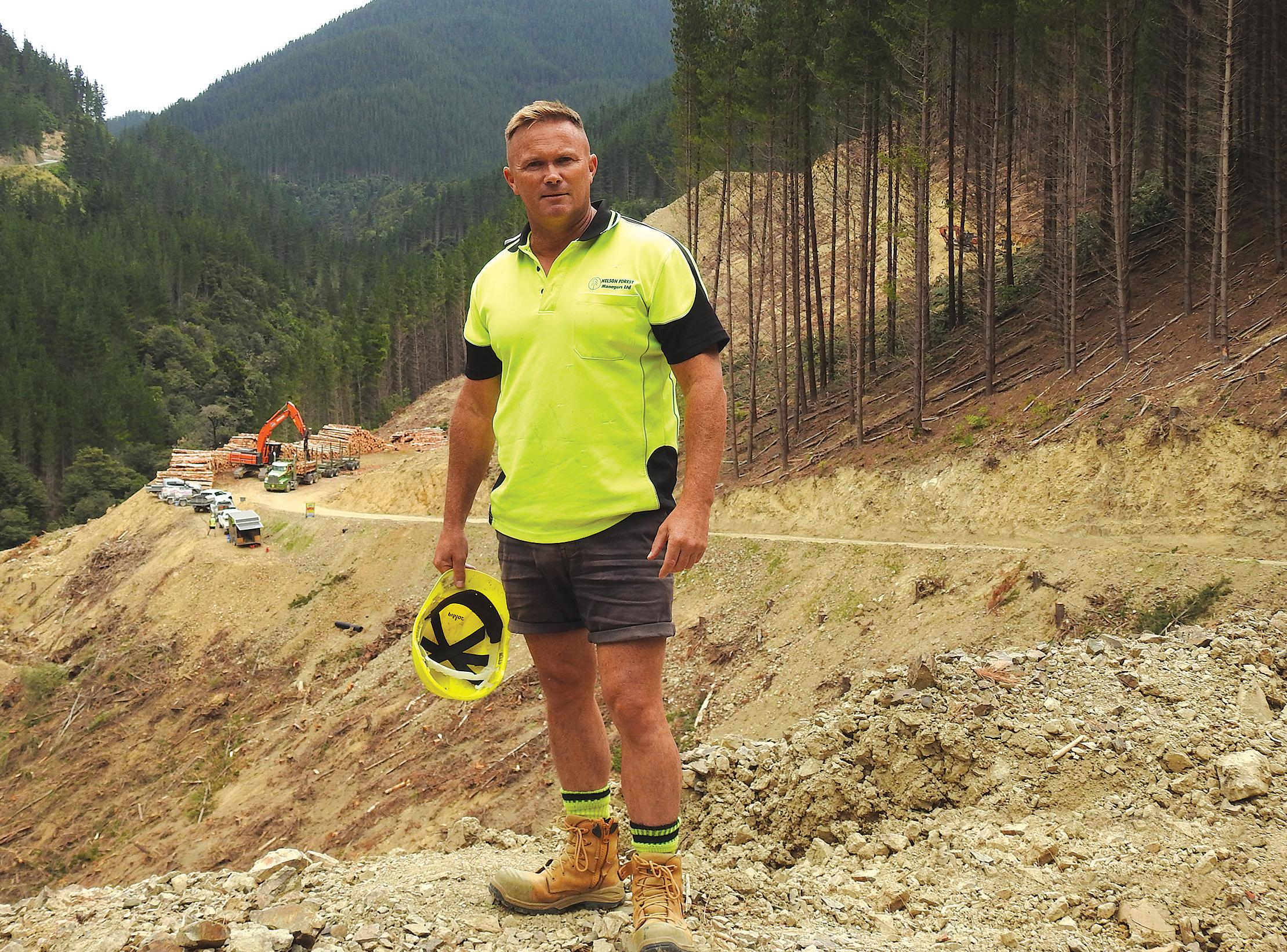
I could write a lengthy piece on his background ,it could easily take up pages and pages of the paper and you still wouldn’t know it all. The facts are, Matt’s had his hand in forestry since 1989 while working during school holidays for his father in a silviculture crew. The end of school saw Matt join a planting crew and, around 1992, he branched out with another young guy from Murchison and become self-employed.
1994 saw a big planting boom driven by incredibly high log prices. Matt worked in locations such as Hanmer Springs, Marlborough Sounds, outskirts of Blenheim and the Tasman side of Murchison. Often spending months at a time in one of these locations overseeing teams of 10-15 blokes
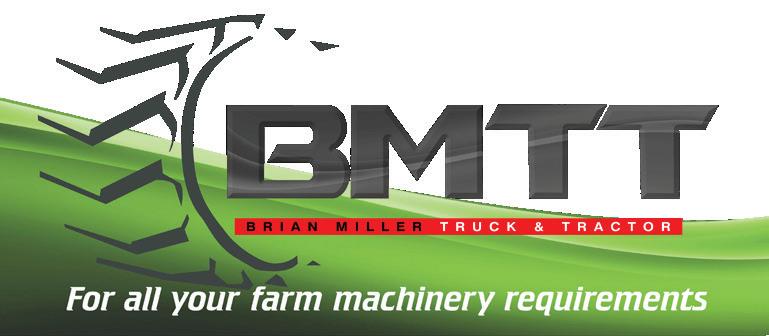
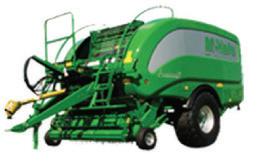

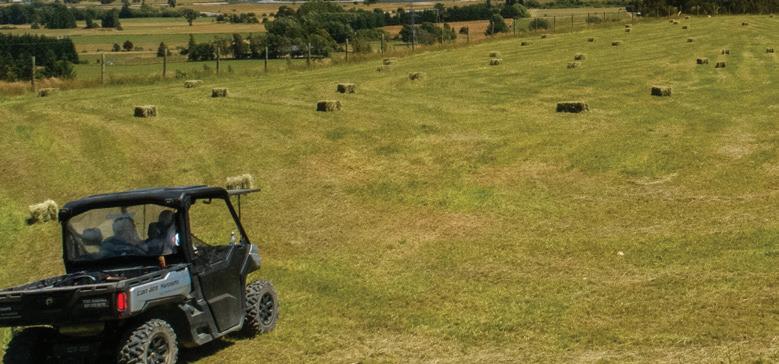



SEE PAGE 4

New and Used Tractors Top of the South from Karamea, Golden Bay, Murchison, Nelson Lakes, Blenheim, Nelson 32 King Edward St, Mouteka 03 528 9065 www.motfarm.co.nz ON farM SErvicE TEchNiciaN TOBY raNDaLL 027 233 9170 toby.randall@harcourts.co.nz www.tobyrandall.co.nz Team Toby Randall Top of the South rural “New ideas, Old school values!” LOCALLY OWNED AND OPERATED CIRCULATING TO 14,500 RURAL PROPERTIES IN MARLBOROUGH, TASMAN, NELSON AND WEST COAST FEBRUARY 2023 TOP SOUTH MONTHLY Farming Est 2001 Blenheim
Picton Tapawera Murchison Reefton Nelson Wakefield Motueka Takaka Collingwood Kaikoura Greymouth Karamea
ELOISE MARTYN
Diversifying
PH: 03 544 5723 Main Rd Appleby, Nelson Agents for Sales, parts and service for all makes and models 24HR CALL OUT
Matt Stuart has been involved in different aspects of forestry in the Top of The South since 1989. Photo: Supplied.
The Prime Minister’s resignation
ANDREW HOGGARD National President, Federated Farmers
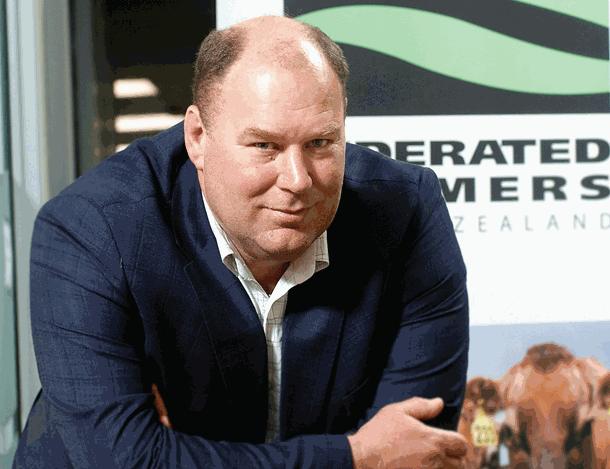
The resignation yesterday of Jacinda Ardern certainly took the nation by surprise. It will be interesting to see what the new leadership brings and how they will approach agriculture.
To give the Prime Minister some credit, she did meet and engage with the agriculture sector far more than any previous Prime Minister.
Whilst you may be thinking “well, what bloody good did that do us”, I believe outcomes could have been even worse. Amongst her caucus colleagues, she was more supportive of agriculture than many others.
As for her Cabinet, a good number of you are probably think-
ing I got too much whisky from Santa so let me put it this way: if you consider the current government as hostile to agriculture
then the PM would have been one the least hostile ones in it. I note that of the names put forward as likely replacements
Note from the editor
BARBARA STUART EDITOR
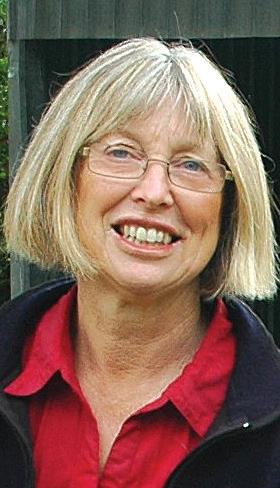
The unexpected announcement of the Prime Minister, Jacinda Ardern’s, retirement from politics should have been no surprise to many of us, but it was.
Most will acknowledge what a tough ride she’s had in the role and have felt uncomfortable by the personal criticism she’s had flung at her.
It wouldn’t matter who was in power throughout the arrival of Covid into our country they would have been unpopular.
Personally, I wish her well.
She has been a leader well versed in communication, but badly developed policy has dogged her.
If she was my daughter, I would
have hated watching her being subjected to the constant criticism of those who run the country whilst being a new mother.
‘Hats off to Jacinda,’ for taking care of herself and protecting her daughter from it all as she starts school.
However, the issues farming is facing won’t go away with a change of prime minister or a change of government.
We all still have a serious amount to do along with the rest of the world to slow down the impacts of intense weather events.
As a sector, land users will continue to react to poor legislation from central government and to disagree with idealistic policy that disadvantages our coun-
try. It’s going to take more than a new optimistic prime minister to galvanize science and the rural sector into being the innovators farming people can be.
It’s the adapting of science, time and legislation that rewards which will ensure we continue to have a stable climate plus the traditional farming advantage we enjoy in the world. Only by working together collaboratively will this happen. Meanwhile, I hope that you en-
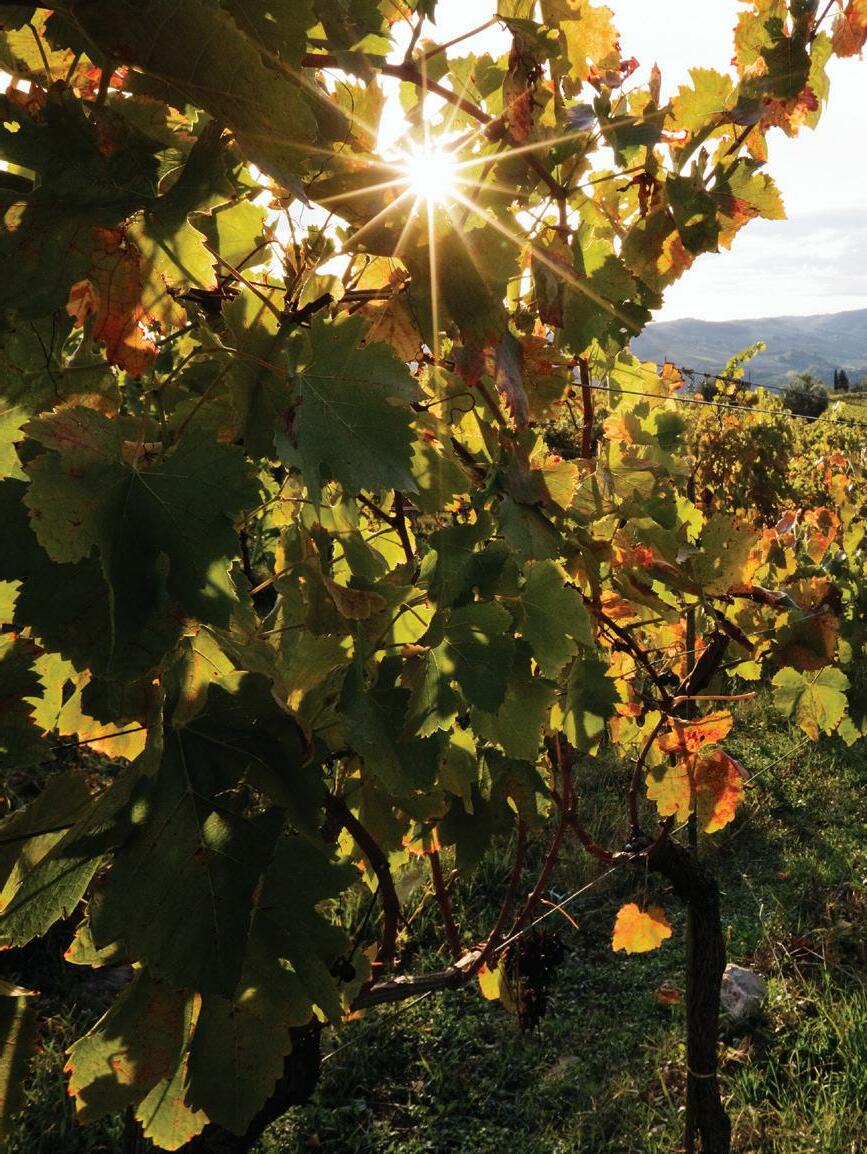
only one of them has had any involvement with the Food and Fibre Leaders Forum, and that was just one meeting.
This leaves New Zealand’s farming community in an interesting spot from now until October.
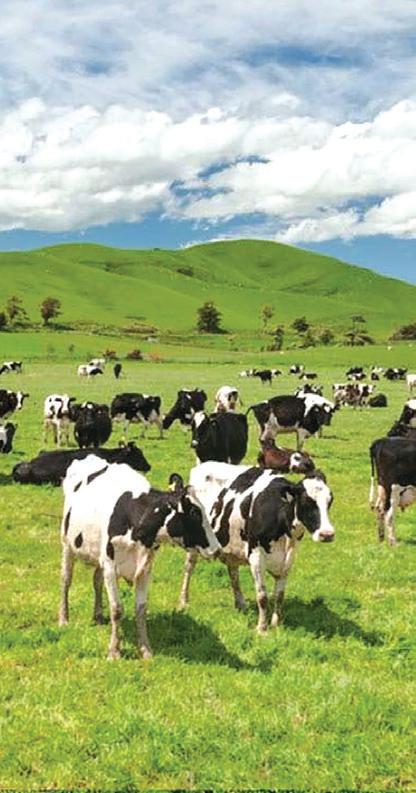
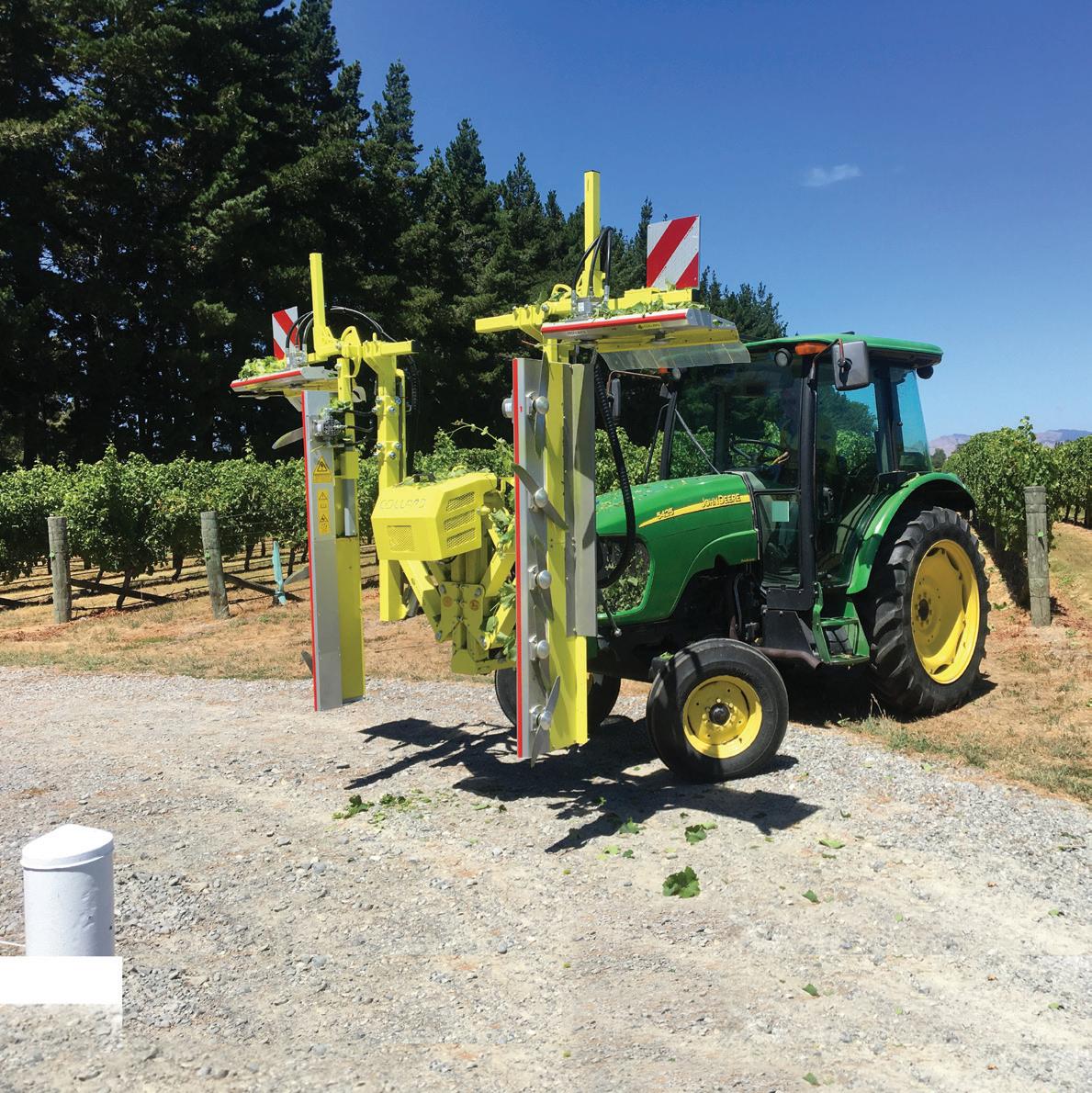
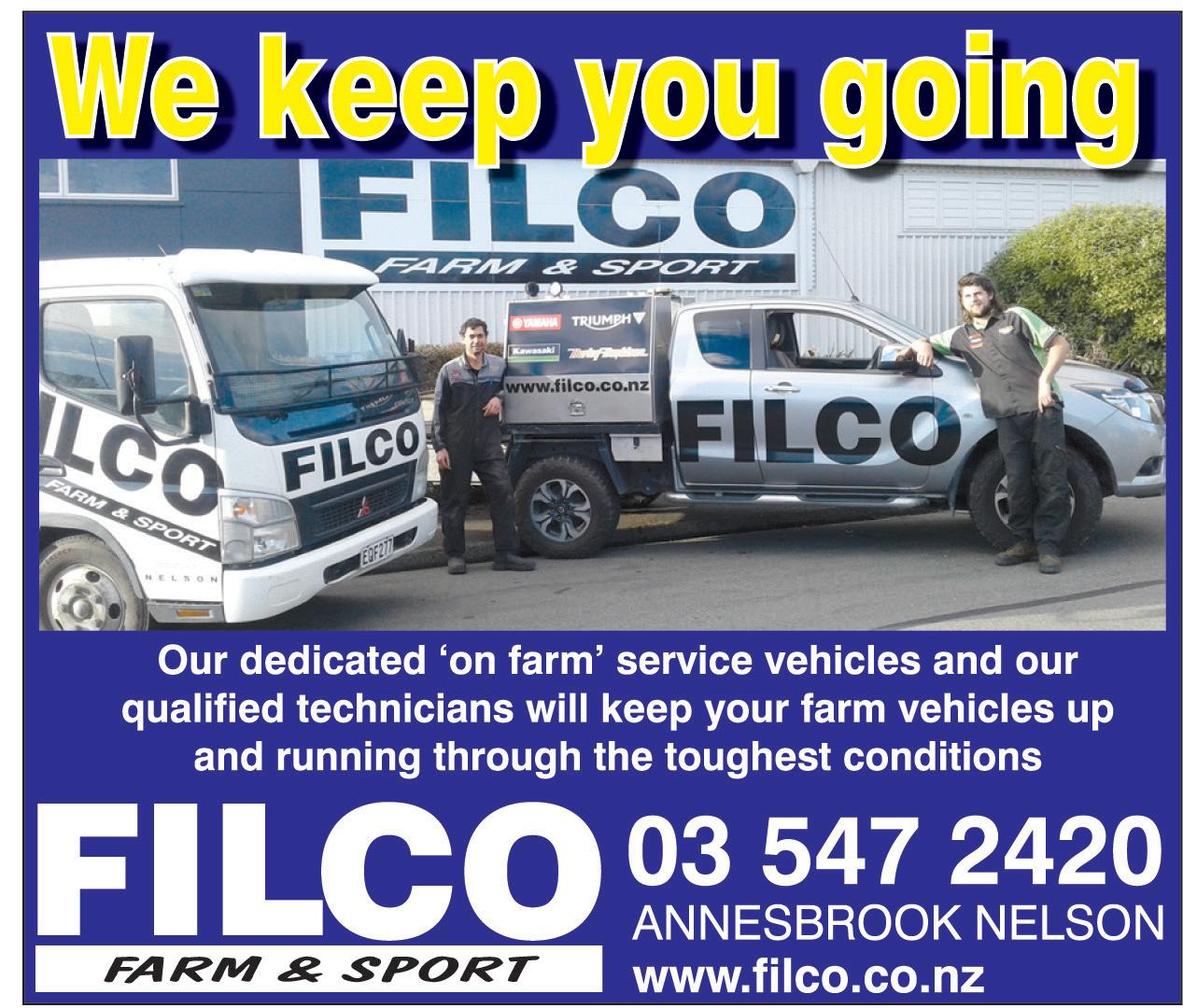
What will a new PM want to do before then? It’s worth noting, at the end of last year the PM had confidently talked about taking stuff off their government’s agenda.
Will that still happen? Or will they go hell for leather to pass pet projects before the election thinking it’s now or never?
Maybe HWEN could be passed now, in urgency, by a new leader who wants to see it happen or was supported by a faction of caucus that wants it to happen. One thing is sure: Federated Farmers will be watching closely.
joy this month’s stories. Management at Top of the South Media have employed two new people. They are Eloise Martin who’s written a number of this month’s stories and Danielle Brown. Both have a rural background. This means we have a solid team who come from the rural sector telling your stories. Please contact us at Top of the South Farming if you hear of something interesting happening in your area.
DEMAND THE BEST PROFILMATIC TRIMMERS Stainless steel blades provide exceptional cut quality Modular design provides cutting element configuration Fast operating speeds reduce tractor hours 03 578 5490 | www.bamarlborough.co.nz 2 February 2023 News Farming TOP SOUTH MONTHLY Contact us 100% locally owned and operated 563 Main Road Stoke, Stoke, Nelson 03 548 5900 52 Scott Street, Blenheim 03 928 4121 Circulating to 14,500 rural properties in Nelson, Tasman, Marlborough and the West Coast every month. Farming TOP SOUTH MONTHLY News news@nmf.co.nz Advertising Sales
Accounts Queries accounts@topsouthmedia.co.nz Got something to buy, sell or promote? Contact us: sales@nmf.co.nz Farming TOP SOUTH MONTHLY
Steve Page steve@nmf.co.nz Summa Donald summa@nmf.co.nz Danielle Brown danielle@topsouthmedia.co.nz
Andrew Hoggard. Photo: Supplied.
M. Bovis confirmed properties continue to decrease


STAFF REPORTER
The Mycoplasma bovis Programme, led in partnership with MPI, DairyNZ and Beef + Lamb New Zealand, continues to make good progress towards the eradication of the disease from New Zealand.
All properties in the highrisk area in Wakanui, which is under a Controlled Area Notice (CAN), have now been cleared of cattle. Testing will be underway shortly on the properties in the surrounding area. The CAN is on track to be lifted in mid-March. The number of Active Confirmed properties has decreased this week with two properties now cleared of M. bovis and are preparing to return to farming without restrictions.
There is one new farm infected with M. bovis which has well-established links to another already infected property.
“This brings the current number of Confirmed Properties to five (compared to 40 at the height of the outbreak), and we expect all of these farms to be cleared within the first half of 2023,” says Mycoplasma bovis Programme Director, Simon Andrew.
“While this progress is great news for farmers, there is still work to be done before New Zealand can transition to the next stage of the eradication effort which will primarily focus on bulk tank milk, and beef and drystock cattle surveillance.”
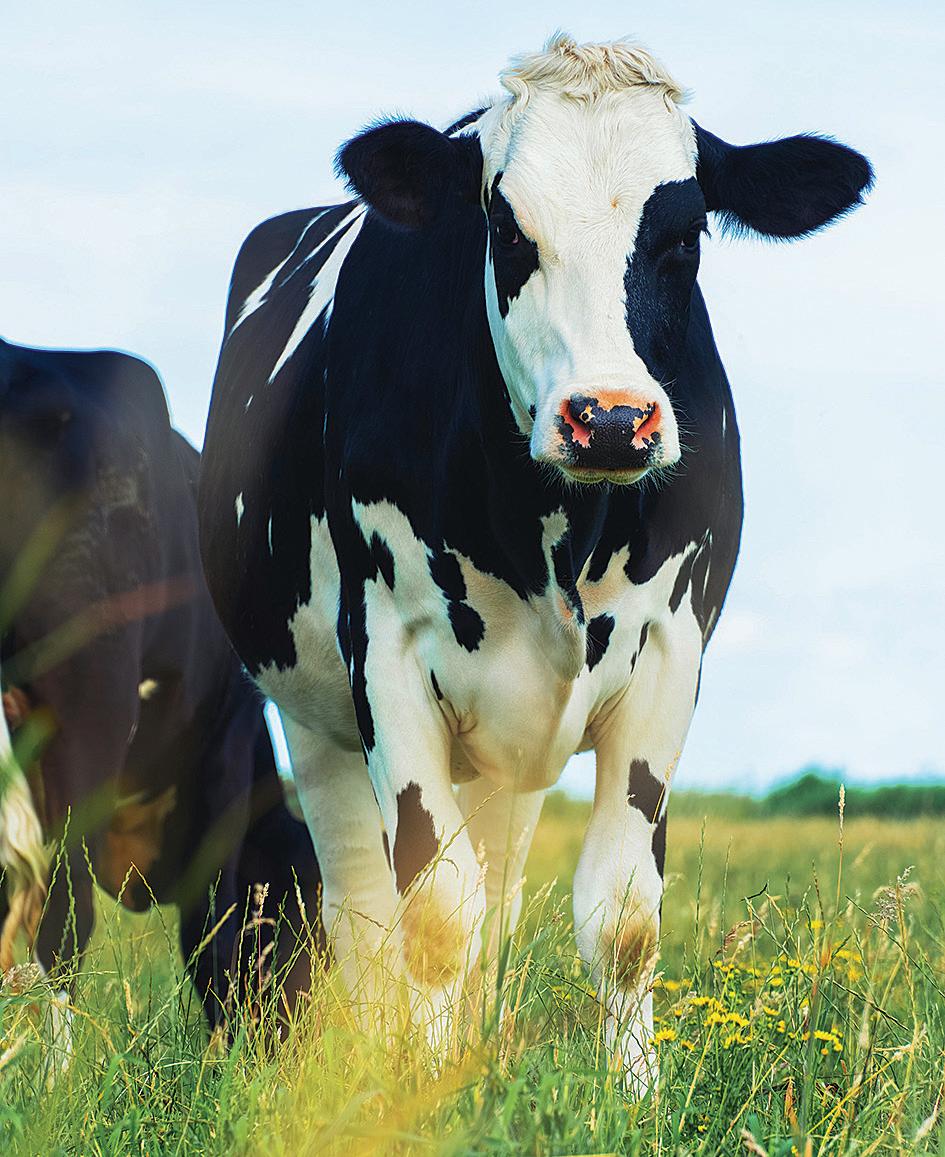
“Over time, this will provide us with the necessary information for us to be confident the country
is absent of the disease. It is expected that more infected properties may be identified before this shift.”
The new confirmed infected farm is a dairy grazing operation in Banks Peninsula, and it is linked through ownership and animal movements to a Confirmed Property in the Wakanui area.
“We are working closely with the farmer to depopulate the new confirmed property as quickly as possible before the milking season to minimise the disruption to the farmer’s business.”
Mr Andrew says, as well as the progress made towards clearing the Wakanui area of infection, the investigation into the second strain identified from a Confirmed Property in Canterbury in October 2022 is ongoing.
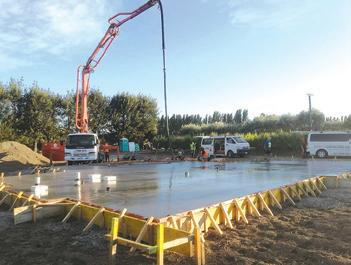
Cashmere comeback
STAFF REPORTER
New Zealand Cashmere have received the backing of the Government for ‘Sustainably Beautiful,’ a project focussing on restarting the cashmere industry.
Futures Fund.
The project will assist farmers with advice and support to enable those interested to enter the industry in a way that they can sustainably farm cashmere-producing goats within their existing farm systems.
ically returns between $110$150 per kilogram in New Zealand.
TOW BEHIND MOWERS
The three- year project led by New Zealand Cashmere has received a $900,000 government contribution to be distributed throughout the project through the Ministry for Primary Industries
From:
Sustainable Food and Fibre
Globally the cashmere fibre industry is valued at $2 billion and has a strong, longterm global demand at the top end of the luxury fibre market. The fibre is not a commodity fibre and histor-
HILUX, HIACE AND EVERYTHING IN BETWEEN
New Zealand Cashmere is interested in hearing from farmers who are wanting to take part in the establishment of herds as part of their farm systems. It is not expected that farmers will go 100% into goats; for some farmers it might be that the goats supplemented the shearing costs of their crossbred sheep.
Most farmers have only had
dealings with feral goats and commercial goats are very different. Commercial goats are both a low-input stock class and low-cost to get into. There are many benefits of introducing goats into farm systems such as improved pasture utilisation and improvement in clover cover -which benefits other stock classes. Goats are also a good form of biological weed control which reduces the use and cost of chemical sprays.
Made in NZ Kohler engines FROM $4,160+GST
LOG SPLITTERS



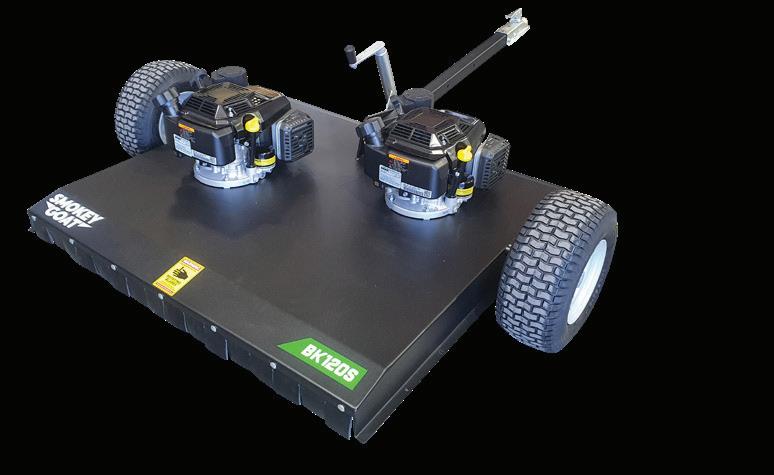

Large range in stock, motorised & tractor powered
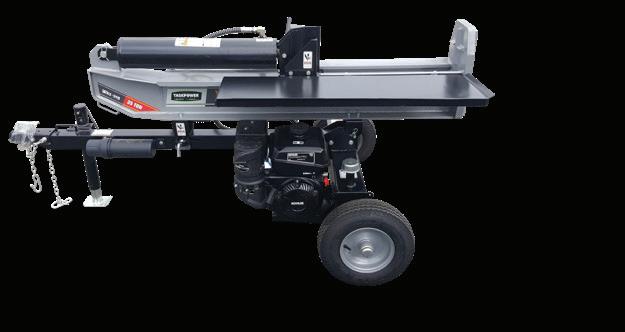
CHIPPERS AERATOR
CHIPPERS AERATOR


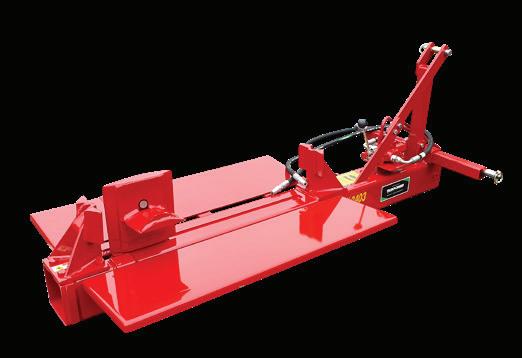

Available in 2.1m -3.6m widths - NZ


Made

FREE DELIVERY to Nelson / Blenheim / Takaka / Westport / Greymouth
Visit us at 109 Bolt Rd, Nelson
Visit us at 109 Bolf Rd, Nelson

2021 Date: 03/09/2020 No. of pages: 1
Kevin Quinn Phone: 022 639 2655 Size: 48mm x 86mm
68 Falsgrave St, Waltham 03 378 3932 | 0508 698 267 parts@nzvanspares.co.nz nzvanspares.co.nz | nzutespares.co.nz FREE DELIVERY to Nelson / Blenheim / Takaka / Westport / Greymouth Visit us at 109 Bolt Rd, Nelson 2.1m -3.6m widths - NZ
BEHIND MOWERS Nelson / Blenheim / Takaka / Westport / Greymouth Visit us at 109 Bolt Rd, Nelson PTO Chippers - 3.5”, 5”, 7” and Kohler engines FROM $4,160+GST LOG SPLITTERS
TOW BEHIND MOWERS Nelson / Blenheim / Takaka / Westport / Greymouth Visit us at 109 Bolt Rd, Nelson stock, motorised & tractor powered PTO Chippers Kohler engines FROM $4,160+GST LOG SPLITTERS CHIPPERS TOW BEHIND MOWERS Nelson / Blenheim / Takaka / Westport / Greymouth Visit us at 109 Bolt Rd, Nelson Large range in stock, motorised & tractor powered Made in NZ Kohler engines FROM $4,160+GST LOG SPLITTERS
TOW
CHIPPERS
News Farming TOP SOUTH MONTHLY February 2023 3
Photo: Jean Carlo Emer on Unsplash.
New Zealand Wine, Altogether Unique is New Zealand Winegrowers’ new global brand platform, highlighting the very best of the New Zealand wine industry.
Incorporating the latest consumer insights, New Zealand Winegrowers worked alongside creative agency Many Minds to define its brand essence and create an accompanying new visual identity.
“We know the combination of New Zealand’s location, people, and climate is simply magic.”
“There were key words that came back from the insights, like our people, nature, and purity, which formed the foundation pillars of the New Zealand Wine essence of purity, innovation, and care.”
To convey the essence of New Zealand wine, a short storytelling video has been created that aims to create an emotional connection to New Zealand wine.
“This storytelling asset will tell the foundational story of New Zealand wine through the lens of the key pillars of purity, innovation, and care – aspects that make New Zealand
wine and the New Zealand wine industry, so unique and special,” says Charlotte Read, general manager marketing, New Zealand Winegrowers.
“With global activity returning to ‘normal’, it’s more competitive than ever to have voice of the New Zealand Wine brand heard, and a clear premium brand message is essential. Creating a compelling brand positioning for New Zealand Wine is important as we seek to engage and motivate evolving wine-drinking audiences.”
The short clip features Kiwi actor and winemaker Sir Sam Neill of Jurassic Park and The Piano fame, who has been a part of the New Zealand wine story for over 25 years.
Established in 1993, Sam is the proprietor of Two Paddocks, a family vineyard based in Central Otago, New Zealand. New Zealand Wine, Altogether Unique is New Zealand Winegrowers’ first brand refresh since 2006, and the new visual identity will roll out across global markets from this month.
New global brand for New Zealand’s wine Project aims to put money back in farmers’ pockets
STAFF REPORTER
New Zealand strong wool could bring a sustainable bounce back into soft upholstery – and woolgrowers’ bank accounts – through a new project seeking an alternative to synthetic fillers.
The Ministry for Primary Industries’ (MPI) Sustainable Food and Fibre Futures fund is committing $790,000 over three years to a project led by Wisewool aimed at increasing the market potential of woollen knops – the small, light fluffy balls used as a filler ingredient.
MPI director of investment programmes, Steve Penno, says the project has the potential to improve returns to strong wool producers and provide an environmentally-friendly alternative to existing products made from synthetic materials.
“Woollen knops can be used in baby bedding and insulated clothing, as well as mattresses, so it’s a versatile product with plenty of scope.
“Wisewool will also conduct research and development of needle-punched wool blanketing, which can be used in residential
Diversifying is the future of forestry
FROM PAGE 1
planting, pruning and thinning trees covering hundreds of hectares.
With a passion for the industry and a desire to learn more about forestry, Matt made several visits to France, Germany and Russia to see what learnings from their harvest and planting systems could be incorporated into some of the systems Matt was running here in New Zealand.
“These countries run some of the biggest and most productive woodlot systems in the world” explains Matt. “They use a very beneficial rotation system that consists of only harvesting selected trees which results in better wood and much less soil erosion”
and commercial furniture upholstery, insulation for the apparel industry, bedding, and futon markets,” Penno says.
He says one of the main drivers for the investment is the project’s potential to provide an alternative, high-value use for New Zealand strong wool.
“We’ve asked Wisewool to research consumer price preferences to see if the knops can be sold at a price that gives a good return to farmers.”
Wisewool chief executive Henry Hansen says the project will predominantly focus on working out the right components and blends to create a range of woollen knops for different products.
“We’ve discovered that when used in large quantities as a filler ingredient, woollen knops increase the bounce-back and compression resilience of the fibre,” Hansen says.
He says Wisewool will continue researching and comparing the compression resilience of both wool and synthetic fibres and will adjust its carding machines to produce various wool knop blends.
“We’ll also conduct an environmental impact analysis and in-market testing.”
It became clear to Matt that it would be a wise move to collaborate and bring all his past hands-on experience and overseas learnings together into a central point.
So, in 2000, Nelson Forest Managers was born, with the main focus being delivering a solid return to the tree owner. These days Matt and his team provide many in the Top of the South with silviculture, carbon work and sustainable forestry management.
Carbon work isn’t new to Matt, he has been involved in Emissions Trading Scheme (ETS) work since 2010. A project on the outskirts of Brightwater saw approximately 140 hectares of land be planted in a diverse range of trees in three stages from 2010-2014. The tree varieties were redwood, douglas, larch, cedar, macrocarpa, lusitanica, oak, maple, walnut, blue gum, black wood and more commonly radiata. The range of trees all serve different purposes however one of the main goals of having different varieties is to prevent
tree pests and disease spreading especially in the face of climate change.
Other trees were put in for their fire-retardant properties, some such as oak and redwood were put in for their enormously beneficial carbon credits once established and lastly the Kiwi favourite pinus radiata were put in to create some cash flow while the carbon credit-rich trees slowly grew.
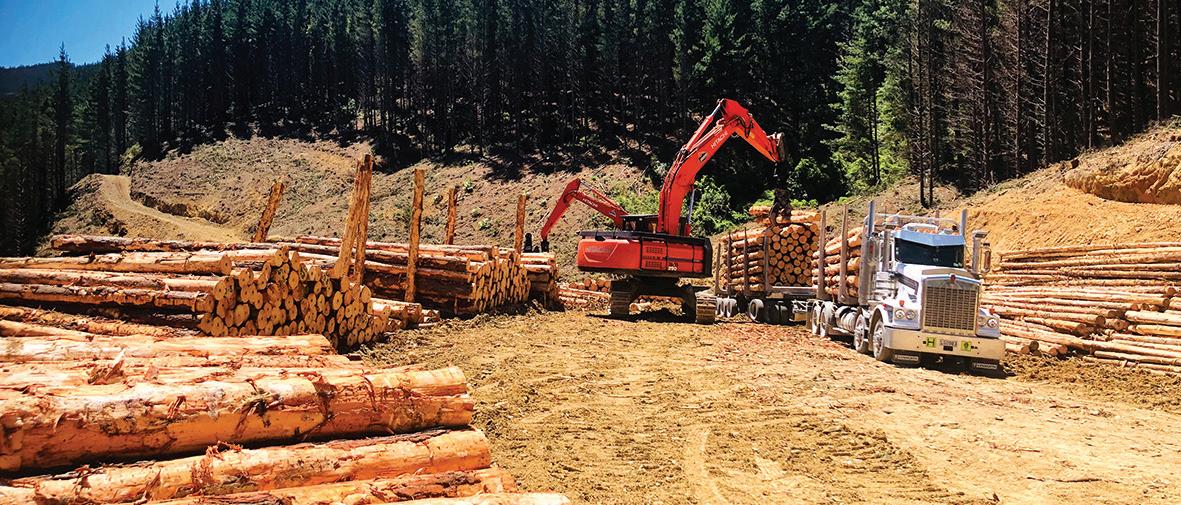
looking at harvest options to decide what option is best for them.
“The most important thing is that they look at all options not just export, there are many good domestic options.”
Alongside the marketing, Matt spends a great deal of time coordinating harvesting.
“The successful management of harvesting comes down to planning.”
Matt explains, and it seems there is a lot involved – ensuring everything is checked off under the National Environment Standards, organising log transportation, liaising with forestry crews and working with the tree owner.
It’s a good thing Matt has been doing this for thirty-one years as it really does require some experience.
Matt Stuart
Other benefits of this project to the landowner has been the mass reduction of weeds and black berry that previously were a problem on the low producing hillside property.
The long-term future of carbon credits remains unclear, however Matt has some good and interesting advice.
“Focus on small pieces of unproductive land and find someone who knows what they are doing.”
In fact Matt points out that many tree owners can harvest a large portion of their trees and still stay in the ETS – (can achieve tree canopy cover of at least 30% in each hectare at maturity.)
Marketing is key for Matt.
“Nothing makes me happier than giving a client, who has been waiting thirty years for their trees to grow, a good return,” Matt adds. And it can be a tricky situation for those
A challenge is always welcomed by Matt, but recent rising costs in transporting logs, local and export, while still finding the tree owner a good return has been a balancing act.
Another challenge is an industry problem – the skilled labour shortage.
In particular, Matt needs experienced tree planters for the up-coming planting season starting in May and is exploring a range of options to find a solution.
Regardless of the challenges Matt really enjoys his work and says he is lucky to work in an industry he is passionate about.
“The best thing about the job is getting out and mixing with the tree owners in person, it’s also really neat to support and offer local employment. I learnt a lot about the industry from my father and it has a strong future. I’m hopeful one day my kids can carry on what Dad and I have here and enjoy it like we do.”
4 February 2023 News Farming TOP SOUTH MONTHLY
Logs being loaded out on a skid site in Lee Valley, Brightwater. Photo: Supplied.
The most important thing is that they look at all options, not just export
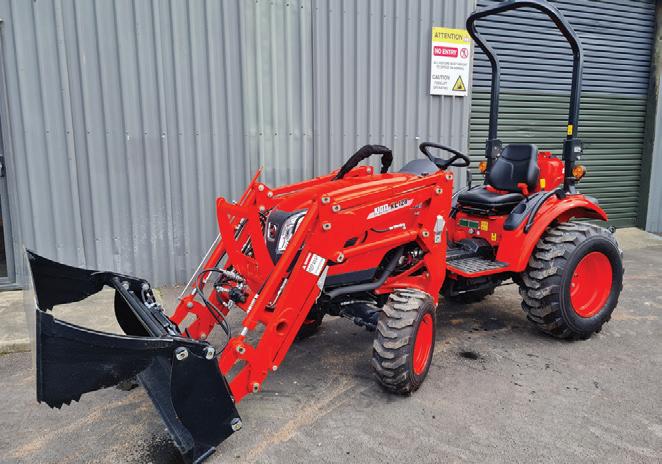


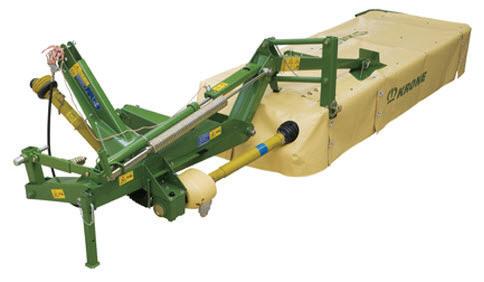
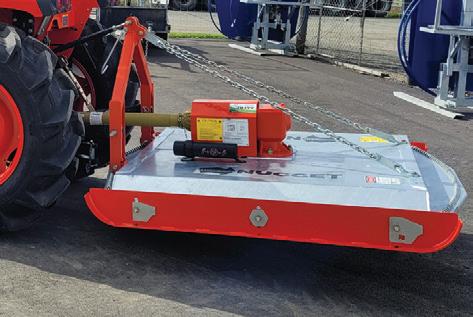
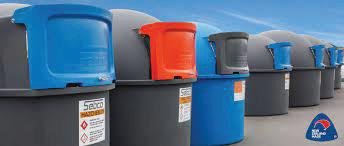


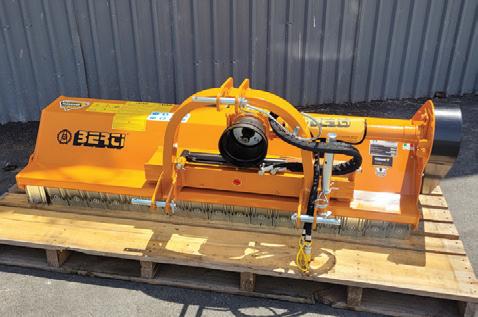

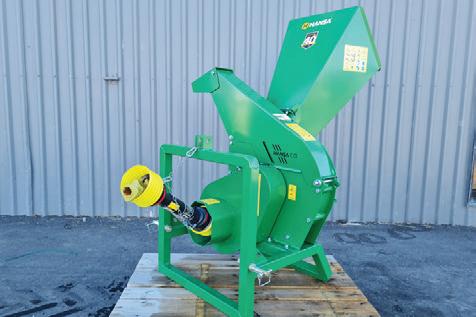
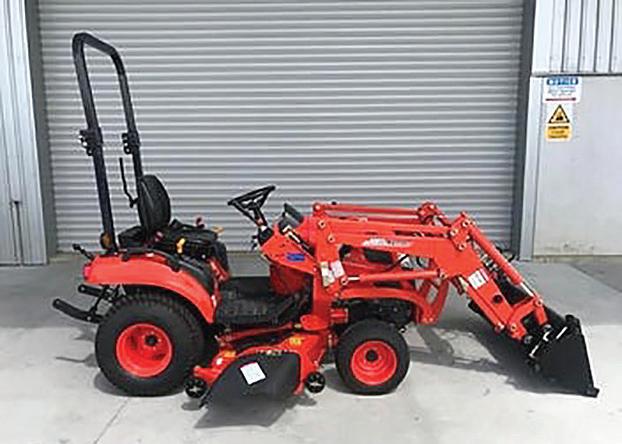
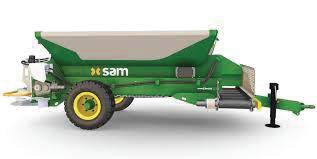
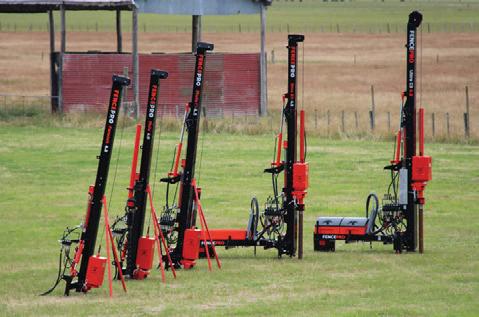
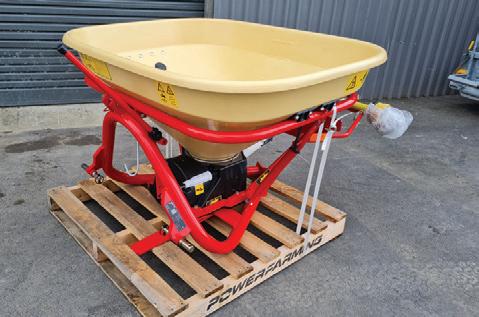

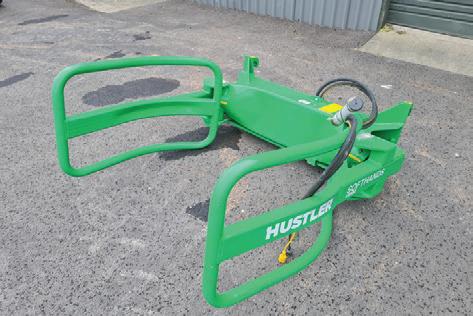
PH: 03 544 5723 Main Rd Appleby, Nelson 24 HOUR CALL OUT AVAILABLE TRACTORS AND FARM MACHINERY Full service facility for all makes of tractor, baler, mower etc... Parts for all makes and models - All oils, lubricants, filters and wearing parts BMTT FINANCE AVAILABLE ON ALL NEW AND USED TRACTORS AND EQUIPMENT Nelson Dealer for Sebco Fuel Tanks
JCB
Krone
Husqvarna
Sam
in stock
Howard
1.2 – 1.8mt
Vicon
$4,480+GST
$10,500+GST Rata
$1,730+GST Hustler
$3,890+GST Advert Farming TOP SOUTH MONTHLY February 2023 5
Kioti CS2610 with FEL $23,730+GST Kioti CK3310 with FEL $33,980+GST Kioti CK3710 with FEL $36,980+GST
55Z-I Mini Excavator from $98,000+GST
Easy Cut R320 Mower $31,500+GST
Ride-on Mowers from $4,286+GST
Orchard Spreader $55,000+GST Now
Berti
Park P 180 Mulcher $12,765+GST
Hansa C13
PTO Chipper $6,083+GST McIntosh Double Bale Feeder with square bale kit
$25,740+GST
Slashers
from $3,675+GST
PS403 Spreader
Fence Pro Post Drivers from
Implements from
Soft Hands
Drift diving season in full swing
JACOB LUCAS
The stable weather period we are currently in means an ideal opportunity to undertake fieldwork for monitoring our freshwater species.
All Fish & Game regions regularly monitor fish and game bird resources, using a range of techniques to gain important species data.

Game bird trend counts, and banding programmes are undertaken over summer, and regional staff are currently actively engaged in a busy schedule of electric fishing and drift diving work for fish species.
Drift diving aims to undertake a count of trout or salmon within historical sites in river systems. Comparisons can be made between years to determine how the fishery is looking, and what
factors are likely responsible for increase or decreases.
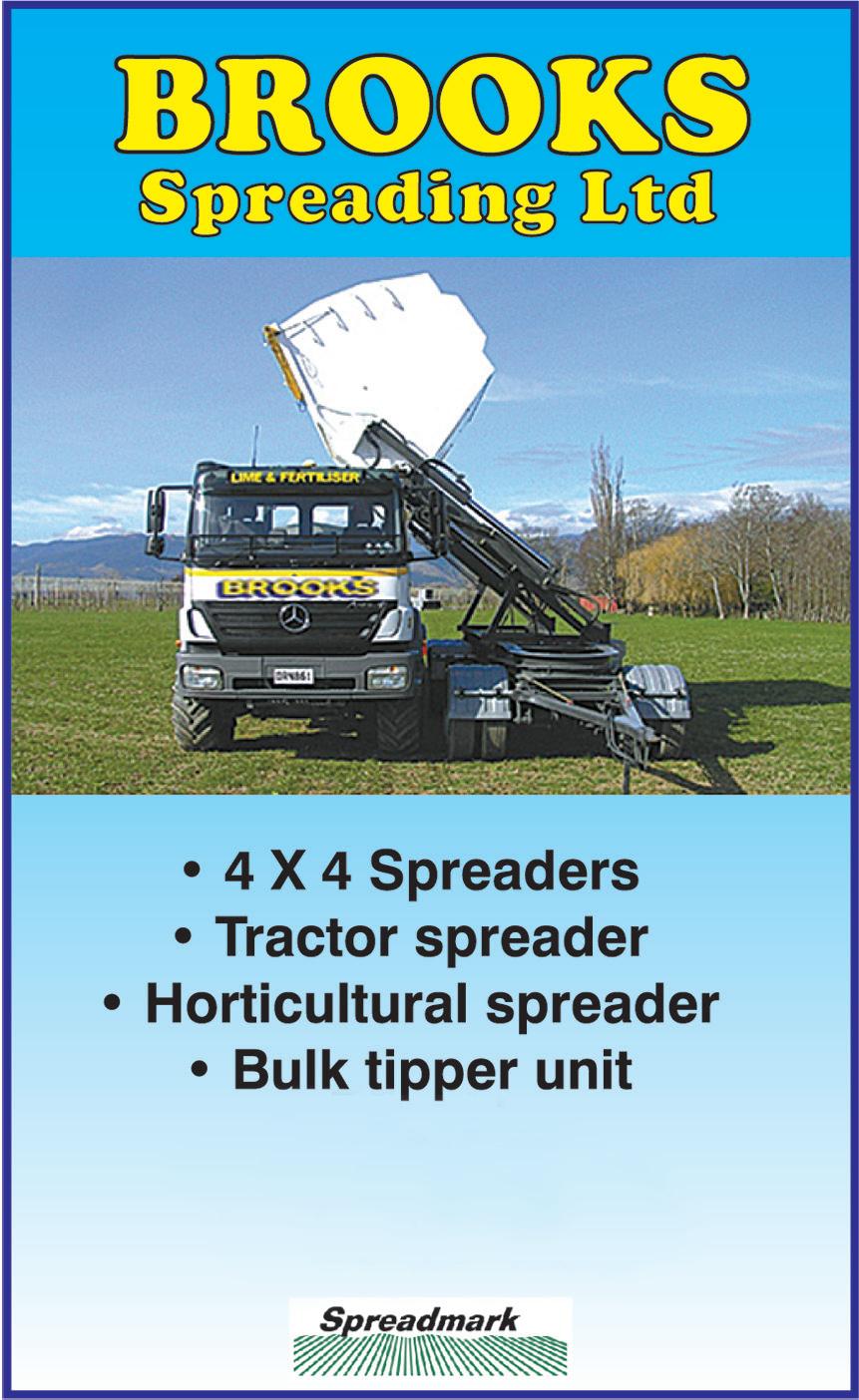
Most weeks over summer when conditions are suitable, you’ll find Fish & Game staff donning 7mm wetsuits and other assorted underwater gear and floating down a river counting trout, and, at the same time, categorising them into size cohorts and sometimes species. Smaller rivers often only require 2-4 divers, however larger rivers such as the Wairau, Motueka, or Grey require 8-10 divers to ensure sufficient coverage.
The deal is you only count fish once they have gone past you, and communication between divers is essential to make sure there are no double-ups and all parts of the river are surveyed.
Locally Owned & Operated
Most of the time the fish know you’re coming and have retreated to the deepest part of a pool or are already hiding under ledges. On some occasions they are pushed downstream and group up ahead of the divers, only to bolt through towards the tail of the pool, meaning some
pretty swift counting for the diver they flee past!
Regardless of what the trout are up to, drift diving is a great way to see the general health of the river. Habitat qualities, invertebrate life, substrate, algal levels, native fish observations and water clarity are all best seen through an underwater lens.

At times this information can aid in some of our advocacy functions, especially as many rivers are dived annually and have records dating back to the 1980’s. We also see some pretty impressive fish, trout and otherwise. Some of the eels we see have seen have been on this earth longer than we have and demand noth-
ing but admiration and respect, with the occasional one giving us a good hurry up if we get too close!
Celebrating 100 years of racing
The Rotoiti Power Boat Club will be celebrating its 100 year centenary at the local Regatta 11-12 March 2023 on the spectacular Lake Rotoiti Power Boat Circuit.
Already New Zealand’s best-attended regatta and always a favourite among drivers and spectators, the last few years have seen some of the biggest fields in decades
and the most exciting racing despite the Covid disruptions.
Local organiser Joe Blakiston says this year the club will be hosting the Final of the Hydro Thunder GP Hydroplane series, the NZ Formula 1 series final, Matt Morrison Memorial Trophy for Unlimited Inboard racing runabouts as well as a full field of racers

down to the Clubman and Junior series, and close racing is guaranteed across the weekend.
With the Rotoiti Power Boat Club being formed in 1923 and the first race being a marathon to the top of the lake and back, with the winner taking five hours.
Things have certainly progressed with the 250 kph GP
hydroplanes probably able to do it in 10 minutes.
The close association with DoC and a core group of local club members has been a key to this event becoming more popular as the years progress.
Further information will be available on the club Facebook page as the event draws nearer.

0800 542 383 Dean 027 431 4090 Ben 027 571 6003
• GRAS S HARVESTING • BALEAGE • HAY • PIT SILAGE • GROUND WORK • SPRAYING • AIR SEEDER DIRECT DRILLING • MAIZE PLANTING & HARVESTING • EARTHWORKS • CARTAGE • SITE WORKS • DRAINAGE Paul 027 422 5893 Phil 027 372 9864 accounts@lesliecontracting.co.nz 6 February 2023 News Farming TOP SOUTH MONTHLY
Fish & Game staff drift diving to count trout and monitor other species. Photo: Jacob Lucas.
Hydroplane competitors race across Lake Rotoiti. Photo: Supplied.
Game Changer. Vineyard/Orchard Spreader
• Made to meet the needs of modern vineyards/ orchards, with a lower profile and narrower width and excellent versatility.

Spreads everything from orgainic matter such as compost, green matter and mulch out the front, to chemical fertilisers like superphosphate, lime and urea out the back. The SAM controller sits in your tractor and allows you to choose between spreading or banding at the touch of a button.

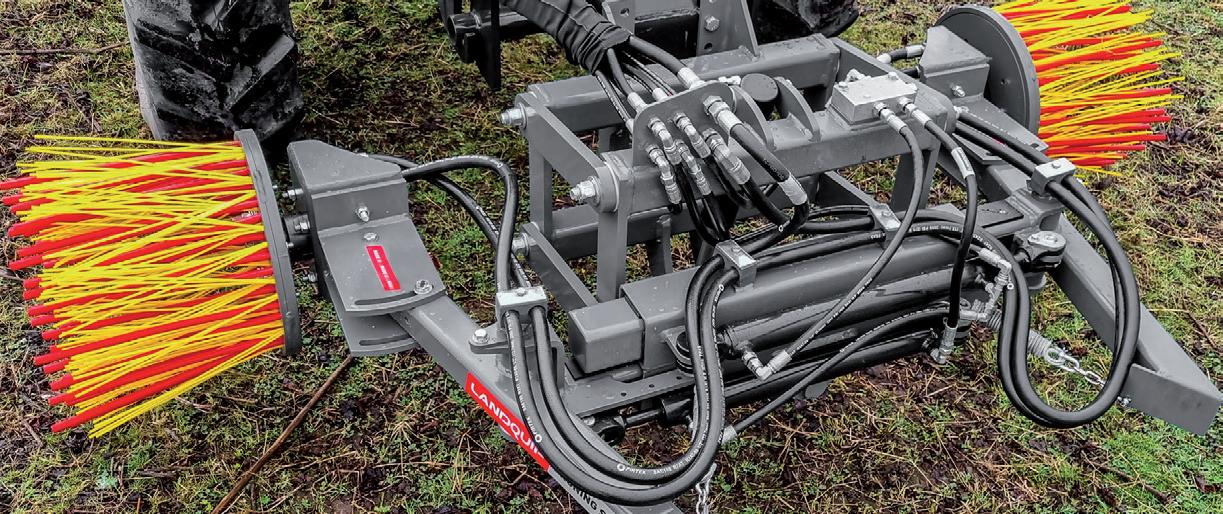


Strong. Simple. Smart. 6 Tonne SAM Fertiliser Spreader

Practical design and easy to operate

• Extreme reliability and mega-solid construction, providing an accurate spread pattern, easy maintenance.

Evenly and accurately spread chemical fertiliser, including; superphosphate, urea and lime. Includes mudguards, remote greasing, roll top cover, swivel coupling and a tyre upgrade.

INSTOCK NOW!
Landquip vineyard mowers are here! Made in NZ for NZ vineyards. Dual-purpose, mechanical de-budder/ pruning sweeper! Power Farming Marlborough Blenheim | 3535 SH 1, Riverlands | 03 573 7089 Trevor Youngman Sales 027 231 1186 Bryan Simpson Parts 027 362 1429 David Jeffery Sales 027 291 9576 Russell McGhie Service 027 365 1617 Terms & conditions apply. Images may differ from product advertised. Advert Farming TOP SOUTH MONTHLY February 2023 7
After two years the Rai Valley A&P Show is back
ELOISE MARTYN
The Rai Valley A&P Show has a long history of bringing the local Rai community, as well as families from surrounding areas such as Blenheim and Nelson, together for a fantastic family day out filled with fun and variety.
2020 saw the show go ahead just in time before the first Covid pandemic lockdown. In 2021 the show was unable to be held due Covid related restrictions such as gathering size and vaccinations. The Covid Omicron wave that rippled through New Zealand in 2022 was the reason there was no show held that year.
“After two years, it’s back! It’s so awesome to have the show on this year, we are all excited” says Libby Archer, secretary and treasurer of the Rai Valley A&P Show committee “The show has been missed. There is no other big family event in the area that brings everyone together they way the show does.”
This year the show committee was thrilled to receive the support of a local engineering, mechanical and hydraulic outfit, REM Limited.
REM Limited have sponsored by donating funds to enable the committee to engage in more paid advertising of the show. Other costs such as prize money,
eftpos machine hire, portable toilet hire and catering for the team of 80-100 volunteers and judges on the actual day, have been well supported by other local business and individuals.
“The other businesses and people who contribute is what makes our show possible; we really couldn’t do it without them,” adds Libby. Recently, a successful hay fundraiser took place which consisted of the show’s neighbouring paddocks being cut and sold with the proceeds going towards the show’s costs.
“We had locals come with their tractors who donated their time and machines, we also were grateful to Donaghys Crop who donated the bailing twine, the hay fundraiser is a real team effort,” Libby explains.
In total the team ended up with 1,768 bales that are being sold for $7 each.
The day has something to offer anyone and everyone. There will be machinery, agricultural displays, animals big & small, amusements and food and trade stalls. At 12:30pm Mayor Nadine
2023 and planning for the future
DAMIAN O’CONNOR
Biosecurity and Agriculture Minister
2023 is certainly up and running – not that things on the land stop for Christmas.
It’s been very wet on the North Island and hot down South, where I was able to get the hay off at home near Motueka in early January.
As I write, I’ve been in Europe wearing my Trade and Agriculture Minister hats (leaving the sun hat behind).
I’ve just attended the World Economic Forum at Davos in Switzerland.
It’s forward-thinking forum. To my mind it’s one that matters because the world is facing a number of major overlapping challenges: protectionism, climate change, war in the Ukraine, food security, a pandemic and inflation.
Addressing these requires on the one hand the resolve to stick to the principles that have lifted much of the world out of poverty, and on the other hand a change in our thinking so we can tackle the likes of climate change - the
impacts of which we’re already experiencing.
One big takeaway was that more than ever, people accept that we need to do things differently.
Another was that the market is ripe for agri-businesses and tech companies who can deliver solutions around sustainability and in particular climate change. It should not be news to any farmer that these are the areas that the government is focussed on. Examples are the significant investments like $339 million for the new Centre for Climate Action on Agricultural Emissions, and the Sustainable Food and Fibre Futures fund. The latter has now seen over $500 million co-invested with businesses across more than 230 projects.
The key to keeping trade doors open and maximising our market potential is staying ahead of the curve in terms of sustainability and climate credentials. Customers are becoming increasingly concerned about the carbon footprint of their purchases. At a time when consumers abroad are increasingly being told to by local, we need to give them every reason to buy our products.
While in Europe I was asked about our efforts on climate change as well.
The government’s plan to price agricultural emissions by 2025 has stimulated healthy debate at home. Some have said it shows that we don’t value the contributions that our farmers and growers make to New Zealand. That’s just not true.
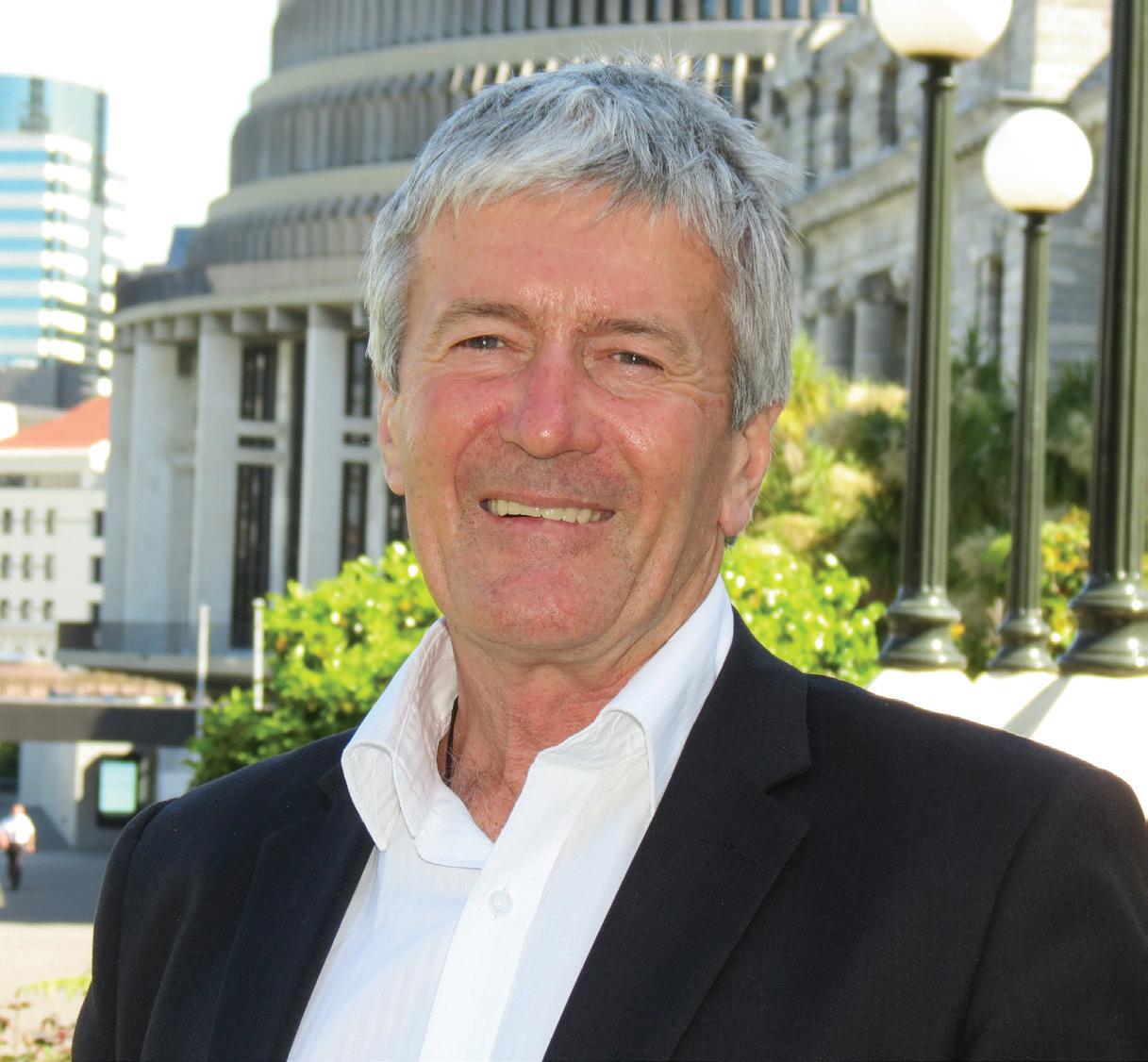
It is because we value our farmers and growers that we are working with industry through the He Waka Eke Noa partnership to create a bespoke system to price agricultural emissions, rather than the alternative of putting farmers and growers straight into the Emissions Trading Scheme. This government wants to support farmers to adapt to climate pro-actively, rather than trying to catch up once we’ve already fallen behind.
Another thing that struck me in Europe was how they regard inflation. They very much see the direct connection of it to Russia’s invasion of Ukraine, which has lifted fuel prices, fertiliser costs and created food shortages that will be felt greatest in the developing world. All of which comes
Taylor will be joining in for the grand parade. “The grand parade is an opportunity for you to sit and view all the vintage cars, horses and other amazing animals and machines involved in the show,” explains Libby Past shows have attracted crowds of around three thousand. This year the team is hoping to host between three and five thousand. Libby says that even though there hasn’t been a show for a few years the committee is organised, experienced and excited to be back “Come and compete in the Rai
Challenge, or watch the horse events and enjoy the rides, it’s always loads of fun,” Libby says with a huge grin.
87th Annual A&P Show in Rai Valley
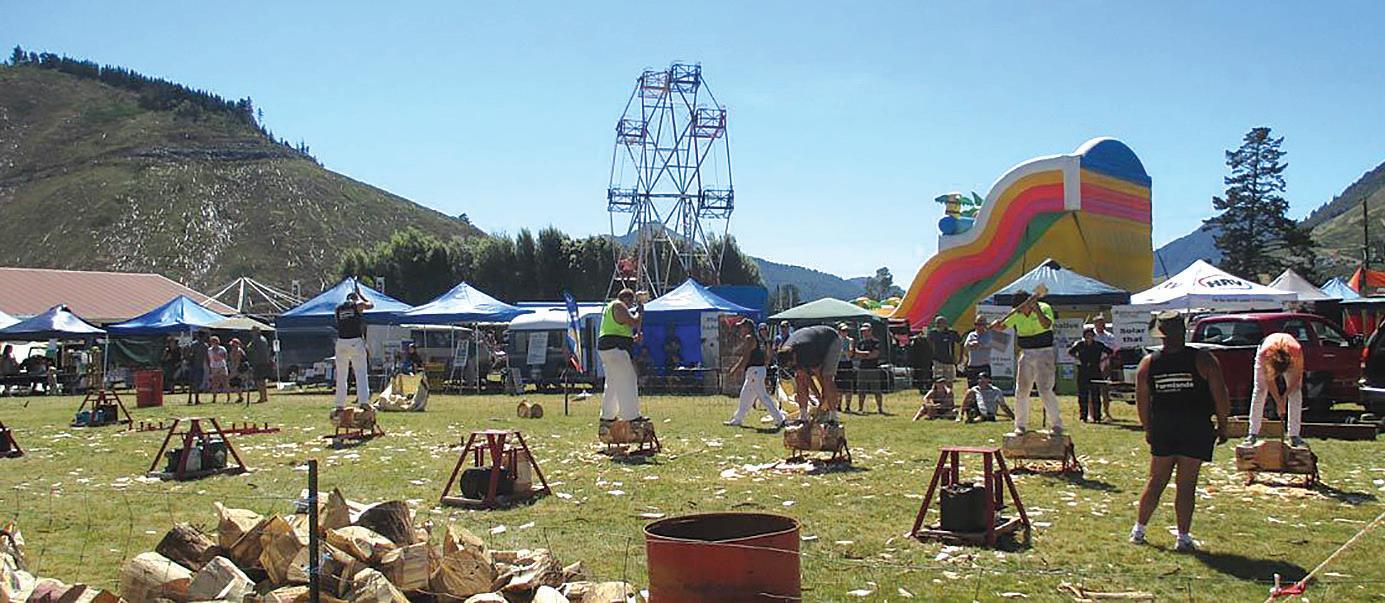
Saturday 4th March 10am-4pm Carluke Domain, Carluke Road, Rai Valley Adult $10.00 ea. / Child 5-16years $5.00 ea. 021 450205 www.raivalleyshow.co.nz
on the back of the pandemic’s strangling of global supply chains.
Trade continues to be a priority this year. We are working to bring our Free Trade Agreement with the UK into force and we will also be looking to sign and take the first legislative steps toward ratifying the EU-FTA. These are both very good deals and will open the door for our great kiwi
businesses to realise the opportunities in markets of nearly 500 million consumers combined. Through 2022 we saw many of our agri-businesses recognising along with the financial sector the market signals around sustainability.
What’s important this year is that we maintain long-term thinking so we position our sector for a climate of change.
8 February 2023 News Farming TOP SOUTH MONTHLY
The Rai Valley A& P Show in action back in 2020. Photo: Supplied.
Biosecurity and Agriculture Minister Damien O’Connor. Photo: Supplied.
Come behind the scenes of dog trials
ELOISE MARTYN
Sheep dog trialling is an amazing sport, showcasing the wonderful and respectful relationship between human and dog. There are 68 dog trial clubs in the South Island. Dog trials are outdoor competitions that are designed to spotlight the hunting and working instincts in New Zealand sheep dogs.
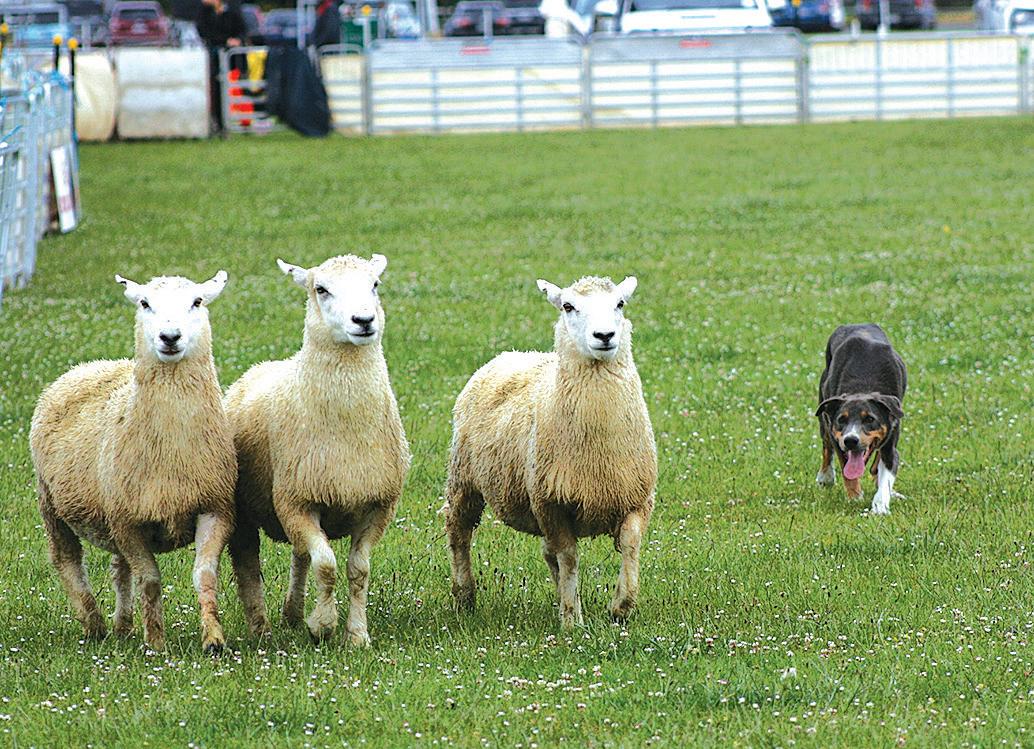
A more recent development has been the running of show and yard trials. The show trials usually feature heading dogs (border collies) and the yard trials huntaway’s. The courses for these trials are usually on flat ground, in a confined area, e.g., the arena at an A & P Show.

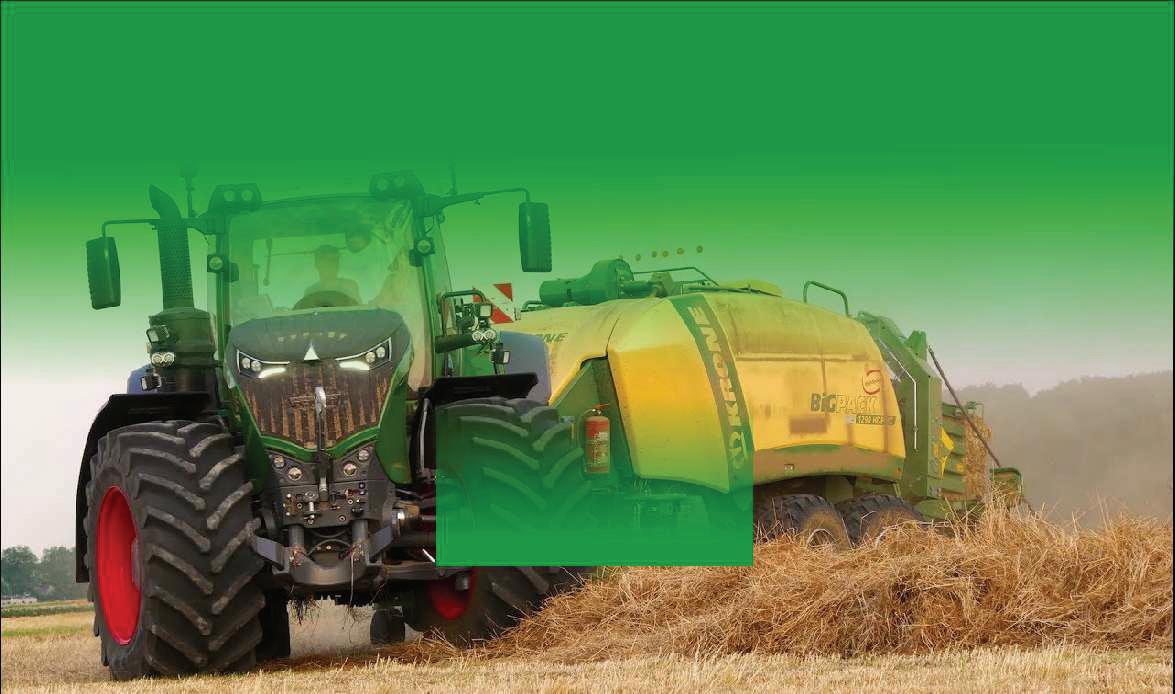

The Waimea Dog Trial Club is a social group that also offers competition opportunities for those interested. The club has trial grounds, and a club room, in Higgins Road, Wakefield. The club has been operating for over a century in the Waimea area and has 37 members including some new faces who have recently joined.
September 2022 saw the election of a new president for the club, Dorje Strang. Dorje is passionate about dog trials and says, “It’s
neat to see our club growing, we have great people involved and we are a social club which makes a difference.”
Dorje said that members enjoy improving their dog’s confidence and ability as well as their own.
The dogs aren’t just for show ei-
ther, all the dogs involved in the Waimea Dog Trial club are working farm dogs that live on local farms and use their learnt skills to assist in daily farm operations. For those with a competitive streak the club trial season usually begins in February each
year and ends in May. There are usually 4 events at each trial: the Long Head, the Short Head and Yard, the Zig-Zag Huntaway and the Straight Huntaway events. Heading dogs (silent working dogs, evolved in NZ from border collies) compete in the heading

events; and huntaways (evolved in NZ from border collies and various barking sheep dog breeds) compete in the huntaway events.
Waimea Dog Trials welcomes visitors or anyone wanting to become involved, “It’s great to be part of a club,” Dorje explains. “There are great people in our club with tons of experience at this, who are always eager to help others who want to get into it.” The club is hosting an afternoon for anyone interested in seeing a dog trial display, accompanied by a bit of commentary so you know what is going on. Our wonderful local fire and emergency team (FENZ) will also be there with information on living at the wildfire interface, as well as plenty of time if you have any questions.
Sunday 19th Feb 2023 3pm @ the A&P Showgrounds Richmond Gold coin donation. Family-friendly. Free afternoon tea. Registering is essential: To register text your full name and the number of people coming to: 020 4184 2546
Cancelled if wet – see their Facebook page on the day if you are unsure “Waimea/Tapawera Dog Trial Clubs”
tgcontracting@kinect.co.nz News Farming TOP SOUTH MONTHLY February 2023 9
Got something to buy, sell or promote? Contact us: sales@nmf.co.nz Farming TOP SOUTH MONTHLY
The Waimea Dog Trial Club in action. Photo: Supplied.
NEW LISTING
REDWOOD VALLEY
Prime Irrigated Horticultural Land
• An exciting opportunity to develop the horticultural enterprise of your choice.
• Land area 21.3997 Hectares comprising two titles (12.9023ha & 8.49974ha)
• Located at the corner of Moutere Highway and Greenacres Road North, Redwood Valley
• Irrigation water the essential element for any successful horticultural unit is available via two established wells each with separate consents in place coupled with affiliation to the Waimea Community Dam
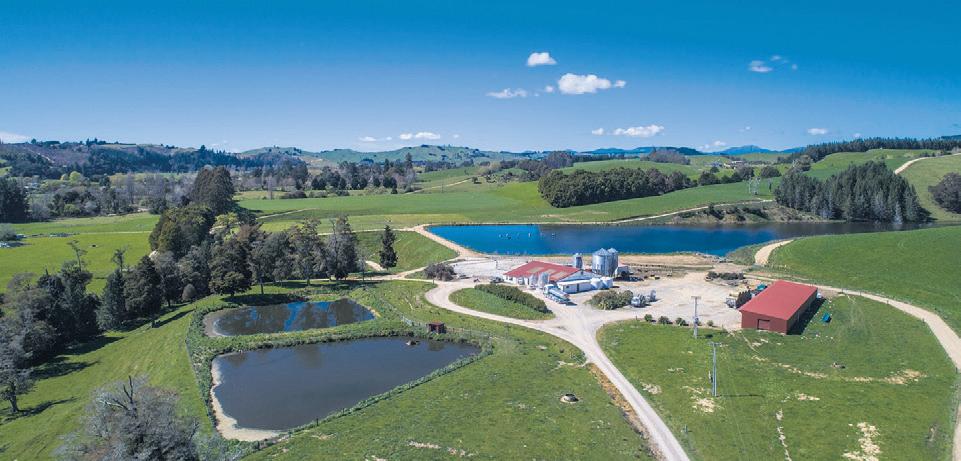
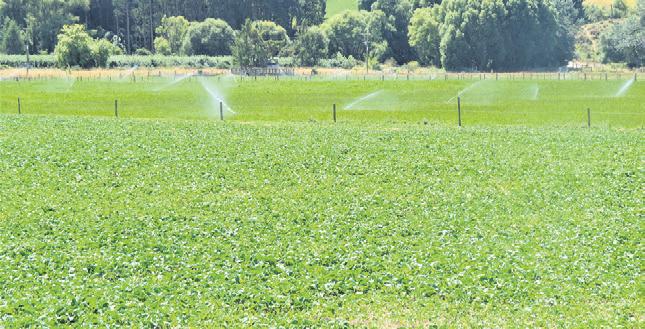
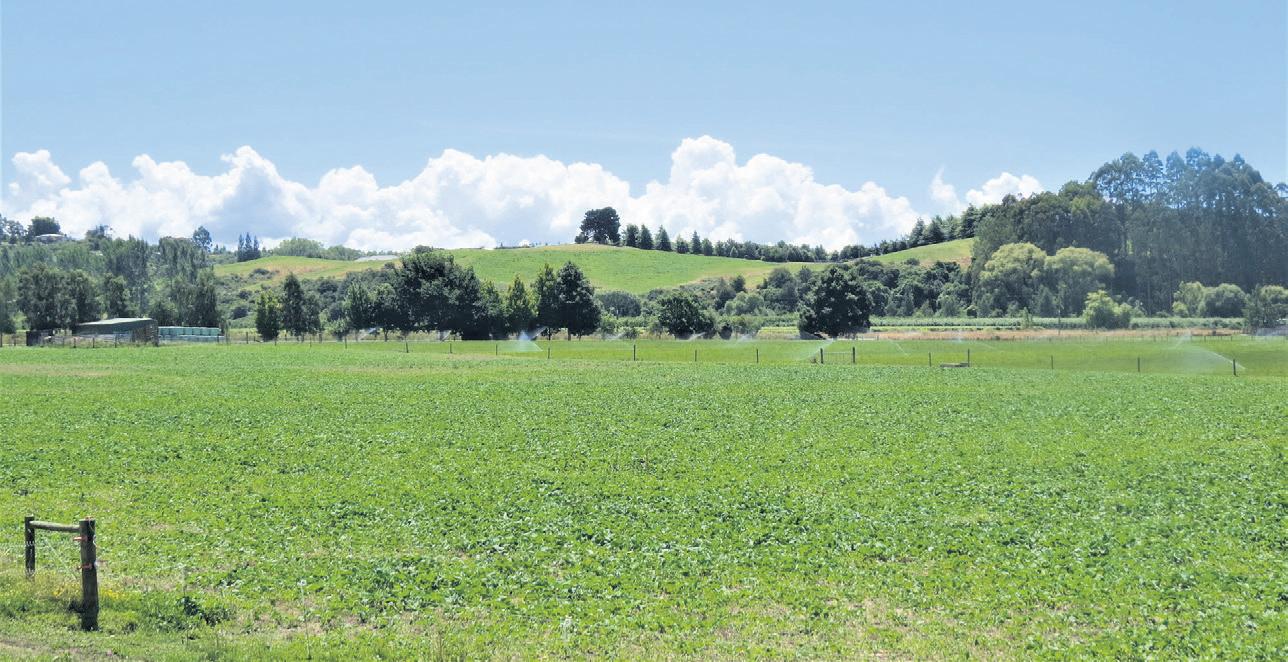
• Improvements include a modest 1980's well-maintained dwelling comprising two double bedrooms, with a combined kitchen, dining and living room including a near new log burner for heating. A separate sunny lounge room and
pggwre.co.nz/NEL37340
recently upgraded bathroom. A separate double garage, plenty of off-street parking, well-established gardens and located down a very quiet lane all add to the appeal. Other features include a wide array of sheds. These included a small workshop with 3 phase power, an equipment storage shed, and three hay sheds plus a set of cattle yards.
• Presently used for cattle grazing this very well maintained strategically locate property is a must-see for those seriously seeking flat fertile land suitable for horticultural development with the availability of irrigation water
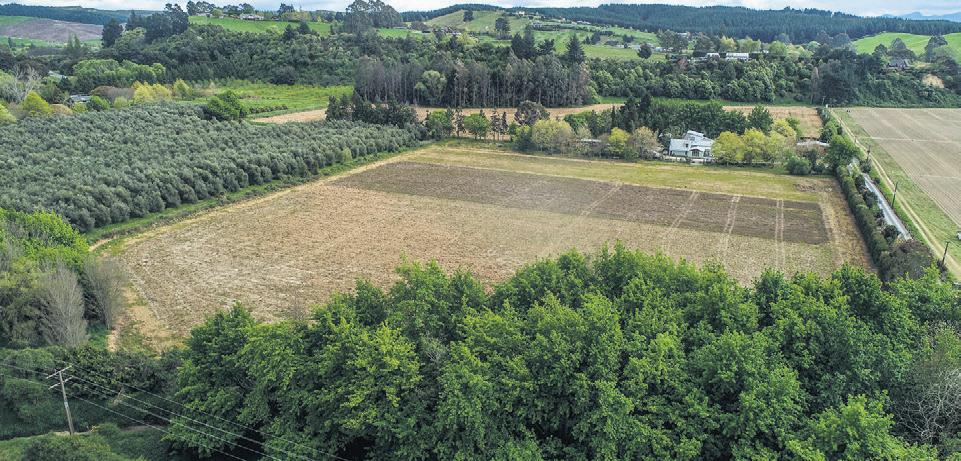

• Interested parties should contact the vendor's exclusive agent to arrange a private viewing and for further property information


SOLD
DEADLINE PRIVATE TREATY
Closes 4.00pm, Friday 24th February 2023
Plus GST (if any)
(Unless Sold Prior)
VIEW By Appointment Only
Peter Evans

M 027 224 9798
E pevans@pggwrightson.co.nz
BRIGHTWATER
Income on Waimea West
How does the saying go, Location, Location, Location.. This property has it all - location, lifestyle, income and water. Just 6km to Brightwater this lifestyle property offers purchasers a wide range of opportunities and multiple income streams. It provides the current vendors with a great passive income through rental units and leasing the land out.
Flat and fertile Waimea silt loams mean anything will grow from fruit to vegetables. An irrigation consent allows 6.94 hectares to be irrigated. The main dwelling comprises three double bedrooms and two living areas and has two one-bedroom units attached. There is also a self-contained sleepout, a portable eco cottage and a second two-bedroom home.
pggwre.co.nz/NEL36745
9 8
$1.8M Plus GST (if any)
VIEW By Appointment Only
Doug Smith
M 027 543 2280
E douglasjcsmith@pggwrightson.co.nz
THORPE, TASMAN 1517 Dovedale Road
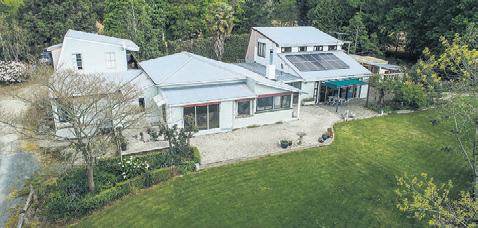
Dovedale Dairy
Dovedale Dairy is a 161ha mixed contour dairy farm centrally located between Richmond and Motueka for all services and to get the best out of the Nelson Lifestyle. The A2 herd of 350 cows is milked once a day, and supplies Fonterra and a local liquid milk processor for a premium return. A dam supplies irrigation water over the 50ha of flats, and the property could be utilised for Horticulture. The hub of the operation is a 54 bail high spec rotary cow shed centrally placed with the other farm improvements. There is one four bedroom bungalow.
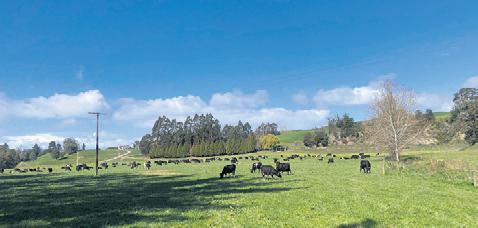

pggwre.co.nz/NEL34789
M 027 543 2280 Doug Smith

E douglasjcsmith@pggwrightson.co.nz
Joe Blakiston
M 027 434 4069
E jblakiston@pggwrightson.co.nz

PGG Wrightson Real Estate Limited, licensed under REAA 2008 Helping grow the country
RURAL | LIFESTYLE | RESIDENTIAL 10 February 2023 Advert Farming TOP SOUTH MONTHLY
Alpine lakes at risk from ‘lake snow’
Visitors to Nelson Lakes National Park are being asked to help to protect its pristine alpine lakes from an alga that causes mucus-like ‘lake snow’.

The microscopic alga Lindavia that causes the sticky mucus-like substance known as ‘lake snow’ is in the park’s Lake Rotoiti and Lake Rotoroa.
Department of Conservation wants to prevent it being spread to other lakes in the park; Rotomairewhenua/Blue Lake, Rotomaninitua/Lake Angelus and Rotopōhueroa /Lake Constance, and to alpine tarns.
To help safeguard Blue Lake, which is thought to have the clearest freshwater in the world, and other lakes, hut wardens are at the busy Blue Lake Hut over the summer peak visitor season to speak to trampers about preventing the spread of Lindavia and other aquatic pests.
Blue Lake Hut warden Shep Joice, who grew up in Saint Arnaud, has been posted to the hut since December and will be joined by rostered volunteer wardens until Easter.
Both Blue Lake and Lake Constance are tapu (sacred) to Ngāti Apa ki te Rā Tō iwi, and people are asked not to touch the water in these lakes to uphold their
mauri (life force) and pureness.
“The Blue Lake Hut wardens are talking with visitors about respecting the sacredness of Rotomairewhenua and Rotopōhueroa lakes by not touching the water or swimming in these lakes,”
DoC community ranger Sandra
Welcome to 2023
JOE BLAKISTON

PGG Wrightson
I wrote most of this on a Thursday and just as I finished Jacinda Ardern announced she was resigning which made me look at what I had written, but I guess I was pretty much on track with my opening line..
“Unfortunately, 2023 will be the year of the ‘polls, predictions, politicians and pessimists’ so I will get that negative comment out of the way early.
“We have an election coming up so that will be plenty of fodder for discussion.”
With the Ardern bombshell it does remind me of the ‘shock’ announcement of John Keys resignation in 2016 which led to a Labour landslide in the 2017 election.
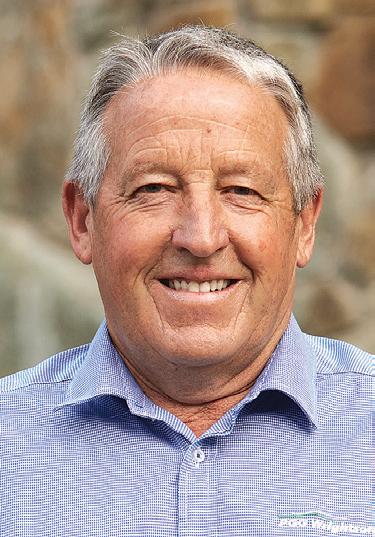
The writing was on the wall when Key left and I am sure the drums have been banging in the Labour party as the polls have run out of rhetoric to cover the ever-widening cracks in our economy.
We have a looming recession
and ‘dark clouds on the horizon’ for our economy, so that is more for people to chew on. Social problems are apparent on all fronts, and the anti-farming sentiment that has alienated the government from rural communities is sure to be a huge election issue. In some ways, I wish we could bring the election forward and get it over with so we can get some direction for 2023 instead of wallowing in speculation. And have you noticed the election date will be after a Rugby World Cup quarter-final in France so the Labour Caucus have probably factored in the nation still thinking the ABs have a chance at another World Cup victory on election day – maybe we would have lost by the following week!
I haven’t even mentioned what the weather pundits will be predicting this year – I hope we get a long hot summer from now on – and that you are all enjoying our fantastic climate. Have a great month.
Wotherspoon says.
“People shouldn’t wash or put anything in the lakes, including not filling drink bottles. She says this will also help protect Blue Lake’s outstanding water clarity from being ruined by lake snow.
“Already this summer, there have been up to 50 people staying at the hut and campsite some nights - both international and Kiwi trampers. Shep has been really happy so far with the respect and understanding trampers are showing for the lakes.”
Trampers are asked to make sure all gear has been cleaned and is completely dry before swimming or taking water from Lake Angelus and other tarns. There are no known control or eradication methods for Lindavia, so preventing its spread is a priority.
“As Lindavia is a microscopic organism, it can be spread to a new area in just one drop of water,” Sandra says.
“Clothing, boots, drink bottles and swimming, tramping and fishing gear could harbour Lindavia, which could then be washed out when entering a different lake or river.
“Lindavia is a tricky alga. It floats just below the surface and is hard to detect unless it multiplies in a bloom. When it’s not blooming, people won’t even know there’s contamination though the alga will be present.
It’s not known how Lindavia will affect the ecology and health of the lakes. It is not toxic to humans or livestock and poses no risk from food sourced from the lakes.
Only small amounts of lake snow have been seen in the Rotoiti and Rotoroa lakes to date, with Lindavia having been in the lakes a relatively short time.
A season for fires and fire sales
GARRICK BATTEN
Our global warming policies are creating a rural fire sale.
NZ signed the Framework Convention on Climate Change at the Rio Earth Summit 1992 to work actively to reduce CO2 emissions contributing to greenhouse gas effects on global warming. Successive governments have gone for carbon sinks to absorb CO2 rather than reduce emissions, but sheep and beef farmers have reduced absolute emissions by 30% since 1992.
Climate Change Minister Shaw noted that every sector has had flat emissions since 2005 except for the vast increase from transport. He led the government in deciding how farmers could again carry the country’s climate change obligations by focusing on their methane emissions, with penalties aimed for further reductions, smudging the fact that there was no more warming from current farm methane emissions.
Agricultural Minister O’Connor went further, requiring farmers’ actions to not add to global warming but also to reduce the impact of all emissions over the last 100 years.
The agricultural emissions policy,
again relying on farmers to save our country, is backed by a threat that they will not be able to sell all their food in the future if it is not able to quantify and reduce GHGe.
This mantra, led by the PM and echoed by some academics, self-appointed agricultural expert business commentators and environmentalists, ignores the irony that we already lead the world - as they acknowledge. It would be reasonable to expect this to be loudly promoted to the world, and supporting current positive farmer actions, not penalising.
An example of the threat used was the UK market that has similar farm environmental standards to NZ but is supported by increased subsidies to reduce their emissions.
Yet major retailer TESCO’s policy for nil carbon emissions from suppliers is set for 2050 and farmers are focussed on short-term survival.
The International Food Council found that US customers may not be willing to pay premiums based on false sustainably claims.
Marketers know that food prices drive purchase decisions and while there will certainly be opportunities for premiums in specific markets, not all farmers supply them, and our current cost-of-living crisis shows where people cut food costs.
The current government farm emissions scheme has annual administrative costs of $60m. That cost and proposed scale for change far exceeds our needs.
Perhaps the planned $55m for consulting support to farmers on biosecurity, water, climate change and the environment could offset that, and government could rely on farmers to solve the issues themselves, as they are already doing. And not require them to pay a tax on production from 2025. Continuing to reduce national stock tallies just supports other sectors’ emissions.
Why would that policy encourage selling up, hollow out rural communities, reduce export earnings and destroy some basic farm businesses, leaving everyone in the country poorer from a fire sale but increased food prices?
News Farming TOP SOUTH MONTHLY February 2023 11
Blue Lake in the Nelson Lakes National Park has the clearest water in the world. Photo: Supplied.
Climate change projections for New Zealand
BARBARA STUART
Many places will see more than 80 days a year above 25C by 2100, which will have a significant impact on ryegrass growth (it prefers temperatures of 5-18C) and animal performance.
Winter and spring are very likely to have increased rainfall in the west of the North and South Islands and be drier in the east. Summer is likely to be wetter in the east of both islands, while the west and central North Island will be drier.
All areas are likely to get more extreme rainfall, especially shorter, more intense events. Increased drought frequency in many regions of New Zealand may occur and farmers in dry areas can expect
up to 10% more drought days by 2040.
Farming will be very different, and we need to sort out water policies because irrigation will be crucial in many areas to balance use and food production and for people.
NZ’s gross emissions are increasing, therefore action to reduce them is crucial.
In 2020, NZ gross emissions were 78,778 kilotons of carbon dioxide equivalent (Mt CO2-e), comprising 44% carbon dioxide, 44% methane, 11% nitrous oxide and 2% fluorinated gases.
This represents a 21% increase in emissions since 1990 (which is when international reporting obligations for greenhouse gas emissions began).
In 2020, 73.1% of NZ’s report-
ed agricultural emissions was enteric methane from ruminant animals.
A further 20% of agricultural emissions was nitrous oxide, largely from the nitrogen in animal urine and dung, with a smaller amount from the use of synthetic fertilisers. The remainder of agricultural emissions in 2020 were mostly methane from manure management (4.4%) and carbon dioxide from fertiliser, lime and dolomite.
A frequently heard belief is, there had always been large
numbers of ruminant animals on the planet emitting greenhouse gases. The number of ruminant animals in the world has never been greater than today.
In North America it’s estimated there were once 70 million bison, but today there are more than 200 million cattle in the USA, reports Phil Journeaux an agriculture economist with AgFirst. He says, “It might not be possible to farm in the same way as we do now in New Zealand. If you go back a few hundred years, there were no ruminant animals here.
Today we have around 40 million in NZ, those growth trends have happened all around the globe.”
“Some say climate change doesn’t matter to New Zealand, but it will have implications globally and for us. It will cost us to mitigate but cost us a lot more if we don’t,” Sinead Leahy, Principal Science Advisor New Zealand Agricultural Greenhouse Gas Research Centre (NZAGRC), said during a recent seminar designed to expand rural professionals’ understanding of climate change.
Animal disease-testing robot in action
ELOISE MARTYN
A $580,000 antibody-testing robot, the first of its kind in New Zealand, is now in action at the New Zealand Biosecurity Animal Health Laboratory located in Upper Hutt, Wellington.
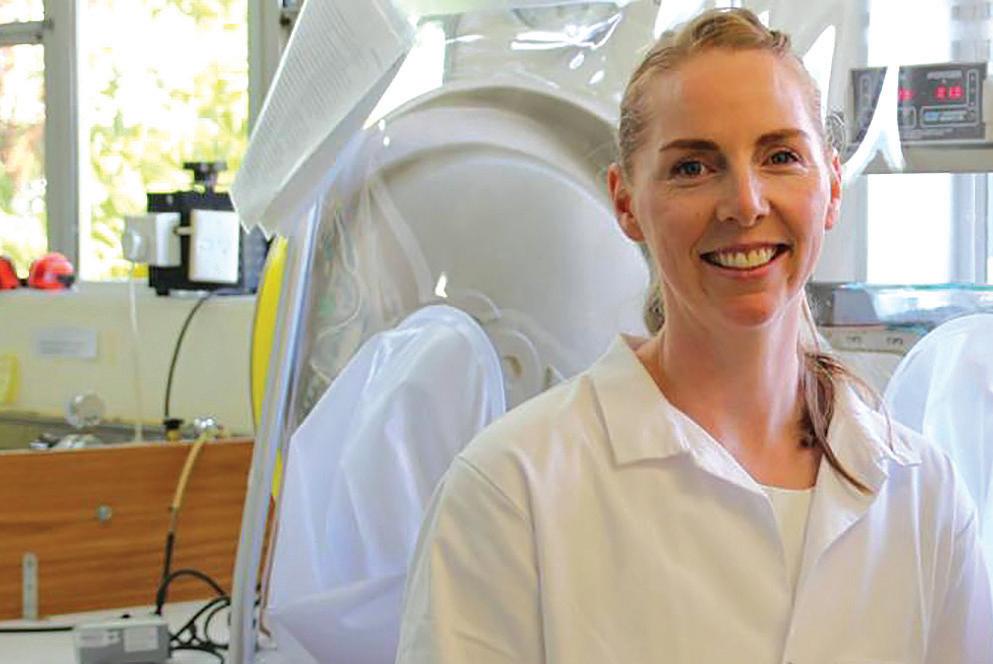
The Animal Health Laboratory is New Zealand’s national veterinary laboratory where they diagnose, research and help control animal diseases.
The Explorer G3 robot was manufactured in Germany and now functioning will increase testing accuracy and consistency during future biosecurity outbreaks and responses.
If a disease such as foot-andmouth disease (FMD) arrived here, we could need to test between 3,000 to 7,000 antibodies samples a day.
The robot is designed to test up to 7,000 samples, such as FMD or M Bovis, per day and can even run tests overnight without staff present.
This means that during a biosecurity emergency the country will have speedy delivery of results which will be better for the well being of the farmers and an-
imals involved. Fast test results will also have a positive impact on our economy as antibody testing is essential for products that are exported.
The 750kg robot took a week to set up, with each part being brought safely into the bio-secure containment area.
Once it was assembled, the team ran it through stringent testing and calibration to ensure the tests were as accurate as the current manual process. Now that this has been confirmed, the robot has begun day-to-day diagnostic testing.
The machine achieves its efficien-
is used to perform antibody tests for surveillance programmes, and for testing groups of animals for import or export purposes. MPI moved into the new Biosecurity Animal Health Laboratory in April 2021.
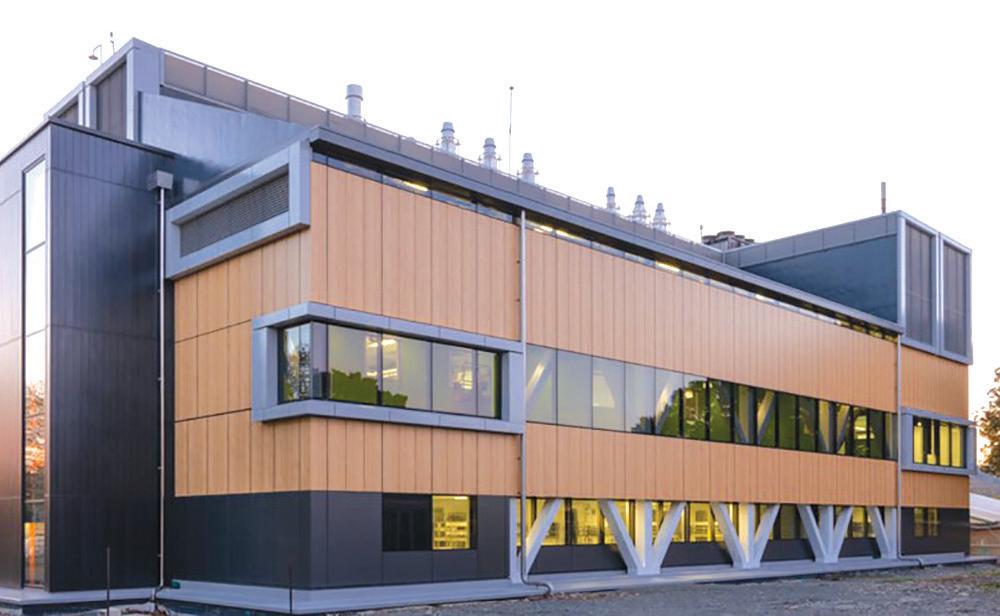
The laboratory replaces an older facility at the National Centre for Biosecurity and Infectious Disease and features the latest in disease-control technology from all over the world.
The project was complex and took almost 10 years to plan and build.
The building is totally airtight. The walls are covered with antibacterial panels so smooth the germs slide right off, and every metal join has been welded shut; if you dropped it in water, the building would float.
cy through moving test plates around. Each plate can contain approximately 90 samples and the robot manages up to 40 plates at once. Simultaneously, it adds samples and different reagents, washes and incubates the test plates.
Outside of responses, the robot
The $87 million lab was designed to provide a safe environment for diagnostics, exotic disease work, biosecurity related research and supporting the Ministry of Health with human-health diseases.
To find out more about the Biosecurity New Zealand Animal Health Lab, go to: National Animal Health Laboratory NZ Government (mpi.govt.nz).
12 February 2023 News Farming TOP SOUTH MONTHLY
New Zealand’s $87 million Biosecurity Animal Health Laboratory located in Wallaceville, Upper Hutt. The laboratory is where MPI diagnose, research and help control animal diseases. Photo: Supplied.
Sinead Leahy of New Zealand Agricultural Greenhouse Gas Research Centre. Photo: Supplied.
It might not be possible to farm in the same way as we do now
Phil Journeaux

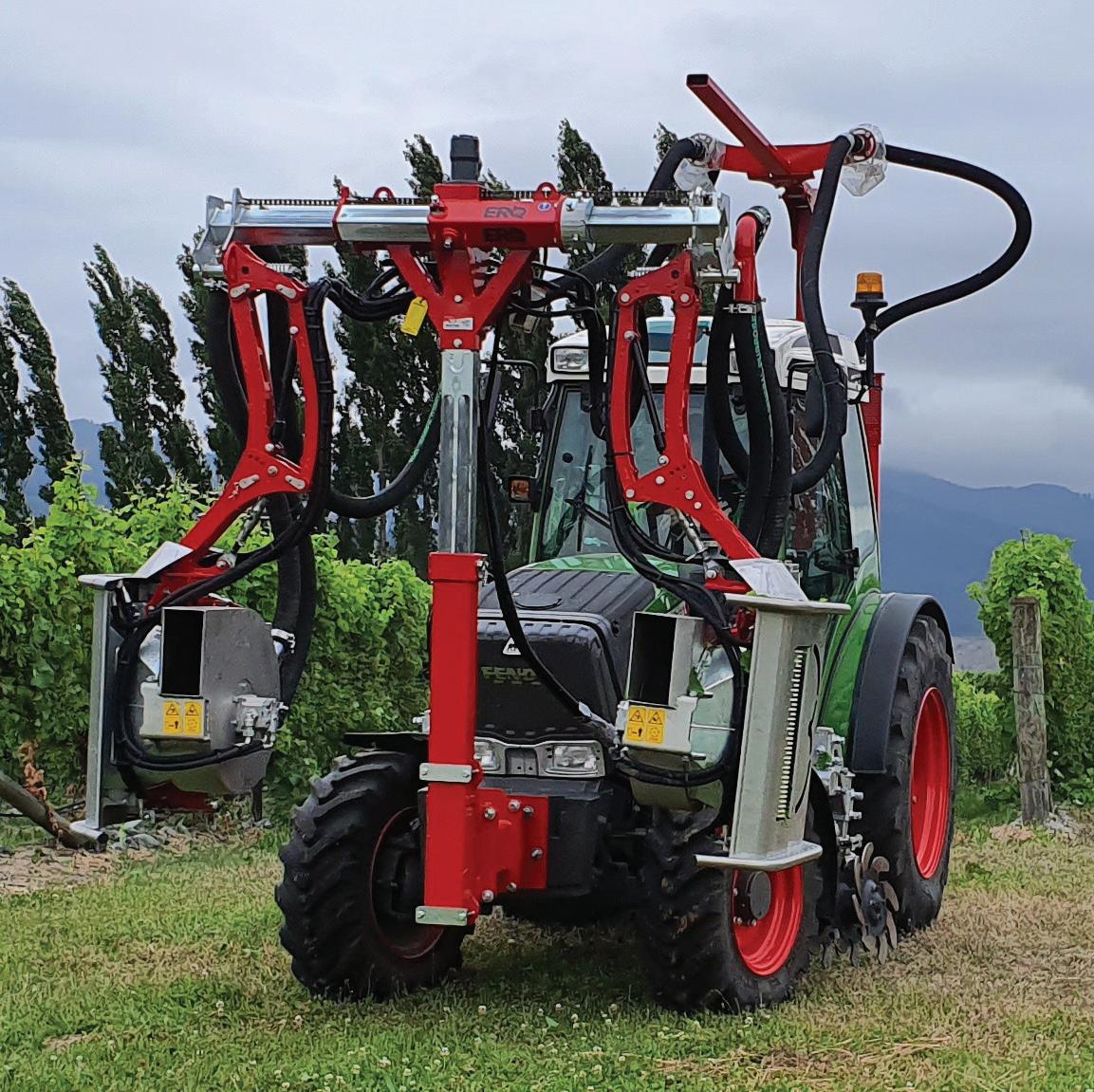
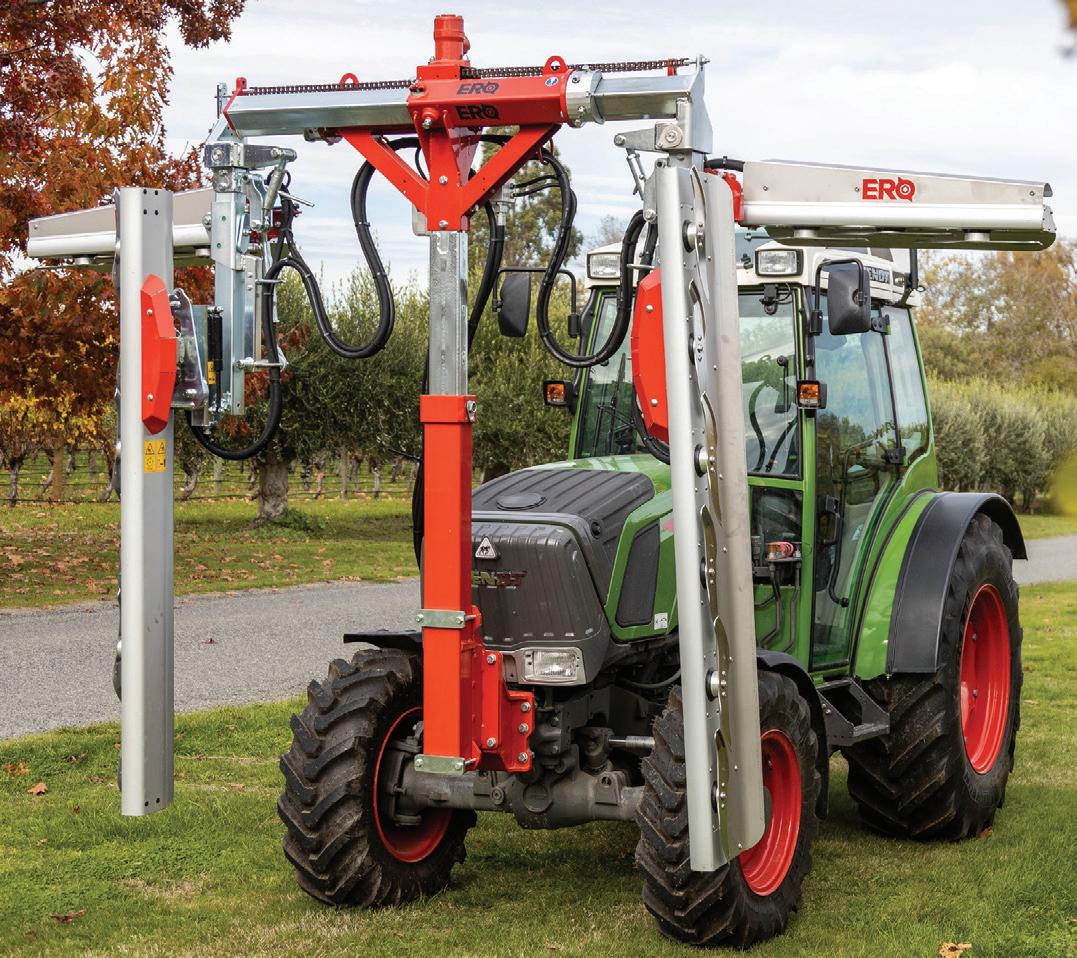

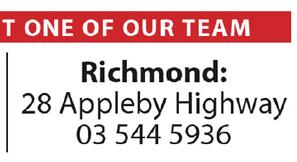

End of season sell out! Get in now to secure your brand-new ERO trimmer, leaf plucker or a FMR sprayer and lock in 2022 prices* For more information contact our team * T&C apply. Available while stocks last. Advert Farming TOP SOUTH MONTHLY February 2023 13
Passionate about connecting with nature
ELOISE MARTYN
Sammy Garrett really enjoys her roles as a Board Support Officer for the Nelson Marlborough Conservation Board and Programme Management for the Jobs for Nature Unit for the Department of Conservation (DoC) that she has held the past six years.
“I feel very lucky to have a job that I am passionate about and really enjoy” she says.
Sammy grew up on a dairy farm in the Aorere Valley, Golden Bay. “DoC work really appealed to me as I have always been drawn to the natural environment.” She also mentions that career options in Golden Bay can be very limiting due to its location and size. DoC is in its final year of its ‘Jobs for Nature’ work programme. Jobs for Nature is part of the Government’s $1.219 billion programme aimed to help revitalise communities through nature-based employment and stimulate the economy post Covid-19.
Jobs for Nature funding helps to create nature-based job opportunities on private and public conservation land focusing on predator control, restoring wetlands, regenerative planting, improving tracks, huts, and other recreational assets.
“Back in 2020 DoC were allocated a $488 million fund for Jobs for Nature, a huge investment,” Sammy explains, “It has been really great for the local area, and a great success throughout the country. Having
recently joined the project team I’m blown away by the outcomes which have been achieved to date.”
A few of the local projects that are underway through the programme are: Mt. Richmond Wilding Conifers Project, Maitai Ecological Restoration, Picton Dawn Chorus Project, The Te Hoiere/Pelorus Catchment freshwater restoration project, Restoration of high biodiversity value sites in Wakapuaka and Whangamoa catchments, creating jobs for eco-restoration in
Mohua (Golden Bay), Invasive & Noxious Weed Control, as well as a handful of others listed on their website. As the programme draws to a close DoC are looking at a variety of funding options and putting some succession planning around the programme. A big focus for local DoC teams has been recovery from recent big weather events. Sammy works with the Nelson Marlborough operations team who have been involved in the repairing of walking tracks, including the Abel Tasman, Queen Charlotte
and Heaphy which were all badly damaged.
“The tracks are open and people have access to them for the summer season which is great.”
The work has been carried out by local DoC teams and contractors.


Sammy’s background and upbringing on her family’s dairy farm has given her a deeper understanding and a broader perspective when engaging with landowners.
“I facilitate local open public forums for the Nelson Marlborough Conservation Board,
during those I am able to see both sides across a range of issues.”
Her family still owns and operates ‘Stoneyfield,’ the Aorere Valley dairy farm where she grew up. The farm milks approximately 300 cows via a 50-bail rotary. And although Sammy and her young family now live in Māpua they frequently take family holidays over to the farm which they all thoroughly enjoy.
“It never appealed to me to stay and work the farm, but we really enjoy going back and spending time there, it’s a special place.”
Former Golden Bay DoC Ranger wins prestigious award
Minister of Conservation
Poto Williams presented the Loder Cup to Simon Walls for his significant contribution to native plant conservation, at a ceremony at Onetahua Marae in Golden Bay at the end of 2022.
Simon Walls says he’s proud of his work as a DoC ranger but wants to acknowledge the many colleagues and rangers who, day in and day out are out in the field doing the work too. Simon also credits his parents for instilling in him and his siblings a love of all things natural from a young age. It was their encouragement which gave him a real appreciation of plant life and set him on the conservation
path. He also acknowledges his partner Kathy Hindmarsh who has always been there beside him involved in conservation work. One of
his treasured work-related experiences was the role he had working with private landowners in Golden Bay and the trusted relationships that evolved when allowed to identify plant species on their land. As a young man Simon worked in the primary sector on a sheep and beef farm, then in commercial plant nursery, kiwifruit pruning, fencing contractor and as a landscaper, his interest in plants was a spare time hobby.
He first worked for DoC as an archaeologist and summer holiday programme guide in 1989 in Golden Bay. A position as a biodiversity ranger evolved from this and he eventually became a threatened plant conservation specialist.
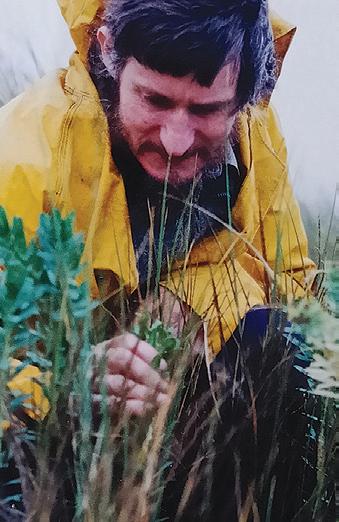
This work took Simon to many parts of two national parks, a nature reserve, a farm park, many scenic reserves, covenants, and private land, in fact wherever threatened plants grow. Growing endangered plants in a nursery and planting them out to boost populations in the wild is one species-recovery method he has often adopted.
After over thirty years of public service, Simon retired in 2021. He continues to care for two family owned QE11 Covenants and assists with Manawhenua Ki Mohua kaitiaki projects. Simon says throughout his Conservation career he’s enjoyed helping to preserve and share knowledge about the unique plants of New Zealand.
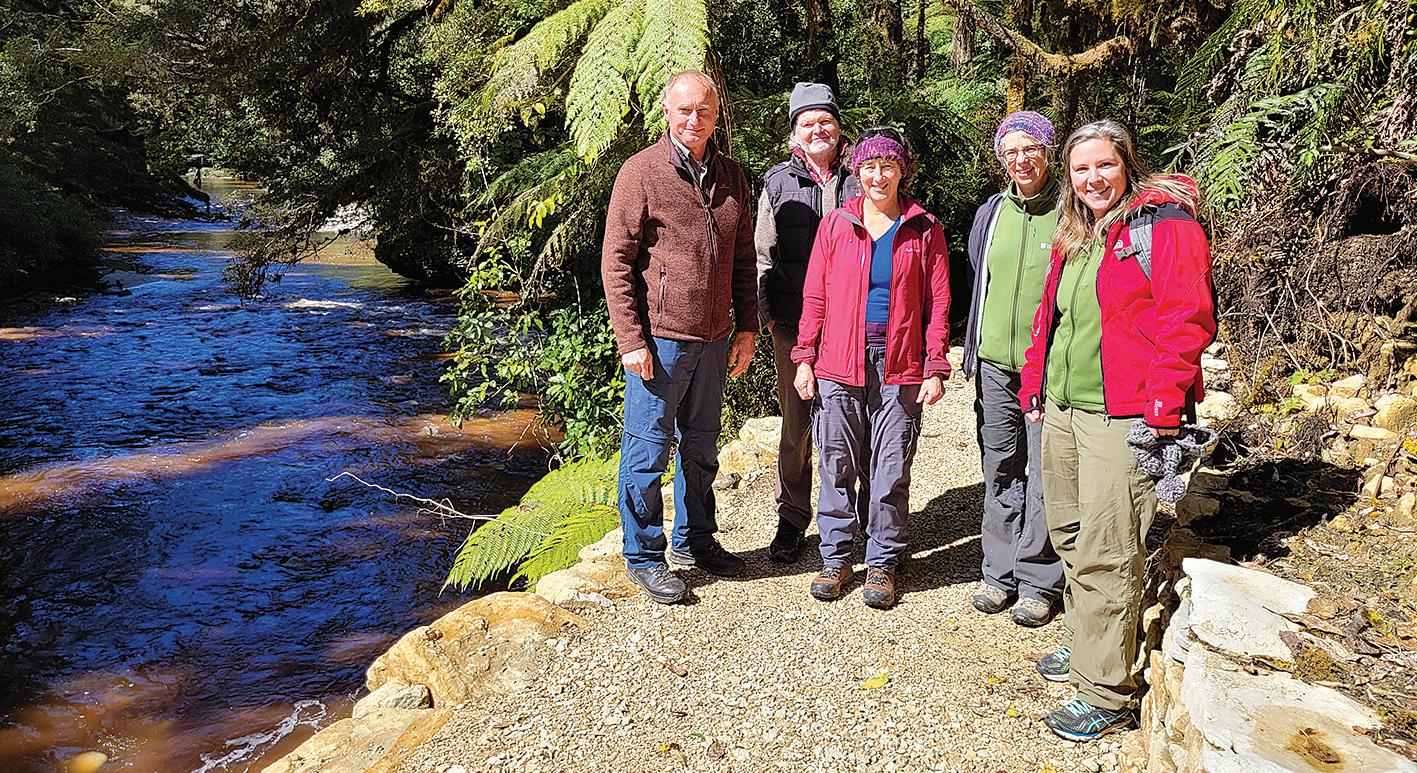
• Rope & Twine • Netting • Chain • Shackles • Hooks and Blocks • Rigging Services • Wire Ropes - Lifting - Crane - Irrigation - Strops - Post Driver - Stainless Ph 03 548 7942 www.hampidjan.co.nz info@hampidjan.co.nz
14 February 2023 News Farming TOP SOUTH MONTHLY
82 Vickerman Street Port Nelson
BARBARA STUART
Roy Rose, Ian Alach, Nick Eade, Jo Gould and Sammy Garrett, on a new section of the Ōpārara Arch walking track in the Kahurangi National Park. Photo: Supplied.
Simon Walls studying Euphorbia glauca on Farewell Spit. Photo: Supplied.
Recently, a major end-user in the UK specified that they would now prefer to buy products from New Zealand that were grown or raised on reduced nitrogen and phosphate land. We believe this is a start of a new trend that will be here to stay.

Rolling to steep sheep and beef unit at Ballance. We first applied at Functional Fertiliser mix in 2010 and have applied to 85ha every year since.
We have enjoyed outstanding animal health with both sheep and beef animals regularly achieving top prices at the local sales yards. Independent analysis showed our soil quality to be second to none.
– GRAEME AND JUDY OLSEN
Functional Fertiliser applications over four years have transformed our rotationally grazed pastures into a highly productive summer dominant clover sward.
The “fertiliser’ soft carbon combination brought our soil and pasture to life with amazing alacrity.
Our spring pasture growth supported a stocking capacity of 40 su/ha with the pastures still requiring topping. The Functional Fertiliser wrap around support service has been exceptionally helpful.
–
LINDSAY
This stuff is amazing. I have clover coming up where there was none before, thanks!
– LANCE UNSWORTH
We have a small organically registered farm near Otaki specialising in cattle finishing. In the 8 years since applying Functional Fertiliser no nitrogen has been applied and the changes have been exceptional with very strong clover growth providing all the nitrogen required. It took a little time to kick in however our animal health has been exceptional with no lice or worms and very few vet bills resulting in a low cost easy to manage and profitable operation. The property is at least carbon neutral, and the pastures largely look after themselves. The stock agent says we fatten cattle quicker than others with two year old carcass weights of 280 – 300kg with the meat having exceptional flavour.

Our costs are 30% less, with 30% less labour required. We run fewer animals with a 30% increase in overall profitability. It’s an easy-to-follow system that is equally successful on both large and small operations. Functional Fertiliser really works. It sweetens the soil creating the ideal environment for mycorrhizal fungi and beneficial microbes resulting in strong growth throughout the year.
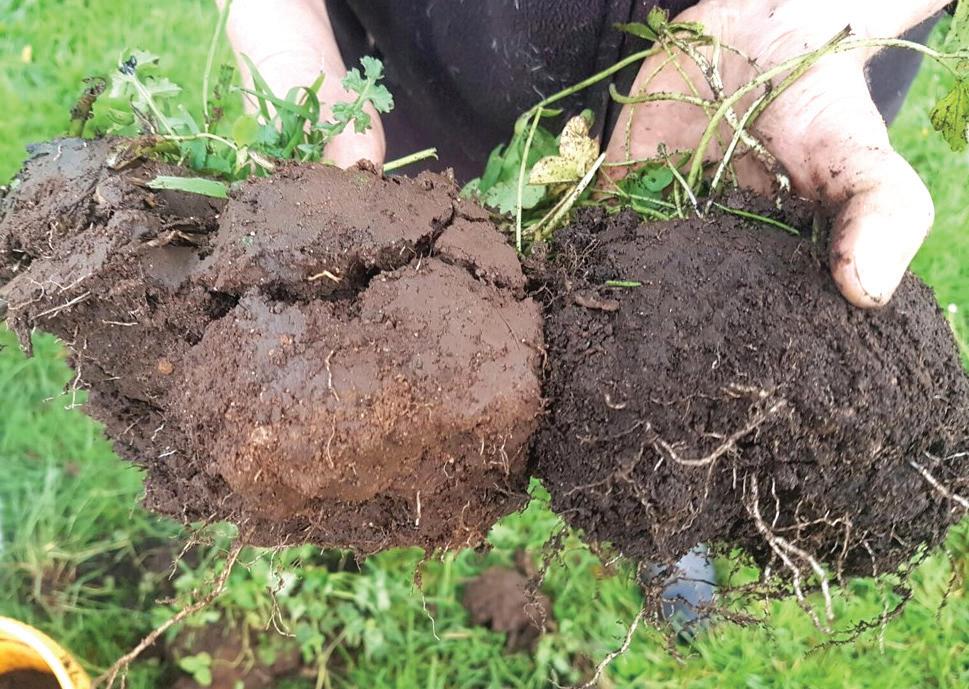 – STUART PRITCHARD
– STUART PRITCHARD
PLEASE READ THESE TESTIMONIALS CAREFULLY. Proof it works
WE HAVE THE ANSWER TO MAINTAIN HIGH PASTURAL YIELD WITHOUT FERTILISER NITROGEN
Phone Peter on 027 495 0041 or call 0800 843 809 www.functionalfertiliser.co.nz IMPORTANT ANNOUNCEMENT CONTACT US TO FIND OUT MORE Advert Farming TOP SOUTH MONTHLY February 2023 15
Just a reminder: National will take a different approach to getting things done
MAUREEN PUGH National List MP
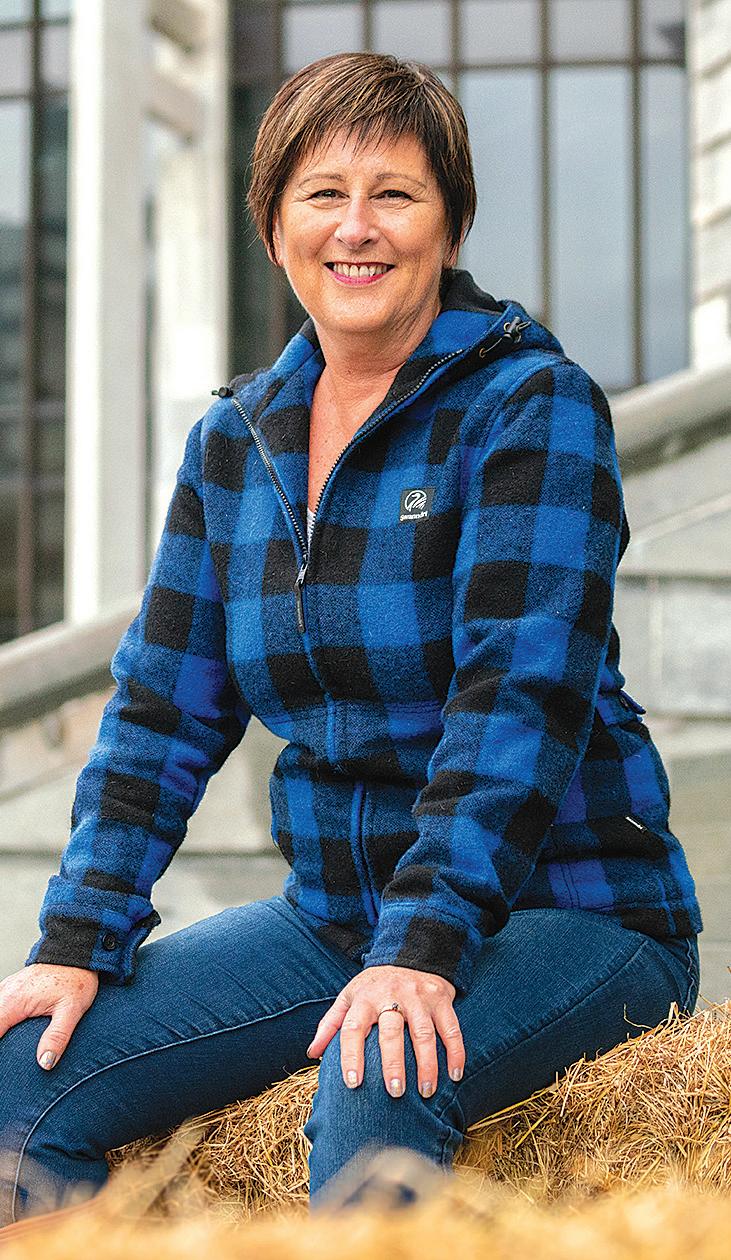
There’s always a lot of hype and speculation when a prime minister steps down.
I wish Jacinda Ardern well after more than five years’ leadership, but the legacy for most New Zealanders does not show her government in any great glory. The reality is a surge in the cost of living, spiralling crime rates, declining standards in education and healthcare, to say nothing of seemingly long-forgotten promises on child poverty and housing.
The new prime minister is faced with an impossible task in the next nine months: trying to dial down the huge government spending machine and focussing his team on what projects to pursue and which
OPINION:
ones to drop will be difficult. But essentially, it’s the same old team doing the same old things, and let’s face it, the prime minister’s sudden departure has left a terrible mess, so it will certainly be the same old results.
Every New Zealander is reminded of the cost-of-living crisis when they fuel their cars or visit the supermarket. National has a plan to fight inflation that includes focussing the Reserve Bank on managing inflation.
We will address staff shortages, reduce costs for businesses and rein in government spending. We will give Kiwis more money in their back pockets through prudent tax reductions, because it’s all a matter of providing tax relief so that hard-working people can keep more of what they
earn. Whilst Labour flounders on such rural issues as farming emissions, National will back farmers and build a genuine partnership with rural communities. We understand the sector’s frustration and will invest in new technology and ensure that carbon sequestered on-farm counts. The emissions obligations will be solved by technology, not by sending farmers bankrupt. In the health space, we have a plan to lift morale and return the status of employment in this sector to being attractive, stable and well-rewarded. Health targets matter to all New Zealanders and National is committed to building a world-class health system. Leaving Covid disruption aside, there is no doubt that education outcomes and teaching standards have dropped
and this will have effect on the workforce in years to come. National will put more focus on the basic skills that matter, which will lift overall educational outcomes.
Christopher Luxon was very clear in his speech at Rātana that National does not support co-governance of the delivery of public services. We are one country, and what matters is that all New Zealanders get the services they need. Labour’s lack of clarity around co-governance has seen it become one of the most divisive positions of this current government. National also supports one person, only one vote. The resignation of the prime minister and subsequent new leadership won’t change any of National’s plans. Our approach will remain, a focus on getting things done.
DoC and predator free movement ignoring basic ecology
TONY ORMAN
The Department of Conservation and the Predator Free movement are not facing up to ecological realities and the consequences of disrupting Nature’s food chain says Otago-based scientist Dr Jo Pollard in an article in the New Zealand Deerstalkers’ Associations magazine “New Zealand Hunting and Wildlife.”
“Unfortunately, there is a history off dysfunction whereby conservation management has departed from science,” she said.
“The science indicates a need for careful studies and saving habitat rather than mindless interference and indiscriminate poisoning.
Dr Pollard cited instances where the department ignored scientific studies that had pointed out the detrimental consequences of major interference with the role of predators.
“Getting rid of mice can have unforeseen consequences.”
A Landcare Research study found when other mammals such as rats and stoats were fenced out of a reserve, without a predator, mouse numbers rose.
The increased number of mice feeding on weta, caterpillars and other invertebrates, reduced the invertebrate numbers with potentially “catastrophic effects” on other species such as native earthworms.
“There are many questions how to deal with increasing mice,
once their predators have been killed off. “
Several studies of alpine-dwelling stoats have confirmed rats are stoat’s preferred prey, with birds very minor at less than 2 percent of the stoat’s diet.
However, when rats were removed, stoats, without their usual prey, switched to small birds
(15 - 26 percent) and skinks (1957 percent).
The food chain gets more complex as shown by studies on 38 Fiordland islands where Norway rats and stoats were removed several decades ago.
In the absence of rats and stoats, native bush robins flourished “seemingly aggressively ousting

other bird species such as grey warbler, silver eye and tomtits.”
“The authors warned that killing off predators to achieve ‘restoration’ can cause declines and disappearances of native bird species,” said Dr. Pollard.
“Did taking away the introduced predators reduced the diversity of birds?”
Two studies demonstrated the classic rat population response to aerial 1080 poisoning with numbers rebounding after several months and reaching higher levels than before poisoning began. “Rats are especially well equipped, through their lifestyle and physiology, to withstand a 1080 poison war,” said Dr Pollard.
She echoed noted ecologist Dr Carolyn King’s advice from decades ago that “conservation of species is conservation of habitats.”
Encouragingly, was that a very recent Landcare Research stressed the need to preserve habitat, stating its loss and modification “is a principal, ongoing cause of indigenous biodiversity decline.”
Dr Pollard was critical of the Department of Conservation’s one-dimensional approach saying DoC’s chief scientist Graeme Elliott should have heeded Dr Carolyn King and focussed on the observation that mohua, needing tall forest trees on valley floors, were suffering from habitat loss. Instead, stoats were blamed for the mohua’s decline, leading to rampant stoat trapping, followed by rats-stoat’s prey, consequently getting out of control and eating the mohua.
The final nail in the coffin was DoC’s onset of aerial poisoning to quell rats, she said. “Perhaps the Predator Free movement and DoC might yet face up to ecology,” said Dr Pollard.
16 February 2023 News Farming TOP SOUTH MONTHLY
South island bush robin. Photo: Tony Orman.
Rural Community Noticeboard
www.tasmanhonda .co.nz
Dairy Farming Level 3 - Brightwater Thurs 16 Feb @10am
Ideally suited for Farm Assistants, this qualification provides learners with a solid knowledge-base across a range of on-farm tasks, and prepares you to tackle all seasonal activities throughout the farming calendar year.
The first topic you will start is ‘Personal Wellbeing, Biosecurity and Animal Health’ which is being held at the Wanderers Rugby Club in Brightwater.

Other topics include:
- Assist with Operating Dairy Effluent Management Systems
- Milk Harvesting and Optimizing Milk Quality
- Assist with Mating, Calving and Neonatal Care







- Livestock Feed Supply and Demand






For more information and to enrol, phone Regional Coordinator: Karmyn Ingram on 027 253 3072 or email karmyn.ingram@primaryito.ac.nz

The Rural Noticeboard is for local not-for-profit community groups and organisations to advertise community events or projects that will be of interest to our 35,000 rural readers over the top of the south. Thanks to the team at Tasman Honda for making this noticeboard possible. If you have an up-and-coming project or event that you wish to place on this noticeboard, please contact eloise@topsouthmedia.co.nz
“HONDA OUTDOORS IS A HAPPENING THING!”



Tasman Honda are stockists of a wide range of Honda Outdoor products. mowers, brush cutters and much more EXPLORE THE FULL RANGE INSTORE OR ONLINE.
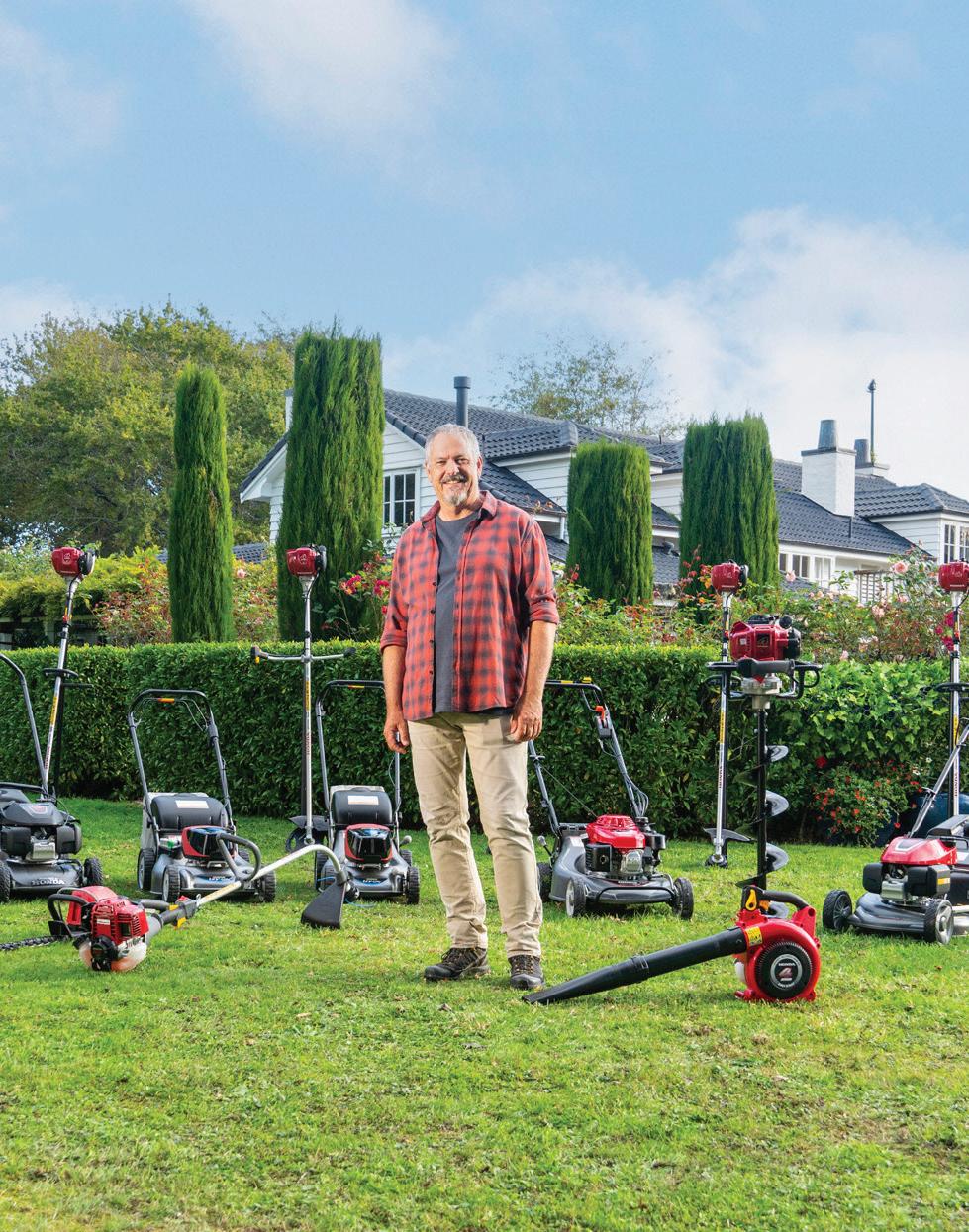
Generators, pumps, lawn mowers, ride on lawn
SERVICES
Our well-equipped service vehicle has all the gear onboard to keep your quad, farm bike or side-by-side in top order. Qualified technicians, routine servicing, genuine Honda spare parts and great customer service

25 Elms Street, Stoke, NELSON 03 544 8703
tasmanhonda.co.nz
workshop@tasmanhonda co.nz
NEW O WNERS
Advert Farming TOP SOUTH MONTHLY February 2023 17
SAVE THE DATE Cawthron Marlborough Environment Awards 20 APRIL 2023
OPINION:
Confidence eroded by uncertainty
BARBARA STUART
Golden Bay farmer Nigel Harwood says the dairy schedule is the one thing that has kept him confident about his family’s business this season.
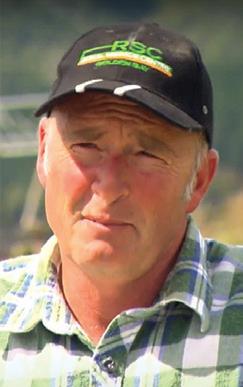
While inflation has eroded returns considerably, he believes next season is likely to be tougher as inflation hikes continue to erode bottom lines and there is ongoing uncertainty for farmers.
Nigel is less confident about hill country sheep farming even without taking He Waka Eke Noa into account. The current price of carbon is around $83/tonne and rising. Alongside this, income from sheep farming on hill country has flatlined and the same inflationary costs leaves farmers with a very small cheque to get through the rest of the year. Returns from carbon and tree farming are above sheep and beef farming, and that’s why we are seeing these forestry-related companies setting the price for farms when they come up for sale.
ground? The current policy settings will lead to a massive (dark) greening of the countryside and decimate rural communities. Not to mention we have just hamstrung a perfectly good industry that has scale and diversity of market.
Nigel says overall there’s a need for better planning, incentives, and wider understanding regarding the impact of losing hill country farms and of climate policy in general.
OPINION:
Better forestry regimes needed
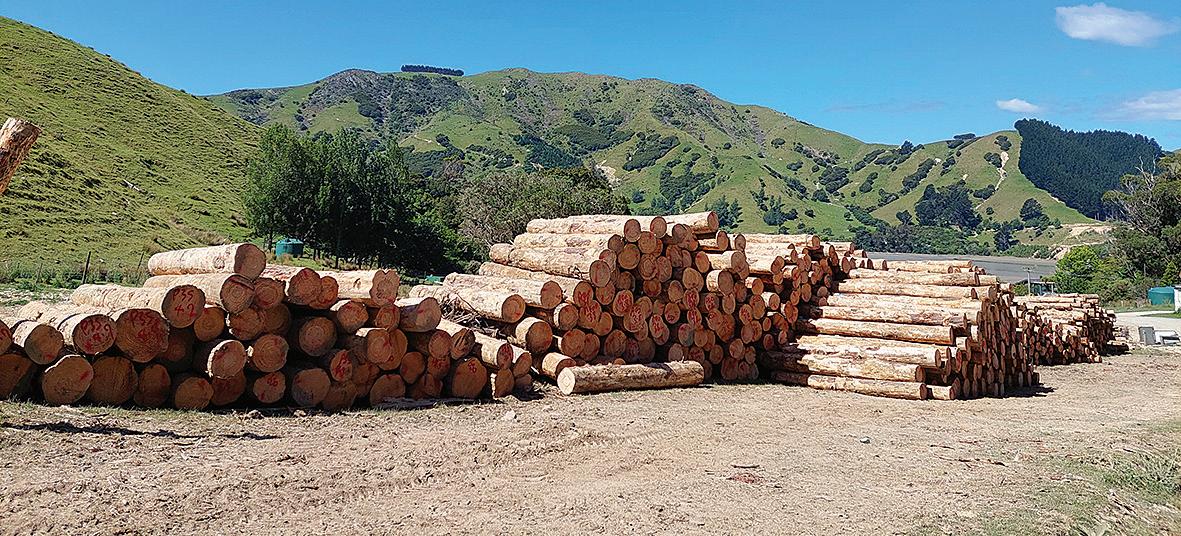
TONY ORMAN
Nigel Harwood
“The Paris Agreement on Climate Change specifically mentions that countries should not implement policy to the detriment of food production, yet that is exactly what NZ appears to be doing. There seems to be belief that we should be leading the way. on taxing farm emissions.
I am old enough to remember ministers in the Lange government telling us that if we remove subsidies the world will follow. In the recent free trade negotiation with the EU they used our lack of protection against us. Effectively, we had nothing to give away.”
But what happens in 25-30 years’ time when there’s a glut of logs for export to one country (China), or do those pine forests just stay in the
OPINION:
“Now I read that we are to be world leaders at taxing farm emissions and the world will follow. Please forgive the cynic, I’ve heard it all before.”
Despite numerous scientific reports warning of the threat, the well-being of the idyllic Marlborough Sounds is declining under a smothering blanket of silt, says Marlborough environmentalist and Sounds landowner Pete Watson. He is frustrated over the lack of action to combat the problem despite scientific warnings from not just years, but four decades.
“From as far back as the 1980s Marlborough district councillors have had over 15 reports put in front of them advising that forestry techniques and areas planted are having severe consequences for the environment, largely with silt-laden run-off from commercial forestry clear felling,” he says. The impact of poor forestry logging practices, clear felling and silty following rains has been disastrous for the ecology of inner bays, says Pete Watson.
“I personally dived, recorded and filmed the poor state of the Mahau Sound in 2018 showing how bad it was, but gained little support. The bottom is lifeless.”
The Mahau Sound, that in the early 1980s was sandy bottomed and commercially scallop fished is now in its entirety filled in with mud and silt mainly coming from the Pelorus River catchment which enters the Pelorus Sound by Havelock. Virtually nothing lives on the very shallow siltfilled inlets of the Kaiuma Bay, Mahikipawa Bay and Mahau Sound near the Pelorus River’s mouth, he says.
The Kenepuru Sound, another inlet of the Pelorus Sound, has been photographed from space showing how discoloured the water is from silting year-round.
“The Kenepuru and outer Pelorus Sounds, once a haven of food, are now choked with mud and silt,” says Pete Watson. He says over 15 scientific reports over the years and more recently a Stuff article entitled “Marlborough Sounds Forestry Blocks Fail Initial Check” is damning evidence of the lack of action by both central and, more particularly, the
Marlborough District Council governance.
He considers it’s difficult to alert the public of the dire threat as from the surface most see and believe the Sounds to be pristine and well cared forbut underneath the surface the Sounds are becoming increasingly desolate and lifeless.
Pete Watson says the lack of action, and self-denial by silence and inaction, infuriates those who have been bringing examples to councillors for over the past twenty years.
His message is sharp and clear. “Enough is enough. Stop hiding behind the statement ‘we need more science’. Council has had over 15 scientific reports and continue to receive the science. Do something towards repairing the environmental and ecological destruction.”
“It will take generations to repair so start now and perhaps our grandchildren will see in person how once the Sounds was healthy,” he says.
Fingers crossed for a better year than last
MARCUS MUSSON Director Forestry360
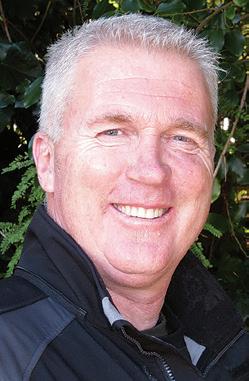
I’m sure most people in our industry were happy to say sayonara to 2022 with the gilded belief that 2023 will see some economic stability in China - now that Xi Jinping has realized Covid is as hard to keep under control as a problematic prince. The theory is: Now that Covid has taken to China like Harry has to the media, it should blow through the population reasonably quickly and everyone can get back to building things and making things which use logs... without the threat of continued lockdowns.
This belief has been buoyed by increased AWG (At Wharf Gate) export log prices in January with many exporters upping the ante by around $8/m3 over the December offerings.
What is important to note is that this isn’t a direct result of increased demand, moreover: a realization by Chinese buyers that NZ supply is subdued, in-market inventories are tracking down slowly, and the bottom of the market cycle has likely been reached.
Shipping rates have reduced into the very early $US30’s/m3 and the in-market sales prices (CFR) have increased to a bit over $US130/m3, giving an FOB (Free on Board – CFR sales price minus shipping costs) price of around $US100/m3 which is about the point where we can get forest owners paying attention. The simple math on how these numbers translate into actual $NZ AWG sales prices (the gross price that forest owners receive) is as follows: ((CFR price-Shipping cost)/$US:NZ exchange
rate)) port storage and marshalling costs. Putting this into current numbers we have (($US130$US30)/0.635)-$NZ20=$NZ137/ m3 AWG. But wait, there’s a $7/ m3 difference between $137/m3 and the $130/m3 that we have been offered by exporters. No, Grant Robertson hasn’t been fiddling around in there somewhere; this is exporters profit margin which will include some accounting for vessels and foreign exchange fixed at higher rates. It’s also important to note that different ports have different storage
and berthage costs, so AWG prices vary between regions. What are my thoughts for price and demand through 2023? Unfortunately, my crystal ball was stolen in a ram-raid. Looking at the macroeconomics of China, it’s hard to see a substantial (or any) upswing in demand even though there has been a recent announcement of residential construction stimulus. The mitigating factor which will help keep some buoyancy in pricing is the reduced NZ supply, which is likely be carried through
the year as a significant number of harvesting contractors have exited the system over the past 12 months. History shows that as soon as prices go through the $NZ135 AWG mark, supply increases significantly. The problem is that this generally hits China while they are on holiday for a month over Chinese New Year. Inventories blow out and prices fall, and it is unlikely we will be able to react as quickly to price increases as we have in the past. A decent chunk of the pruned logs sawn in NZ are destined for overseas lumber markets; and it is no secret that Europe and the USA are facing some economic headwinds in their housing markets, which will also have a knock-on effect to lumber demand. However, prices for domestic pruned and sawlogs remain solid - and these markets continue to underpin forest owner returns. So, fingers crossed that 2023 is a better year than last as it is shaping up well at this point. The first two quarters are likely to see attractive log prices due to a tight supply situation and a return to work in China, but the rest of the year might be less attractive.
18 February 2023 News Farming TOP SOUTH MONTHLY
First two quarters of 2023 are likely to see attractive log prices.
Photo: Barbara Stuart.
Pete Watson
Rare as a dozen eggs
99
Rose Rd, Upper Moutere
Most people know the saying “When life gives you lemons, make lemonade”, so I guess when life gives you Lemonade, you have cracked it! One thing is for sure, you certainly won’t be disappointed that you grabbed this opportunity by the horns.
Sitting pretty on a flat 6.5Ha, this property has so much to offer. The main dwelling sits elevated on the block enjoying great sun, spacious open plan kitchen and lounge, large second lounge and fantastic outdoor area. An attached fully self-contained one bedroom cottage, creates options for large families, or even passive income. With a generous irrigation right, combined with the exceptional climate we enjoy throughout the Moutere opens this property up to a raft of horticultural, viticultural or pip fruit options as well as other possibilities. Rose Road is a quiet country no through road, where you will feel a million miles away from the rat race, but the reality is your 5 minutes from Upper Moutere township.
Tender Closing Thursday 16th Feb 2023, 1pm

Toby Randall
M 027 233 9170 toby.randall@harcourts.co.nz
Land, luxuries and location
51 Redwood Park Rd, Redwood Valley
Sitting pretty on a generous 12 Ha of land, you will find this outstanding home enjoying all day sun, and views out over countryside and Tasman Bay. The home itself has been modernised and has had a substantial renovation undertaken by the current owners including the new designer and highly specked open plan kitchen. If you’re an entertainer or just love the idea of bathing in the Tasman sunshine, flowing out from the main living area you will find this fantastic entertainment deck/patio complete with spa pool, 10mx4m inground solar heated mineral pool, pizza oven and BBQ area – really what else could you ask for!

Out on the land, compromising of gentle rolling to some steeper hill country, the block is spilt into 4 main paddocks, with the property currently utilised for horse grazing. With great water supply and storage, excellent shedding, an all weather arena, complete with stables and tack shed, and if horses aren’t your thing, there would be plenty of other options for this large flat area.
Price by Negotiation over $1,900,000
Toby Randall
M 027 233 9170 toby.randall@harcourts.co.nz



They should have called it Pleasant Flat
104 Bryant Rd, Brightwater


Pheasant Flat is located on the outskirts of Brightwater, boasting options galore when it comes to the ideal lifestyle property – an easy stroll or bike down the cycleway, for coffee, cake or a colder beverage, yet far enough away to create your dream lifestyle, without the neighbours peering over the fence. The recently renovated one bedroom, one bathroom cottage with a large garage and workshop would make an excellent home for a young couple starting out, or for those who are young at heart with empty nests. Nest still full, or looking to build the dream home? There is building consent to build a second dwelling in place. Zoned Rural 1, a resource consent in place irrigating up to 8.64 HA, creating some real passive income options, alongside the possibilities of renting out the cottage once you build? Other improvements include farm sheds and cattle yards This could also be an excellent land bank, so why not buy now, enjoy this great property and potentially watch your investment grow?
$1,400,000 + GST (if any)
Toby Randall
M 027 233 9170
toby.randall@harcourts.co.nz
Productive lifestyle... or carbon credits
0 Win Valley Rd
If you’re looking for large lifestyle, a grazing block or a Forestry/Carbon block then this could be the property for you.
Option 1 - With outstanding views over Mt Arthur and the ranges, 2 units of Dovedale water and reliable soil reports and fertiliser history. Part of a larger holding, this 35 HA (subject to boundary adjustment) will exceed your expectations. Priced at $750,000 + GST (if any)



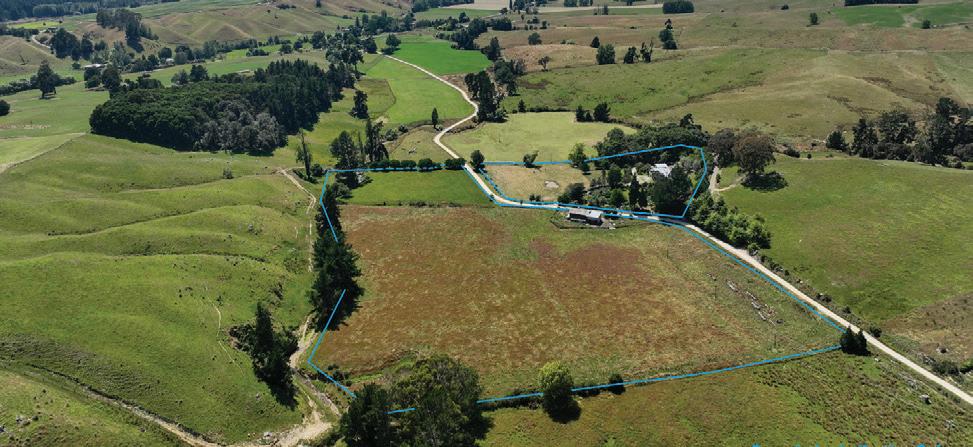
Option 2 - There is also a further 100 HA approx. with 32.8HA of young pine plus a further 10HA of cutover to be planted, as well as some smaller stands of Douglas and Macrocarpa – 24.5 HA having been recently approved in the ETS. Good access, tracks and skid sites are already in place. The balance of the land is made up of 24 HA of easy rolling grazing and established native trees. Fencing, stock water, cattle yards and sheds are all in place. Priced at $1,050,000 + GST (if any)
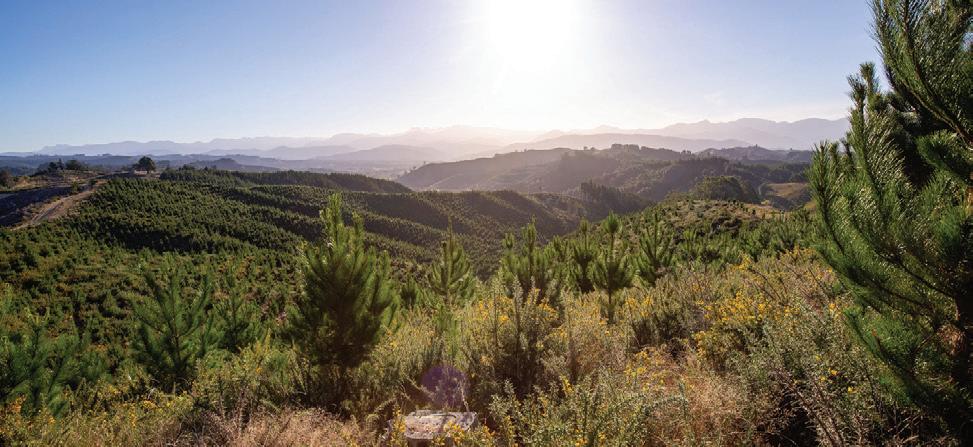
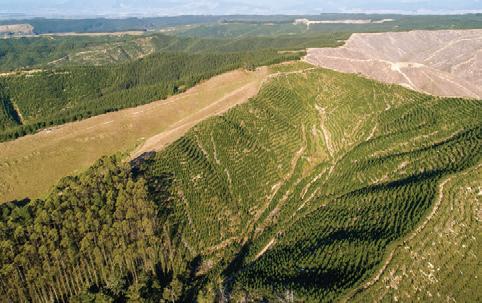
For Sale
Toby Randall M 027 233 9170
toby.randall@harcourts.co.nz








Advert Farming TOP SOUTH MONTHLY February 2023 19
Fire safety tips for tractors, 4WDs and Motorbikes/ATVs
DARREN CRAWFORD FENZ
Take care using tractors, 4WDs or motorbikes/ATVs when conditions are hot and dry, as sparks can easily set off dry grass or bird nest build-up in your vehicle.
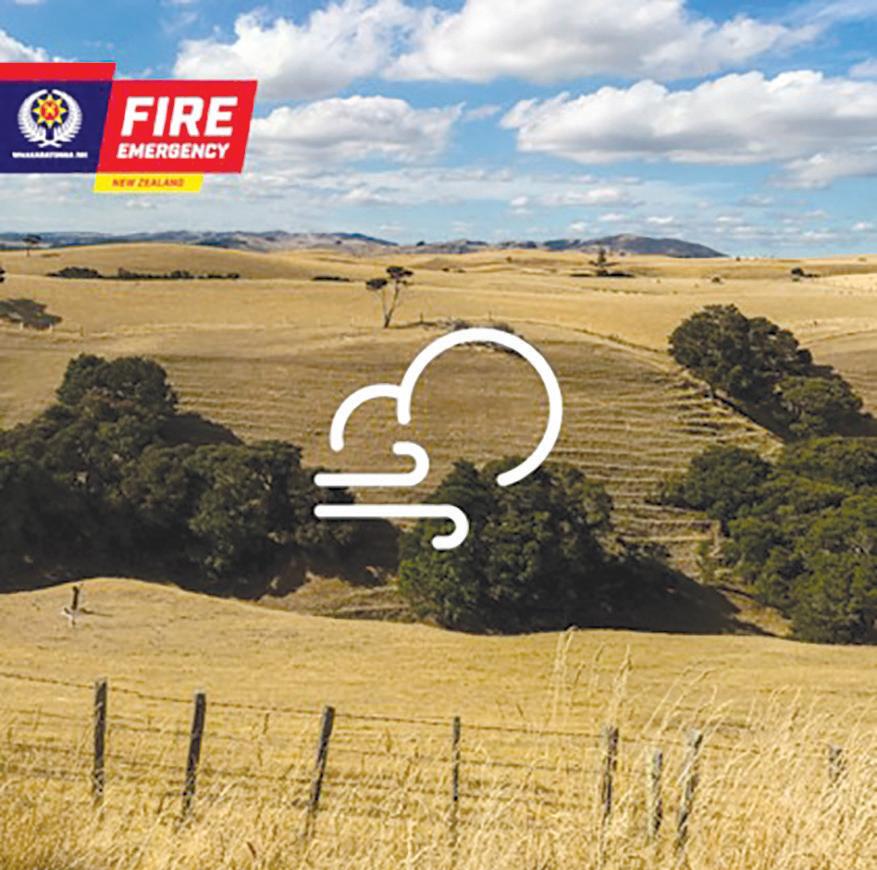
Before you start, check the current fire danger level and other conditions:
• Check the conditions: Try to avoid using tractors, 4WDs and motorbikes/ATVs around long dry vegetation in hot, dry and/or windy weather. Consider performing any mowing, chainsaw and brush cutting activities in the morning between 6-10am as this is when it is cooler, less windy and generally there is a dew on the ground. Avoid using in the afternoon as typically this is the hottest and windiest part of the day, which can increase the risk of flammable materials or dry grass igniting. It only takes a tiny spark to ignite dry grass, take extreme caution.
• Check for nests: Check spaces machinery particularly exhausts and the motor regularly, as starlings and other birds like to make nests that can ignite when the machine is used causing a fire. Even if you have checked for nests at the start of the day, check during a lunch
MARLBOROUGH PLANNING | SURVEYING | ENGINEERING


Anna and the team are land development experts and can help with all your resource consent needs around the farm.
Get in touch about your next project, and with their experience and expert knowledge they’ll save you time and unnecessary cost in preparing your resource consent, giving it the best chance of being approved without delays SUBDIVISIONS
break or other stops as birds can quickly start building a nest.
• Clear out your belly pan: Grass heads and seeds from long grass will collect in your vehicle’s belly pan or other places, and as they get hot they can light on fire, then drop out
Legal protection for your farm through the stages of life
Make a plan to protect your farming and rural assets now and in the future.
onto dry paddocks, so clear them out regularly.
• Maintain your machinery: Check that your machinery has no mechanical defects that could start a fire – especially in its bearings or moving parts and the exhaust this must be an approved exhaust system in good working condition and fitted with a spark arrester.
• Don’t park your vehicle over dry grass or other vegetation: Catalytic converters and hot exhaust systems can cause fires.
• Fit a spark arrestor: ATVs, motorbikes, motocross bikes and other vehicles generate a lot of heat in their exhaust systems. Fit a spark arrestor to trap any hot particles from the engine and avoid parking or stopping your vehicle on dry grass.
• Fire Suppression/Extinguishers: Have firefighting equipment such as an extinguisher, hose, water cart, sprayers at hand and know how to use it.
Top Safety Tips
• Avoid using vehicles off road or near dry vegetation in hot, dry and/or windy weather or when the Fire Danger Index is Very High or Extreme.
• Clean belly pans and the spaces around exhausts and motors.
• Regularly check for bird nests and other buildup.
• Have firefighting equipment on hand –and know how to use it.
Wild weather and resource consent requirements
ANNA BENSEMANN
Emergency powers under the Resource Management Act (RMA) allow for works to be undertaken without a resource consent in certain circumstances. With the wild weather hitting New Zealand recently, these provisions are sure to be exercised, but Section 330 of the RMA does not provide carte blanche ability to start moving debris or altering waterways by any person who considers there is a risk. The provisions contain key features to control who, and when, emergency powers can be exercised.
Only an Authorised Person may utilise these powers, and this is limited to those who have financial responsibility for public work, local government, an approved requiring authority or network operator (such as power networks), or someone who provides a lifeline utility service defined in the Civil Defence Emergency Management Act. This means farmers concerned about their land who want to start doing works that would normally need a resource consent, are not able to just take action.
The Authorised Person is only allowed to take action if there
is an adverse effect on the environment that requires immediate preventative or remedial measures, or a sudden event causing loss of life, injury, or serious damage to property. When clearing debris off roads and away from abutments of bridges, there may have been a requirement for earthworks consents or activities in the beds of rivers or streams under the RMA in normal circumstances.
However, if the clearing of such material is necessary to ensure people can continue to access the road safely, particularly if it’s an important access road, an authorised person may be able to undertake works without a resource consent. Works are limited to only those necessary to deal with the emergency and are not an opportunity to do further preventative works or other works not required for the immediate response. There is not an opportunity to realign a stream, or widen a road that was not necessary to remove the immediate emergency.
After the works are complete
the Authorised Person is required to inform the consent authority of the works and to make an application for resource consent for the works. Therefore, Authorised Persons will keep records of the emergency situation, the actions taken and the reasons for the actions during the course of the works, to assist with seeking the retrospective resource consent. For the everyday landowner, the provisions of Section 330 do not offer a clear solution to remediating emergency situations unless they can get authority from their local council to undertake the works as part of the local council’s “Authorised Person” status. The risk is undertaking works without the proper authorisations, even during an emergency response, could result in prosecution after the event for actions taken.
Anna Bensemann, Senior Planner, Baseline Group Marlborough, Phone: 03 578 7299, Email: marlborough@blg.nz
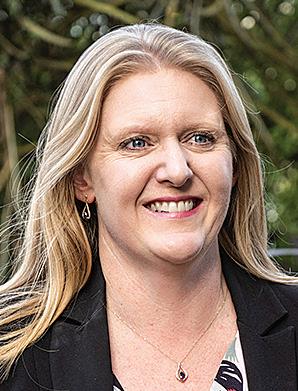
P. 03 578 7299
anna@blg.nz www.blg.nz
DISCHARGES EARTHWORKS CONSENTS Nelson: 78 Selwyn Place Ph: +64 3 548 8349 Richmond: 66 Oxford Street Ph: +64 3 543 9090 www.pittandmoore.co.nz
AND BOUNDARY ADJUSTMENTS WATER PERMITS SEPTIC TANK
Inheritance/estate planning and wills
Succession planning 20 February 2023 News Farming TOP SOUTH MONTHLY
Protecting assets Enduring powers of attorney
Quality Used Tractors and Machinery

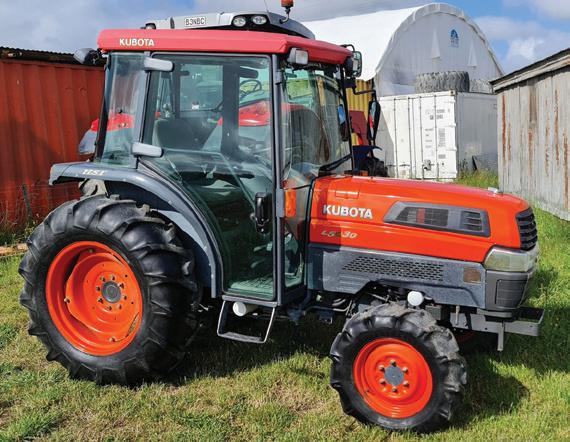
• John Deere 1850 4x4 with very good loader, new clutch, new tyres and other work - $25,000
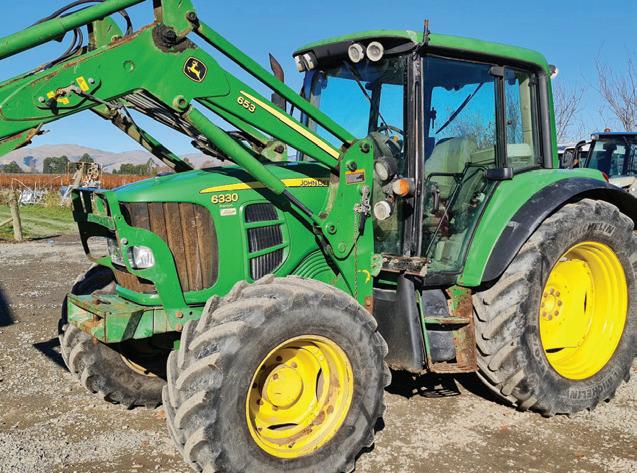
• John Deere 6110 JD loader 6800hrs good rubber and tidy - in workshop
• Massey Ferguson 245 Power Steering Hustler Forklift very tidy. - coming in
• Massey Ferguson 4255 105HP stoll loader 4600hrs - in workshop
• Daedong 80hp 4x4 Cab & Loader, very tidy, recon motor - $27,500
• Iseki 6500 and loader Uro hitch bucket good rubber 4x4 65 70hp good order - $15,000
• Iseki 2160 22hp hydro in tidy order - $5,750
• Massey Ferguson 188 2WD loader, wet brakes, tidy order $10,750

• Berti 1.6 Tfby Mulcher- coming in
• Rata vineyard cultivator crumbler range of sizes available
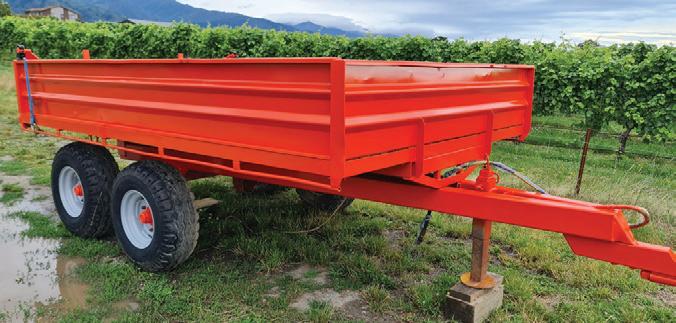
• Dual wheels Snap/locks 38” 36” 34” 30” from - $2,200
• 11 tyne & 13 tyne grubbers from - $1,500
• Duncan 3m Maxitill very tidy - $2,000
• 9ft Cambridge roller - $1,800
• Trimax 1.8 Vineyard Mower, tidy order - $3,000
• Hydralada double in-row vine trimmer. Fully serviced with joy stick - coming in
• Mole plough good order - $1,850
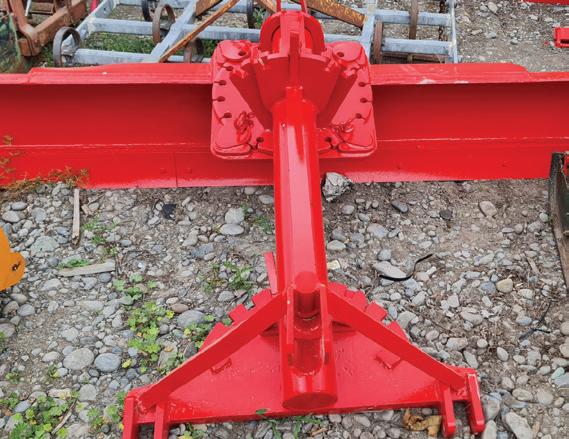
• Nobili VK135 mulcher - $3,500
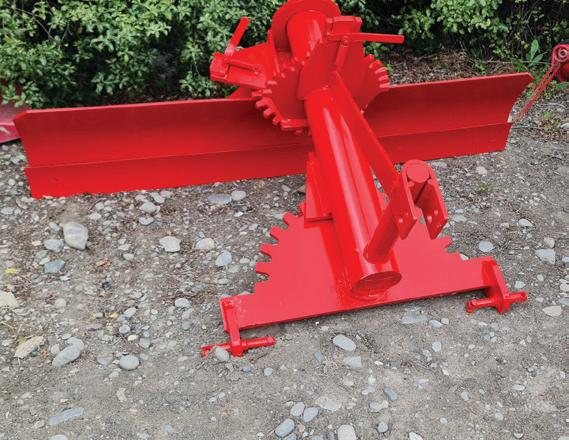
• Silvan 600l herbicide sprayer electric controls - $5,000
• Celli Tiger 190 Rotary hoe new blade 3m wide cage roller - $9,500


• Hustler SL 700 2 bale feeder very good order - $11,500
• Celli Pioneer 170 Spike Rotar very good condition - $12,500
• 3 tonne tipping trailer - coming in
• Ford 7840 4WD Cab 105 HP Pearson Loader - coming in
FARM MACHINERY & REPAIRS LTD Graham 021 228 3956 All prices plus
GST
3m Fieldmaster gear drive topping mower new blades and checked over. $10,000
1.8 MF grader blade excellent order - $2,500
Massey Ferguson 5713 prem model Dyna 6 4 remotes 3300hrs prof model loader. Good rubber. 5 Star screen fitted (being prepared)
$95,000
Ero Double In-row Defoliator. Gen 2. Fully reconditioned without power pack.
Kubota 5030 hydrostatic very low hours factory cab remotes - $22,500
9ft or 2.75m Heavy duty Belcher blade in excellent order - $4,500
Bucktown 6ton hy tipping trailer very. Good order - $16,000
John Deere 6330 premium 110 hp JD self levelling loader very good tyres fully serviced and in good condition. $55,000
Advert Farming TOP SOUTH MONTHLY February 2023 21
Massey Ferguson 5711SL 2900hrs, good rubber, excellent condition. Semi power shift 100 LPM hydraulics. Hard to find with low hours 110 HP. $88,500
How world events are affecting meat prices
ANDREW RITCHIE
Murray Behrent, Group Manager for Livestock at Alliance, spoke at a recent farmer’s meeting at Waitaria Bay in the Kenepuru Sounds. He gave an interesting insight into the issues affecting meat prices paid to farmers.
Major factors include the war in Ukraine, Covid, a drought in the food-producing areas of the United States and China, and inflation.
The US drought has resulted in the mass slaughter of breeding cows, which has depressed the price of beef. Covid has had a major impact on the cost of shipping; a forty-foot container, prior to Covid, cost $2900 US.
The same container now costs $7000, this increases the cost of transportation by two cents a kilo. Chilled containers previously reached their destination on time 45% of the time.
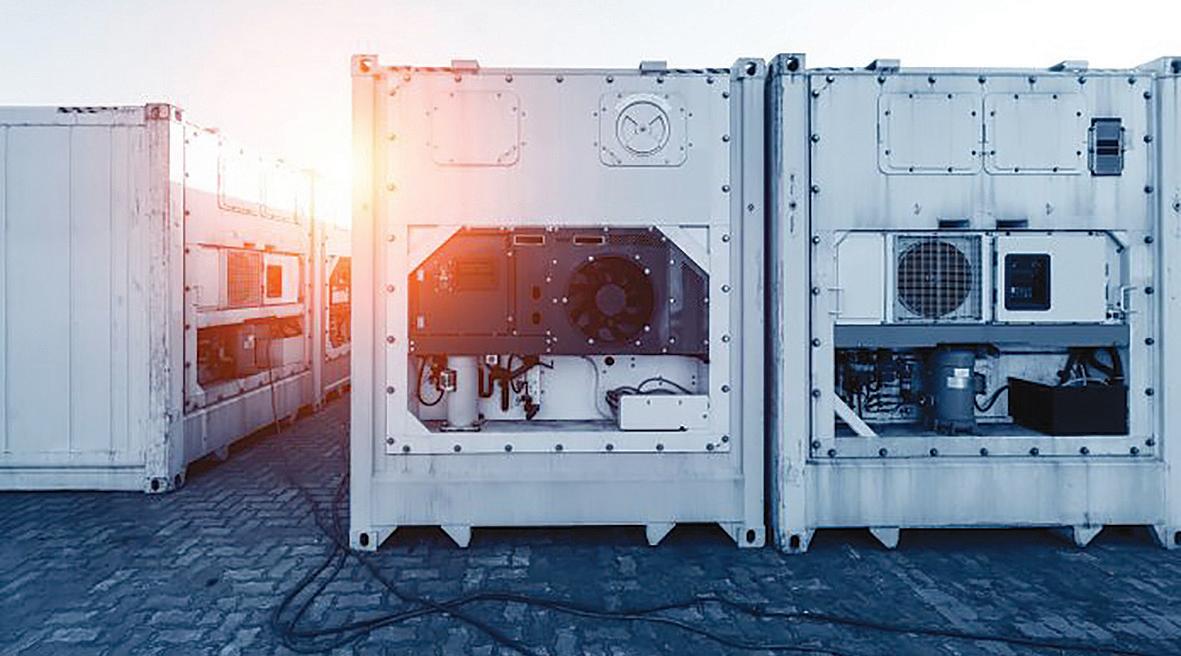
Now only 15% arrive on schedule. Chilled product, having travelled for six weeks has a three-week shelf life at destination.
This has resulted in meat companies going back to supplying
frozen product to their overseas markets.
An acute labour shortage has resulted in a backlog at processing plants as the maximum demand for killing space begins from January onwards.
The exchange rate has a profound affect on the price paid to farmers and the NZ dollar remains strong. By selling more product
Book Review
“For the Love of Farming - Celebrating Farming in New Zealand” by Alan Gibson. Published by Exile Publishing $59.99.
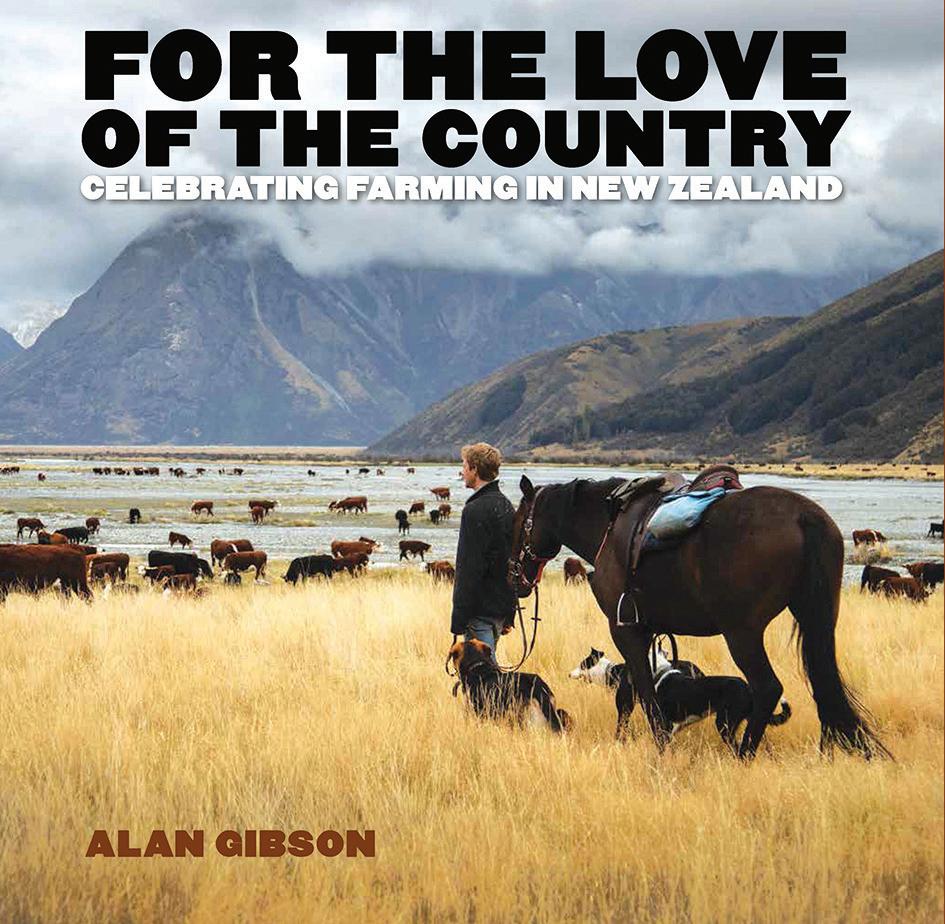
TONY ORMAN
Alan Gibson has been a photo-journalist for Auckland’s New Zealand Herald, a job which he revelled in. Frequently it took him into the rural heartland - a return to the environment he grew up on in the Waikato. His newspaper job took him on assignments to a variety of place from high country stations, to aquaculture, horse studs, deer, dairying and other pastoral farming styles,
orchards, vineyards poultry farms, apiarists and others.
The book largely features the many excellent photographs
Alan captured but there’s “fat captions” to photos and interviews that give a nice balance of the visual and written.
Marlborough features with a portrayal of a vineyard and mussel farm. Alan Gibson has been awarded NZ Press Photographer of the Year title - junior and senior, six times. An impressive book.
into the domestic market this can be avoided.
Domestic sales by Alliance in NZ have risen from $50 million to $150 million. Trade to the UK has decreased by up to 12% due to the shrinking of the restaurant trade. Similarly in China where the country has experienced stringent lockdown measures. India is an emerging market mainly into
top restaurants, but is developing slowly due to a 40% import tariff.
Australia remains New Zealand’s biggest competitor in the marketplace.
The UK and US remain the largest markets for Alliance with the demand for grassfed quality stock strong. The company has introduced yield improvement techniques to ensure the maximum
amount of meat is removed from the bone.
Gains of $4 per lamb and $70 per bull were examples given of how more revenue per animal has been achieved.
Value for the farmer can be added by supplying livestock to precise specifications. In the case of beef, up to a dollar per kilogram can be obtained by supplying an animal with a greater amount of marbling.
Labour shortages have been ameliorated by moving stock around the country to plants that are not operating to capacity.
Store animals can be purchased by the company and moved onto farmers who are in a better position to finish the stock. At one point three million stores were finished this way, “so keeping them in the family.”
Murray encouraged farmers to communicate with their agents early so that processing plans can be put in place well in advance, and stores can be moved if finishing is not an option. Despite the headwinds, Murray expects prices to revive during the new year.
Damien O’Connor to discuss agricultural trade in Europe
HAMISH BARWICK
Federated Farmers
The government is maintaining its strong trade focus in 2023 with Trade and Agriculture Minister Damien O’Connor visiting Europe this week to discuss the role of agricultural trade in climate change and food security, WTO reform and New Zealand agricultural innovation.
O’Connor will travel to Switzerland to attend the World Economic Forum and associated World Trade Organization (WTO) meetings in Davos, before travelling to Berlin for the Global Forum for Food and Agriculture and meetings with German government and industry leaders.
“The global economy is moving through strong headwinds, which will buffet New Zealand this year,” O’Connor said.
“We’re focussed on supporting our exporters and in particular our primary industries to adapt as issues like climate change challenge all economies. We will also continue to work with like-minded partners to reform the WTO,
which will provide stability and benefit for all members.
“The World Economic Forum brings together civil society, business and political leaders annually to discuss some of the world’s most pressing challenges.”
land’s Trade for All agenda. He will also hold bilateral meetings with trade counterparts, attend a Swiss-hosted WTO mini-ministerial meeting and a Canada-hosted “Ottawa Group” session on WTO reform.
“An area of priority to New Zealand is the return to a well-functioning dispute settlement system as a critical and foundational pillar of the WTO. The Ottawa Group meeting presents the opportunity to discuss how we work towards this goal with our partners,” O’Connor said.
Damien O’Connor said the Global Forum for Food and Agriculture provides a platform to showcase New Zealand’s global leadership and innovation in sustainable agriculture.
This year’s World Economic Forum theme ‘Cooperation in a Fragmented World’ resonates for New Zealand, especially as we continue to reconnect with the world following the pandemic,”
O’Connor said.
At the forum O’Connor will participate in a panel on indigenous trade, highlighting New Zea-
“The Global Forum for Food and Agriculture is the world’s largest informal conference of agriculture ministers and industry. New Zealand’s participation enhances our credentials as a global leader in agricultural innovation along with our exporting brand. I’m looking forward to discussing partnership opportunities for climate research in agriculture.”
22 February 2023 News Farming TOP SOUTH MONTHLY
The global economy is moving through strong headwinds, which will buffet New Zealand this year
Damien O’Connor
Chilled shipping containers. Photo: File.


Advert Farming TOP SOUTH MONTHLY February 2023 23
WEST COAST
Buttering up the Japanese market
New Zealand’s rugby’s influence was a key ingredient in Westgold’s award-winning social marketing campaign to raise awareness of its butter in Japan. Westgold’s “Buttering up the Japanese Market” campaign has won the award for Best Paid Social Campaign in the international Drum Awards Digital Advertising, APAC. The award is for an innovative strategy or campaign that engaged a target audience.
Westgold’s senior brand manager Leanne Clemens says knowing that in Japan more men traditionally do the supermarket shop compared to other markets paid off with how the campaign to raise awareness of Westgold butter, was pitched.
“We made our grass-fed, clean-butter story relevant to the Japanese consumer by producing content that understood cultural and social norms,” she says.
“New Zealand’s visibility in Japan is through our rugby and we needed the male shopper to join the ‘footy dots’ and try our butter.”
Quiet
Leanne Clemens says the campaign used well-known Japanese influencers and New Zealand rugby players, including those playing in the Japanese league as well as “likeable” former All Blacks, to promote how to use Westgold butter in savoury, locally-inspired recipes.
“This helped us position Westgold as a premium product in recipes, highlighting how great it tastes, along with the health benefits of our grass-fed butter.”
To support the influencer campaign, the team also ran branded video and display content to gain reach and familiarise the audience with Westgold butter.
Leanne Clemens says the results of the campaign were outstanding.
“We started with low brand awareness in Tokyo, 10 per cent in April 2021, and increased it to 15 per cent in November 2021 – a 50 per cent increase in prompted awareness. We well exceeded our target. It was an excellent campaign,” she says.
Facial Eczema on the rise
BARBARA STUART
Days of warm, humid weather since December, combined with warmer than normal sea off the West Coast, are the right conditions for Facial Eczema. The tiny fungal spores which produce harmful toxins grow at the base of grass swards and when cloven-hoofed animals, (cows, deer, and sheep) ingest the spores, they develop Facial Eczema, reports West Coast vet’s, Laurence Cohen. This year, he says, spore numbers are increasing far sooner than in previous seasons.
Laurence Cohen, a large animal veterinarian, arrived at the West Coast Vet Clinic in 2015. Back then Facial Eczema was considered a North Island issue, and was not seen in the practice however, slowly since then farmers have begun to report more cases due to weather conditions that suit the spores.
Five years ago, the first cases began to appear at Mawheraiti, Ikamatua and south of Reefton.
The Facial Eczema spores flourish in warm humid conditions.
Laurence says the practice has been monitoring and counting spores off sample paddocks on three different farms regularly
and this week the spore samples were between 5-15,000. Each year the affected area has become larger and extends further south, he says.
Anecdotally, he hears of animals affected by Facial Eczema in the Hokitika area too but no counts have been performed to confirm the diagnosis. When cows eat grass with the spores in, the toxins then attack the liver causing damage. Severe cases cause acute liver failure and can be lethal. Plus, in-calf cows can be impacted up to six months later with the stress at calving and having an already compromised liver.
Signs to be aware of are a sun-
burn-like condition, skin peeling and sensitivity to sunlight (animals who won’t leave the shed or shade.)
He says to watch for cows in the early phase when their coat stops looking smooth and appears to stand up on end. He also says there can be variation between farms, as well as paddocks on farms, with some paddocks more likely to be impacted by spores than others. Becoming aware of those sites is a practical way to reduce problems.
Laurence encourages farmers to monitor locally and get prepared. If anyone has concerns, they should contact their local veterinarian for advice.
achievers continuing the logging and milling tradition
BARBARA STUART
In past generations, the timber milling industry on the Westcoast of the South Island was all classed as extractive, nowadays there’s a big focus on sustainability. Westco Lumber employs around seventy-five staff making it a significant employer for the region. The company processes local, sustainably-produced pinus radiata, supplying both local and overseas markets and bringing economic benefit while continuing the West Coast tradition of logging and milling timber.

Celia Kerr, whose job is log purchasing for Westco Lumber, showed us around the plant. “The plant might look old and worn, but it works, plus it’s up to the job.”

The team here are experts at what they do. Without them, she says, there would be no Westco. “The

men here turn out a top-quality product.”
Celia sources pinus radiata locally on the West Coast, north and south Canterbury, Nelson, and Marlborough. In general, she says she looks for large well-tended logs with a diameter of 45cm+ and low pith proportion that are free from pockets of resin and blue stain which spoil the timber.
She loves the job and says balancing the in-flow of logs that meet company criteria and keeping the mill team in work can worry her at times, especially when suitable logs are hard to find. On our tour around the factory, we meet the team. Celia proudly shares with us the talents of every individual. We met ‘Bushy,’ the independent scaling and measuring contractor, Mouse and Creamy who operate the saw milling machines, plus
the whole team involved in the process.
Celia explains how they sort the milled lengths into grade, size, and length. Every log is tagged before milling then she can trace
each plank back to the original forest.
Each batch of logs is studied to ascertain how much of the log is utilised. 50% is good, just recently they had a batch which made
61.9% utilisation which is excellent.
Finally, we meet the men pulling lengths of timber off the line, Celia tells us this job is physically hard. The men do it all day which keeps them extremely fit. During a cheerful exchange of banter, we make our way out to where the stacks of timber are dispatched and filleted. At this point they are either sent to the drying sheds or to Christchurch for treating where they can be sold locally for housing or exported overseas. Celia says there is little waste, everything is used and the bark goes to a landscaper, the saw dust is used in the boiler and any leftover scraps are picked up by local community for craft work or as kindling firewood for the elderly. Westco, she says, is a true community-focused operation quietly achieving good outcomes for everyone.
24 February 2023 West Coast Farming TOP SOUTH MONTHLY
Celia Kerr, Westco log buyer.
Photo: Barbara Stuart.
Westcoast vet Laurence Cohen alerts farmers to Facial Eczema.
Photo: Supplied.
WEST COAST
Paringa to Golden Bay servicing farm equipment
BARBARA STUART
Based at Kumara Junction on the West Coast, Matt Kuiti is a service technician for the Claas Harvest Centre.
Matt has been with the company for eighteen months, travelling from Paringa near Haast to as far away as Takaka in Golden Bay.

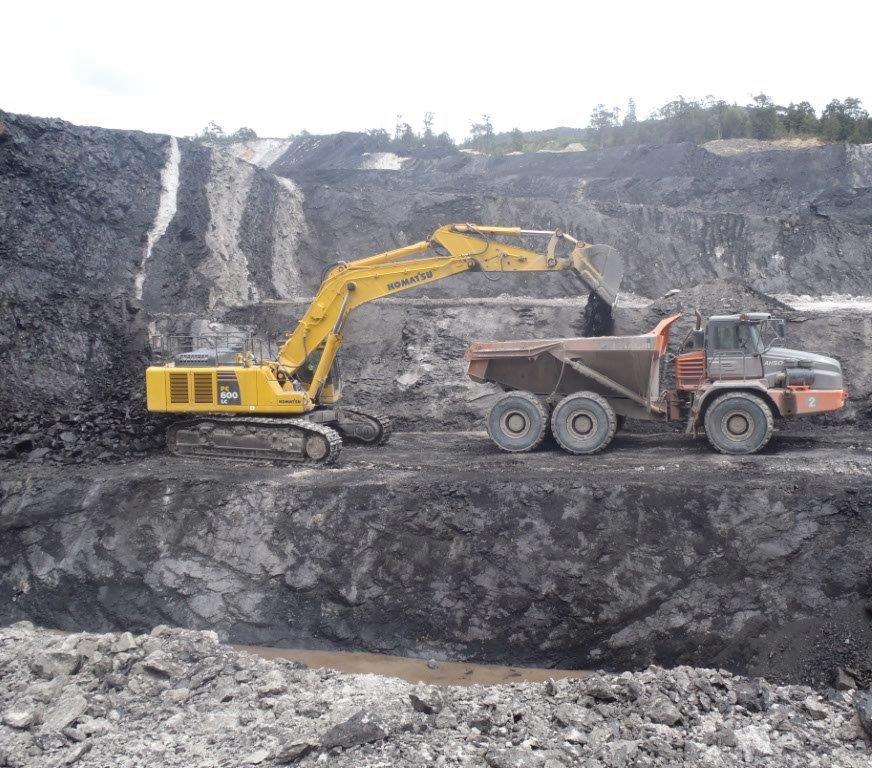
Originally from South Otago, Matt spent several years overseas working for a drilling company, but when Covid hit he came home.
The first job he applied for was with Claas, a German company which sells and services a wide range of agricultural equipment. When I caught up with him along-
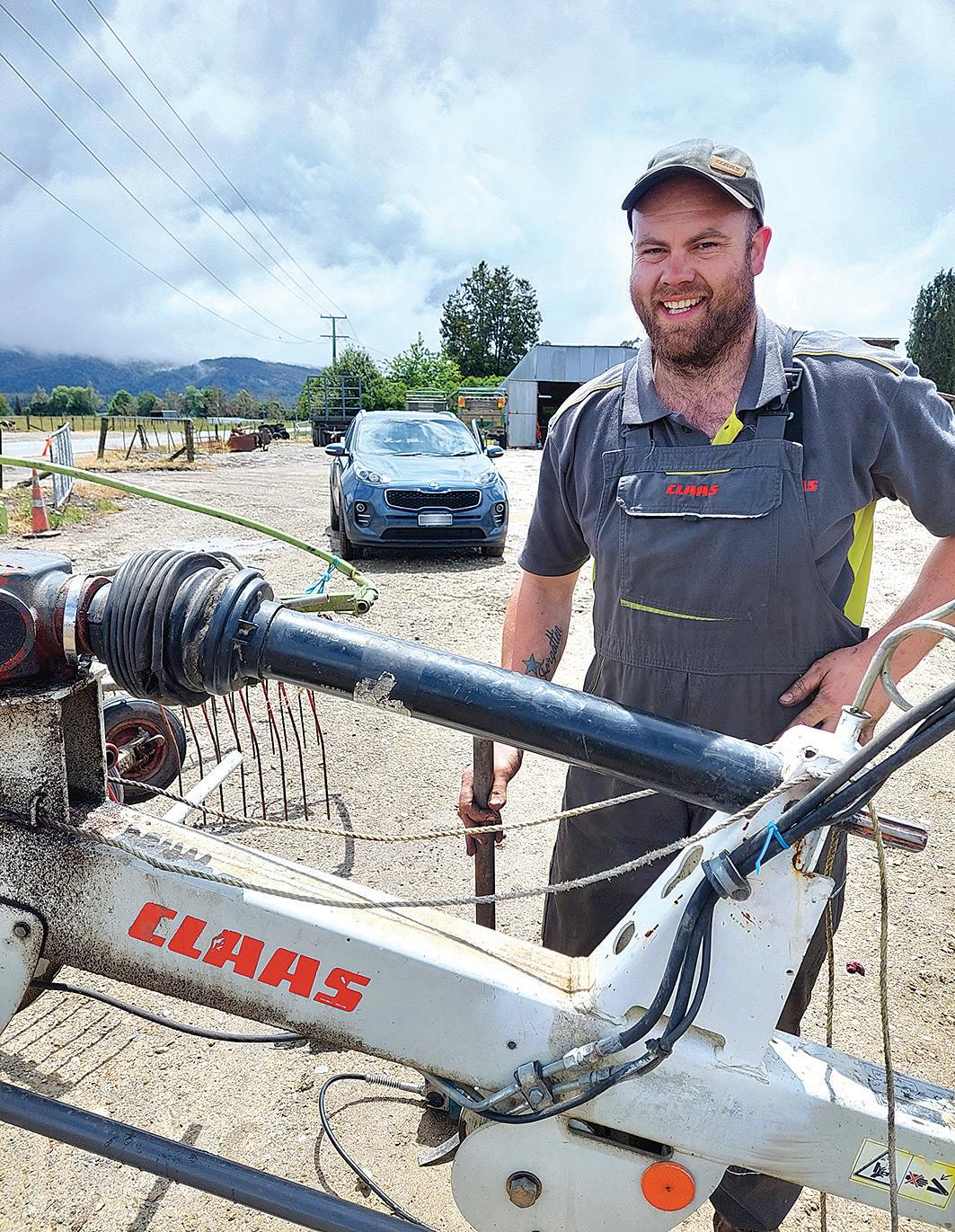
side SH6, he was busy repairing a hay-raking machine before the next downpour of rain arrived. I asked him what he enjoyed most about the job.
He said, being out of a workshop, travelling through great scenery on the way to a job. “As an added bonus,” he smiles, “so far I’ve not had an accident and no one else has driven into me. Something to be grateful for.”
Matt also enjoys rally car driving. In his time off over the winter he likes to work on his rally car, a Mark 11 Escort, which he is rebuilding. And he says over the summer he’s kept busy repairing machinery for farms, helping to support the sector.
Hokitika wins Infrastructure Acceleration Funding
Hokitika has been revealed by Housing Minister Megan Woods as the site of one of the critical infrastructure projects that will get government support to unlock more homes in communities around the country.
Plans by the Westland District Council to develop part of the Hokitika Racecourse for some new housing comes from the Infrastructure Acceleration Fund (IAF) funding will enable homes to be built much sooner than would otherwise be possible.
“Securing funding from the Infrastructure Acceleration Fund (IAF) is a positive step towards achieving Council’s aspirations of increasing the housing supply for our elderly people in the Hokitika area,” says newly-elected Westland District Mayor, Helen Lash.
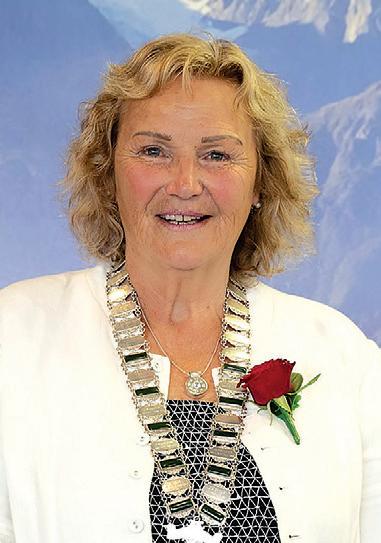
“We hope locals wanting to downsize will free up houses for families.” Helen says she is thrilled to be elected as the Mayor of Westland and 2023 is the start of the real work. Helen also says, “Council recognises, we need to increase pensioner housing to meet current and future demands. Our Long Term Plan identified the area of
the old Hokitika Racecourse, which is already zoned as residential, to be developed with the infrastructure necessary to build housing.
The funding from the IAF will greatly assist the Hokitika community in meeting housing demands for the area. Council’s focus for the project will be to ensure that the development honours the past of this special site and will have strong linkages to the creation of the adjacent recreational reserve. We are very grateful that we are receiving this assistance from the government to provide for our community.”
•
•
•
•
Give

of all grades of industrial and household coal
Suppliers
West Coast sub-bituminous coal with
low ash, low sulphur and clean burning qualities
• High grade West Coast bituminous low ash coal
• Premium grades available for your boiler or multi fuel burner
Bagged coal from 20kg to 1 tonne
Bulk deliveries
Coal storage in the Canterbury region for continuity of supply
Mark a call on 027 531 0998 for a competitive price to have your coal delivered direct from our mines to your place. Phone 0800 110 602 Email mark@birchfieldcoal.co.nz www.birchfieldcoal.co.nz West Coast Farming TOP SOUTH MONTHLY February 2023 25
Helen Lash, Westland Mayor.
Matt Kuiti, out on the job servicing farm machinery.
Photo: Barbara Stuart.
TASMAN

A&P Show a success
ANN THOMPSON Golden Bay Federated Farmers
The annual A&P Show has always been a wonderful showcase of what went on on farm, where all things animal and fowl were poked and prodded, ummed and ahed over. Is this cow the best example of its breed and no, how can the judge possibly think this pig is better than mine?
It has also been the place where big and little people from town and country have shown off their culinary, gardening, flower arranging, photography and handcraft skills. Equestrian events have always been popular, too, and no A&P show is without the woodchopping, shearing and
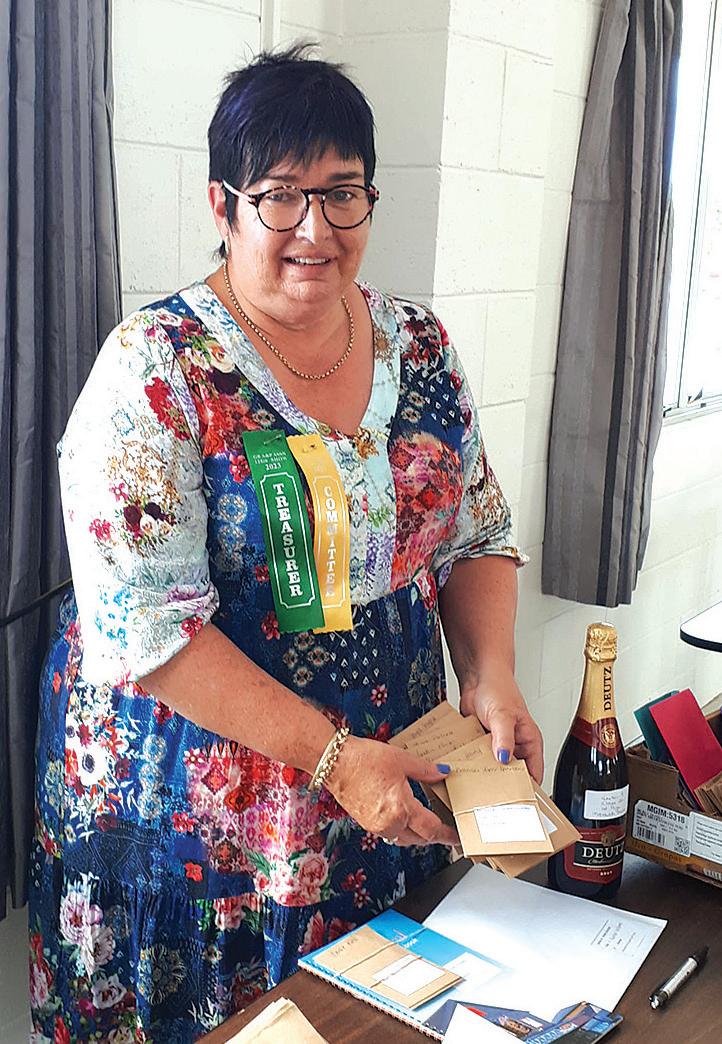
vintage farm machin ery. There have always been plenty of activities for the children to do, too, while Mum and Dad spend a long time watching ‘boring’ things or catching up with old friends.
Gradually, over the years, fewer animals have been shown, and the discovery of Mycoplasma bovis in cattle in 2017 led to cattle being banned from the show altogether. Thankfully, biosecurity measures for showing all animals and fowl have been stepped up so that even cattle can now be shown again.
It is with great pleasure that I can report that at the 125th Gold-
Nelson Federated Farmers News
The battle by all farmers to protect their industry and businesses continues, and Federated Farmers needs all the support it can get.
The apparent policy of rushing through legislative changes affecting them charges on, with further developments around GHG emission taxes and further changes to the national low slope map and wetlands definitions. So, with contributions from provincial and sector presidents and members, National office continues to try and reflect reality to bureaucracy.
In mid-December government announced changes to their October plan to price agricultural emissions, but the vague improvements are simply not enough and Feds remain opposed. There are still large concerns, unrealistic timelines remain in place, very little detail is included and critical issues remain. Like a new levy that NZ farmers will be the only farmers in the world required to pay.
Government remains focused on the primary purpose of using the methane price to achieve reduction targets. But there is no commitment to base them on what is
scientifically required to reduce methane from agriculture by 2050 for it to be warming neutral and causing no additional warming that is the goal set for all other GHGe.
That 2050 target is based on cherry-picking data from a 2018 international report that explicitly warned against using this data to form domestic policy, as later reiterated by a lead author.
As president Andrew Hoggard said, “Everyone else is talking about food security and working with farmers to develop practical on-farm solutions. Only New Zealand is taking the punitive step of taxing efficient, unsubsidised food production, even if it comes at huge costs.
Feds will stick by the position we took in our submissions, that without a review of the methane targets based on what is required for warming neutrality and for methane to contribute no additional warming, we will not be giving our support to any pricing mechanism.
“Government claims to have ‘worked alongside farming leaders to adapt the proposed system for reducing agricultural emissions.’ I want to make it crystal
clear that this has not involved Federated Farmers. This was not our preference or choice as we were excluded from close talks with the government. Our submission to the government’s draft proposals only supports the pricing of agricultural emissions in NZ if such a pricing mechanism
en Bay A&P Show held late January in Takaka, there were more sheep and cows on display than there have been for many years. While the sheep were not part of the Grand Parade (they
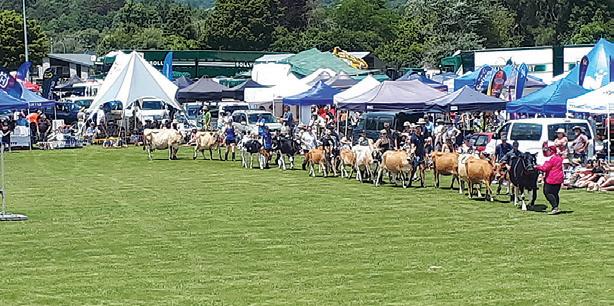
are very difficult to point in the right direction!), the cows and calves made a great show as they were proudly led around the field. All the old favourites were there too, but over the years a few things have fallen by the wayside.
Marching girls and Highland Dancing come to mind, at least here in the Bay. Their place has been taken over by such things as gymnastics on horseback.
He noted a worrying gap between farmer expectations on sequestration and the realities of government accounting that will overwhelmingly advantage large-scale forestry companies over farmers. It continues unwilling to make the inventory targets and therefore sequestration categories differ from international guidance.
“The government report describes sequestration as assistance when it is direct recognition for farmers’ contribution storing carbon to reduce net emissions.”
In mid-December the government released the third version of the national low slope map, but Feds remains unconvinced that a national map can be made to work as it looks to still be a problem and captures a significant amount of land that is farmed extensively.
Federated Farmers has always played a part in helping run the A&P Show, both on the day and behind the scenes in the run up to the event and in the aftermath.
Daphne Woods, who is also the financial whiz behind the local Federated Farmers’ branch, dons that same hat as treasurer for the event. Luckily she has reliable staff on farm, allowing her to dedicate herself, along with the rest of the A&P Show Committee, to making sure the Show is successful. More than ever, this event helps connect town people with country people. This year’s show was one of the best! Thanks to all those who worked behind the scenes and stood behind counters, trade-stands and stalls.
to fence where they shouldn’t need to. Fencing costs are significant, and the costs of putting in water reticulation systems where stock are fenced from waterways adds further significant costs.” This latest map version for land under 500m and average slope of <5 degrees is estimated to incur costs of about $800 million by 2050.
Farmers should check the map for stock exclusion on their farm: mfe.maps.arcgis.com. Inaccuracies should be identified to freshwater@mfe.govt.nz, and to their local MP.
is based on a scientific target for methane, and no additional warming (that is being zero carbon equivalent) by 2050, exclusively incentivising viable and cost-effective mitigation options that are available to farmers, and no emissions leakage or reductions in food production.”
B+LNZ agrees, and chief executive Sam McIvor said, “The map will never be right – it’s just not possible to get a national map accurate enough at the paddock level.
In fact, officials have expressly told the government this. It’s unacceptable for farmers to be told
The government has made two minor changes to wetland regulations reflecting comments made in Federated Farmers’ submission. Unfortunately, the big issues raised have not been addressed. The revised definition of a wetland is still more complex than ‘any wet area that supports a wet ecosystem and is less than 50 percent pasture.’
The Essential Freshwater rules have now been amended nine times, showing the mess this whole process has been and continues to be.
And Feds doubts these are the last changes that will be required.
26 February 2023 Tasman Farming TOP SOUTH MONTHLY
Only New Zealand is taking the punitive step of taxing efficient, unsubsidised food production
Andrew Hoggard
Daphne Woods, treasurer and administrator for FFNZ Golden Bay, bust at the Golden Bay A&P Show. Photo: Supplied.
The grand parade at the Golden Bay A&P Show.
Photo: Supplied.
TASMAN

Ollie Sutton just loves fixing tractors
BARBARA STUART
Ollie Sutton was raised at Brightwater, attending Brightwater Primary and then Waimea Intermediate and College.
When he left high school
Ollie did the pre-trade mechanical engineering course run by the Nelson Marlborough Institute of Technology.
He says, as a mechanical engineer he’s worked at a few different things but it’s the field service role fixing tractors he loves best.
His first job was on the Westcoast with Oceana Gold in their maintenance team. After a year in the job he shifted back home to work for Waimea Contract Carriers for four years before eventually going to work for ‘Willfix’ at Tapawera. There he worked on farm machinery and found his perfect niche.
Ollie says, tractors are like Swiss Army knives with all sorts of attachments and uses. Every farm he goes to the tractors have different fixtures and fittings for a range of jobs which gives him heaps of variety. Believe it or not, one frus-
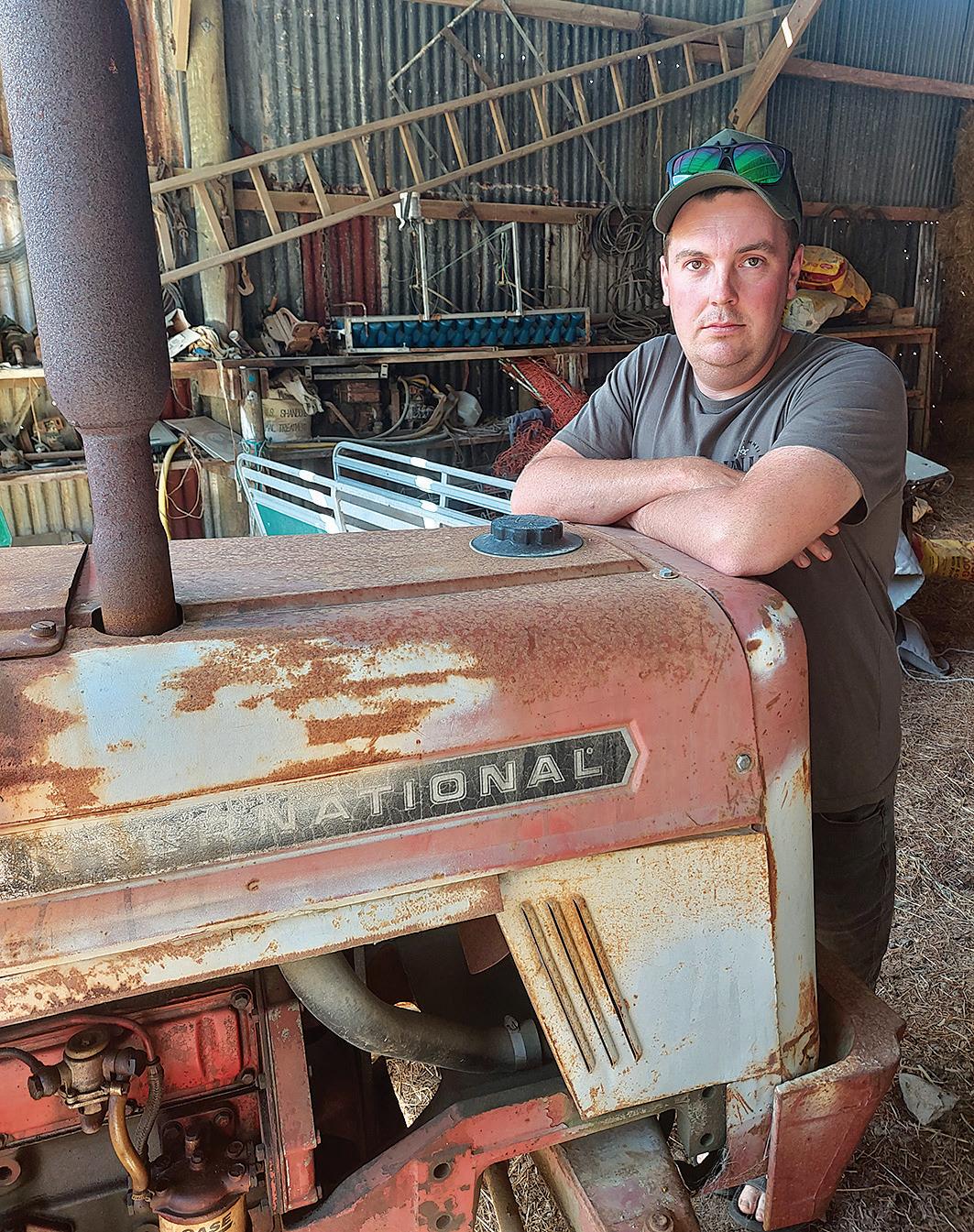
trating breakdown call-out turned out to be no fuel.
On arriving, Ollie asked “does it have fuel?” and was assured, “yes,m it does.”
After two hours of checking everything Ollie discovered, it was empty!
No two days are the same, he says with a smile.
Currently he works for Brian Miller Truck and Tractors (BMTT), he mostly works out in the field anywhere from Murchison, Golden Bay, Rai Valley, Tapawera and the Waimea Plains servicing and repairing farm equipment.
Over the summer months he’s kept busy with call outs to traditional farms, repairing machinery so that farmers can make hay or get crops in.
With a change in land-use to hop farms he’s noticed their tractors only have seasonal use, therefore they don’t get the same wear and tear and there’s less maintenance work.
In the quiet winter months BMTT sends him off for product training. He’s also completed his apprenticeship while working for them and now is qualified in Agricultural Machinery.
New secretary for Tasman Young Farmers

ELOISE
MARTYN
Scent training for dogs and horse grooming keep Rachel Lowe busy when she is not working at the family’s Brightwater-based orchard and shop, or driving large freshly picked strawberries to farming markets in Takaka, Marlborough and Nelson.
Rachel came back to the family orchard, where she was born and raised, earlier in 2022. She had been away for a number of years getting a BA in applied management as well as time spent working
as a horse groomer. “It’s great to be back,” beams Rachel.
“It’s really nice to have the choice to come back and not to have been obliged to stay and work on the orchard”. Rachel helps with a variety of tasks such as pruning, fruit sorting, packing, attending the markets and running the shop.
established Tasman Valley Young Farmers Club, which is steadily growing in numbers.
“The club is a great place to meet some new people and have some fun,” says Rachel.
Rachel Lowe
In November last year Rachel was appointed to the secretary role for the newly-
The first young farmers club was established in 1927 and has been an important part of New Zealand’s food and fibre sector. There are 60 clubs nationwide that have members from all sec-

tors of agriculture and horticulture. “You don’t have to be a farmer to join, if you have an interest in the rural sector or primary industries you can be part of the club,” adds Rachel.
If you are interested in connecting with the Tasman Valley Young Farmers Club, they meet the second Wednesday of each month at 7pm and their meeting locations alternate between the Tapawera Pub and the Brightwater Pub. Contact Blair Anglesey on 027 845 0355 or look them up on Facebook.
*Valid on selected products from 06 December 2022 28 February 2023 or while stocks last. Terms and conditions apply. See in-s HELPFUL ADVICE SHOP ONLINE 24/7 WIDEST RANGE OF BATTERY GARDEN TOOLS GET FREE ACCESSORIES WITH SELECTED POWER TOOLS AT STIHL SHOP* THIS SUMMER’S ALL ABOUT THE ADD-ONS Stihl Shop Richmond 62 Gladstone Rd, Richmond Ph 544 6122 Tasman Farming TOP SOUTH MONTHLY February 2023 27
Ollie Sutton loves tractors. Photo: Supplied.
marlborough

Survey highlights flooding issues
ANDREW RITCHIE
Consultants from Sheppard Agriculture were commissioned by MPI to conduct a survey of residents in Kenepuru Sound affected by the flood damaged infrastructure, to gauge how they have been coping with the disruption.
Top of the list was the affect on mental health with many finding the increased pressure difficult to deal with. The majority were seeking support from friends and family and Rural Support.
One respondent said he relieved stress by going fishing. Repairs to infrastructure was a major financial burden, citing stock access, fencing, building
repair, and tracking among the priorities.


Asked to rate the affect on business with 1 being minimal and 10 no business at all, the average was 6.2 with 8 being a common number.
Most respondents reported that their method of stock movement had previously been by road and now they were dependent on the barge.
There were problems for many in accessing the barge site.
One hundred percent of respondents were finding it more difficult to access farm supplies.
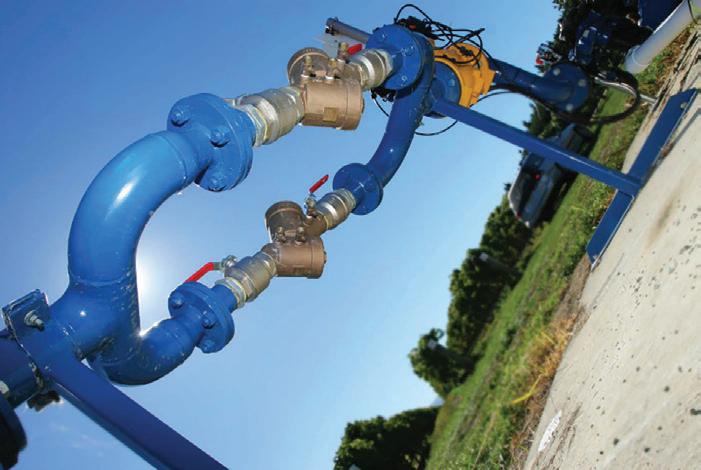
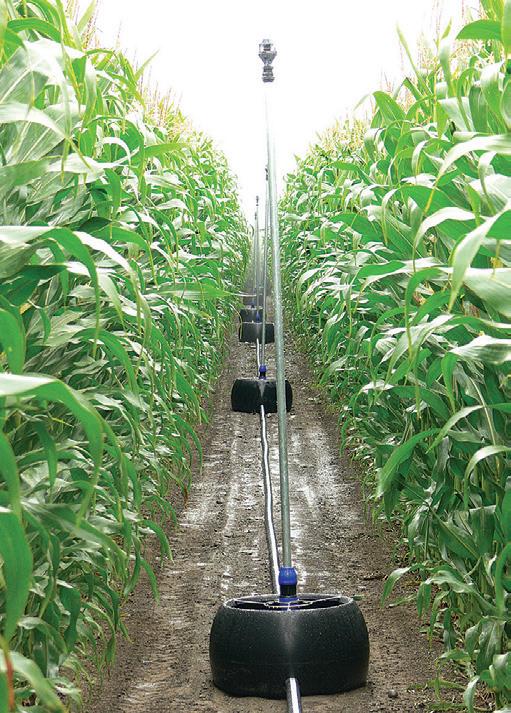
Consultant Greg Sheppard commented that ‘out of adversity often comes opportunity.” He urged residents to identify
the end point. How long will it take to restore farm infrastructure and what are the financial implications? How will things look 10 to 15 years from now?
He urged the community to pool their ideas for mutual gain, to exploit their unique environment and generate efficient, sustainable enterprises. Look carefully at the cost of production and where value can be added.
Bulk buying by combining orders would attract discounts from suppliers. Share machinery so that it is fully utilised. Use the agencies that are available and have declared their willingness to assist to develop a high-quality unique brand of produce from the area.

A unique chance to refocus

ANDREW RITCHIE
Dealing with problems out with your control was a major feature of a talk given by renowned public speaker Doug Avery at a community meeting held at Waitaria Bay during December.
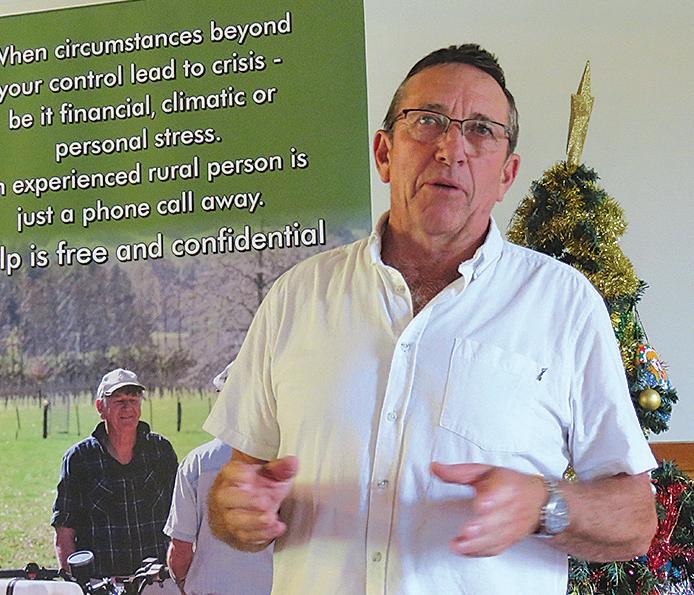
Access to the area has been fraught with difficulty since winter floods seriously damaged the only road, leaving residents relying on water transport to move stock and supplies that would normally be carried by heavy vehicles.
Doug recounted his own experience with three years of drought on his farm at Grassmere, which drove him to the point of despair.
He outlined how he was shown the way to a new future by knowledgeable people such as Dr Derek Moot from Lincoln University. This
earned him the nickname of ‘The lucerne lunatic’ and to winning the South Island Farmer of the Year competition.
He urged the gathering to surround themselves with the cleverest minds, and to present a united voice to those who are in a position to help.
“There are plenty of individuals and organisations who are willing and able to help. Use their expertise. Produce a sustainable plan and create some resilient solutions. Consider how you will feel if the road is still not repaired in two years’ time and you have not used the time to make changes and refocus.”
Doug closed his session by having everyone involved in a song and by encouraging the community to, rather than bouncing back, bounce forward.
28 February 2023 Marlborough Farming TOP SOUTH MONTHLY
Doug Avery delivers his message of hope. Photo: Andrew Ritchie.
Irrigation NZ Certified Designers • Pumping & Filtration • Vineyard Irrigation • Rural Water Keep up to date with opportunities in Marlborough On the Marlborough App SCAN QR TO DOWNLOAD NOW, AVAILABLE FOR IOS & ANDROID — marlboroughapp.co.nz
marlborough


“Shear 4 Cora” represents a wonderful community spirit
 TONY ORMAN
TONY ORMAN
A two day “Shearathon” held in mid-January at Freddy and Nikita Gane’s “Kaituna Ridges” farm near Havelock reflected a wonderful community spirit, said Marlborough shearer Earl Paewai. The sponsored two-day shearing event and auction was to raise money for cancer sufferer Cora McConnell of Wairau Valley who had to go to Germany to get specialised, but very expensive, treatment for a rare variant cancer she is currently battling.
Over $70,000 was raised by the “Kaituna Ridges Shearathon” and an auction held Saturday afternoon, said Freddy Gane. “It was a great weekend with a wonderful spirit of giving for a very worthy cause,” he said. The concept resulted from a “brain-storm” between Freddy Gane and Earl Paewai over a beer in the Woodbourne Tavern at Renwick on the night of a huntaway “bark-up” event in November last year which was also to assist in raising money for Cora’s cancer treatment.
Freddy realised despite the many thousands raised by the bark-up, it was not sufficient to cover the necessary costs. So they came up with the idea of a weekend entitled “Shear 4 Cora” to raise more funds.

Action was vital. “It gave us just six weeks to organise in amongst Christmas - New Year, a funeral, a wedding, school prize-giving, pre-wedding parties, 6000 lambs to crutch, hosted farm tours, vineyard management and on-going business and life administration with raising four youngsters,” ex-

plained Nikita Gane, who added with a smile, “Somehow we pulled it all together, thanks to a very willing and giving community plus some long days and nights to make it happen.”

The embryo of the concept had come from Earl’s daughter who was a shearer in a similar event to raise money for cancer down in Southland.



spirits and sponsorships flooding in.

The generous sponsorship was reflected in some shearers individually raising $6 a sheep shorn. Fun was to the fore when just over $1,000 was donated when shearer Josh Quinn agreed to having his beard and hair cut using a hand piece powered by a hand drill.
Freddy knew Cora through a local veterinarian service and Cora’s husband Euan is prominent in local dog trials which Freddy also competes in and is involved in administration.
Earl Paewai said the weekend event reflected the positive side of human nature.
Shear 4 Blair, was a 24-hour fundraising shearing event held last year in West Otago to raise money for the Southland Charity Hospital Trust. The Southland Charity Hospital Trust was established in 2019 to provide healthcare for people living in the Southern DHB area.
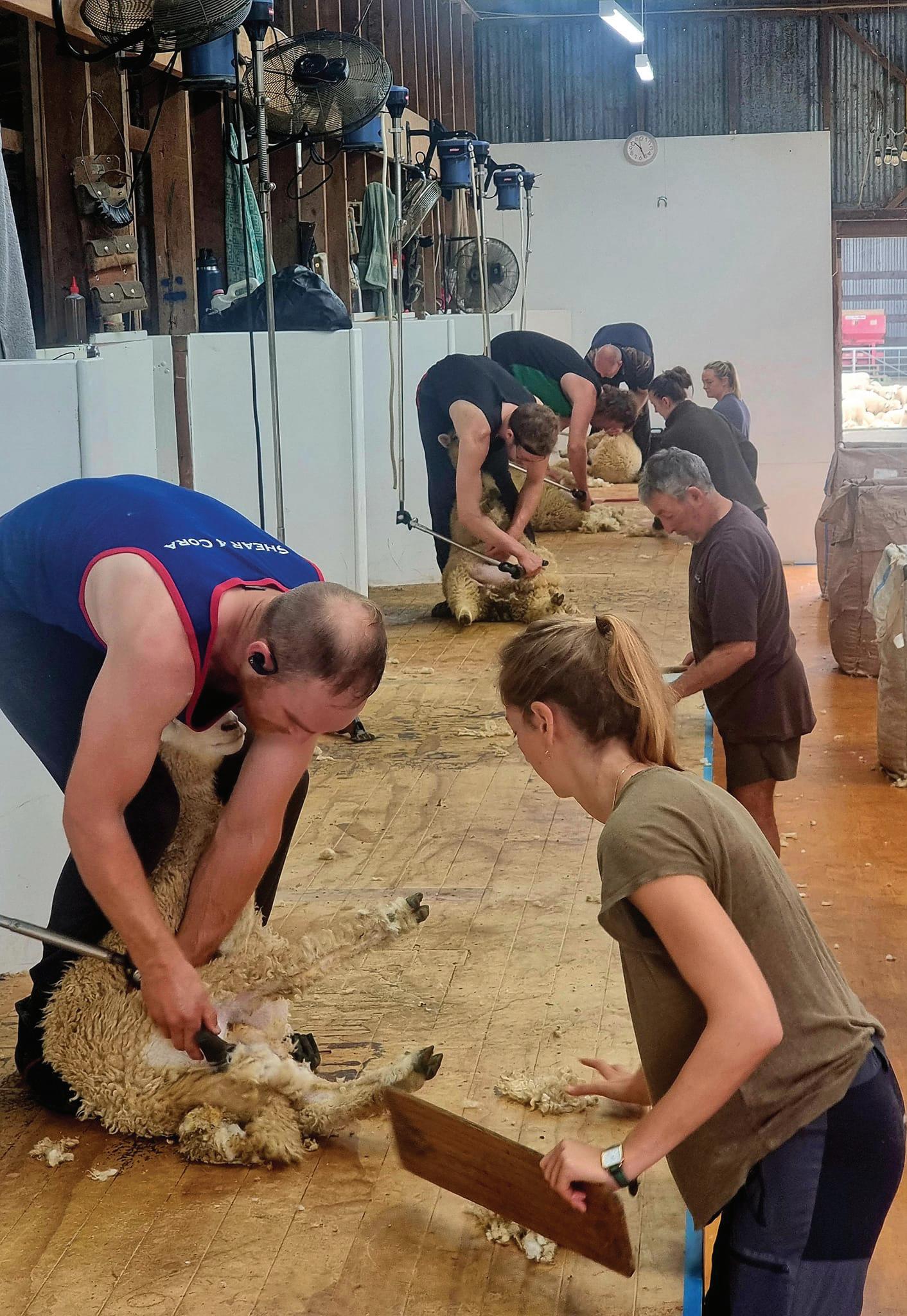
Winton man Blair Vining died of bowel cancer in 2019 after calling for cancer care to be equitable for all New Zealanders. His wife Melissa set up the Southland Charity Hospital in his honour.
“Shearing is a great avenue for the idea,” explained Freddy Gane. “We had the sheep, all 6,000 plus, at Kaituna Ridges, the sheep needed shearing and we had the shearers very willing to give a day or two shearing for the cause.” And it proved a great success with shearers in high
“The sponsorship was pretty heart-warming. It’s a very good cause, it brings people together and brings out the best in people in giving,” he said. “After all, everyone today has a family member or two, or friend who has had to battle cancer or lost dear ones to the disease,” he said.
Earl Paewai grew up on a southern Hawkes Bay farm. The name Paewai is synonymous with top flight rugby even to All Black level. Earl has now lived in Marlborough for 12 years and retired from professional shearing 10 years ago.
He paid tribute to Freddy and Nikita Gane for Kaituna Ridges generous contribution and to sponsors and shearers who en-masse gave so willingly.
“Kaituna Ridge’s quality Romneys were very good to shear,” he added.




Anyone wishing to donate can google Cora McConnell and “Give a Little’ or contact Freddie and Nikita Gane on facebook.
The lineup of volunteer shearers and shed hands who came together to shear for Cora. Photo: Lisa Paewai.
Shearer, Josh Quinn, raised $1000 when he agreed to have his hair and beard shorn off by Earl Paewai. Photo: Lisa Paewai.
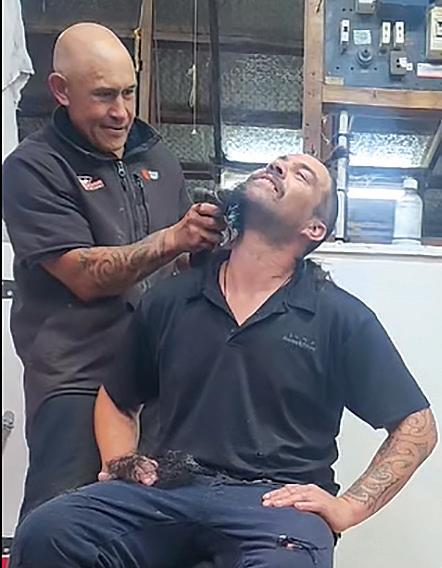
NOW AT - 2 Warwick St, Mayfield, Blenheim 03 579 2500 Your One Stop Shop! • On Road • Off Road • Vineyard • Farm • Hedge • Lawn • Kea Trailers • Service • Parts • Finance Marlborough Farming TOP SOUTH MONTHLY February 2023 29
The sponsorship was pretty heartwarming. It’s a very good cause, it brings people together and brings out the best in people in giving
Earl Paewai
local forestryupdate
Forestry scholarship programme invests in young Kiwis
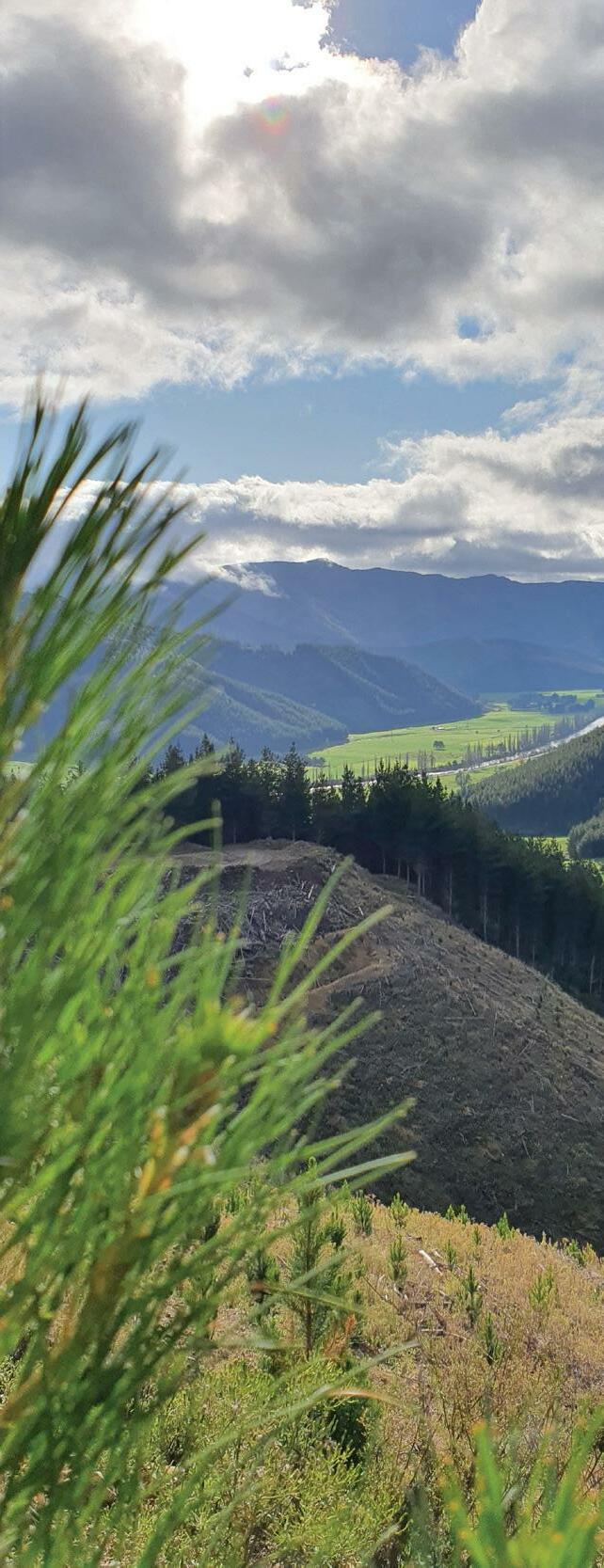
Career opportunities in the forestry and wood processing sector continue to attract talented young New Zealanders, with seven more applicants this year joining the Ngā Karahipi Uru Rākau – Forestry Scholarship programme.
“The forestry and wood processing sector is one of New Zea-

land’s fastest growing industries and offers great careers for people of all ages and abilities,” says Alex Wilson, Director, Forestry Engagement and Advice, Te Uru Rākau – New Zealand Forest Service.
“Forestry involves much more than growing and harvesting plantation forests. It also employs skilled professionals that care for the forest environment, plan and manage forests, manage people and resources, work with modern technology, and operate multi-million-dollar machines and equipment.” Our industry is ever-evolving and for modern forestry to thrive, we need to
grow capability and diversity in the workforce by investing in and employing more people from a diverse range of backgrounds with a broad range of skills.
ry degree programmes,” says Ms Wilson.To date, 30 students throughout New Zealand have received scholarships since 2018, with the first students expected to complete their qualifications at the end of this year.
er tising
it
“We are very excited to see our first cohort of students graduate this year and look forward to welcoming them to the workforce. By taking up careers in forestry and wood-processing, these students will be an important part of a future forestry workforce that deliver for the climate, nature, people and economic outcomes,” says Ms Wilson.
“The scholarship programme, now heading into in its fifth year, provides another pathway into the industry and widens access to tertiary study for Kiwis interested in professional forest-
The successful scholarship recipients for the 2023 academic year are: Charlotte Talbot from Wellington; Jasmine Hagan and Jean Morton from Rotorua; Maggie Crawford from Christchurch; Mataia Cotterill from Auckland; Rauiri Moorhead from Nelson; and Tuawhio Porima from Levin. They will study Forestry Science or Forest Engineering at the School of Forestry - Kura Ngahere, at the University of Canterbury.
The Professional Forest Management Company
• Emissions Trading Scheme advise and management
• Forest Valuation
• TFM are part of the Forest Management Group with offices throughout the South Island, Hawkes Bay and Southern North Island

To find out more www.forestmanagement.co.nz Email:
PF Olsen is the leading provider of independent professional forestry services in New Zealand.
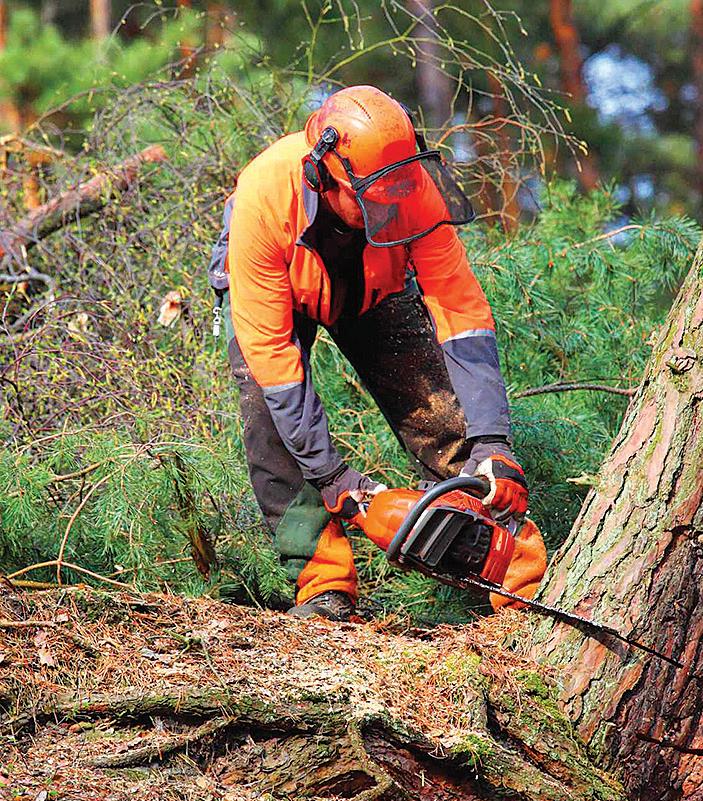


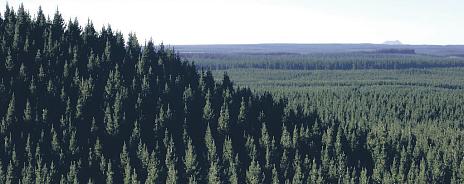
The
PF
forest management needs:

• Harvest management and log marketing
•
• Forest establishment and tending
•
• Forest valuations
• Forest valuations
• Due diligence on forest purchases/sales
•
D Stuart Forestry Ltd Independent Log Buyers Forest Managers Harvesting Marketing & Establishment
03
stuartforestry@outlook.co.nz
submit corrections by the Final Proof Alterations system at a time that suits you. Just follow the in CORRECTIONS button right from there - no new emails
Ph
542 3769 Mob 021 223 1099
er tisingpr or
Professional Forest Management
of
Company
Choice.
Contact us now for all your
Olsen is the leading provider of independent professional forestry services in New Zealand.
forest management needs:
Harvest
and
management
log marketing
Forest establishment and tending
Due
CH-8994297AA Nelson 03 544 0066 Blenheim 03 577 6675 customer booked size CSQ QUART advert ID CH-8994297AA (100%) publication Adv Supp NEM dimensions 12.3X12.4, cms section CUSTOM SQUARE proofed 9/06/2021 12:22:08
diligence on forest purchases/sales
by the Final Yo u can now TOL system at a time that
you. in your ad proof CORRECTIONS
or submit corrections
suits
button right from there -
of
Choice.
Contact us now for all your
Nelson 03 544 0066 Blenheim
577 6675 customer PF OLSEN booked size CSQ advert ID CH-8994297AA dimensions 12.3X12.4, SQUARE proofed 9/06/2021
Professional Forest Management Company of choice PF Olsen is the leading provider of independent professional forestry services in New Zealand. Contact us now for all your forest management needs: • Carbon accounting and advice • Harvest management and log marketing • Forest establishment and tending • Forest valuations • Due diligence on forest purchases/sales With 25 years experience in the industry the Tasman Forest Management (TFM) team offer services in: • Forest and woodlot harvesting • Domestic and Export Log Purchase
Forest Establishment
03
The
•
office@tasmanforest.co.nz Nelson 03 540 3177 Blenheim 03 572 7902 30 February 2023 Forestry Farming TOP SOUTH MONTHLY
OSPRI reveals NAIT tag research findings
OSPRI has announced research findings on National Animal Identification and Tracing (NAIT) tags, to determine whether the tags used in New Zealand are degenerating due to climatic factors in various parts of the country. This was in response to customer and industry concern that the current tags in use may not be fit for purpose in the New Zealand farming environment.
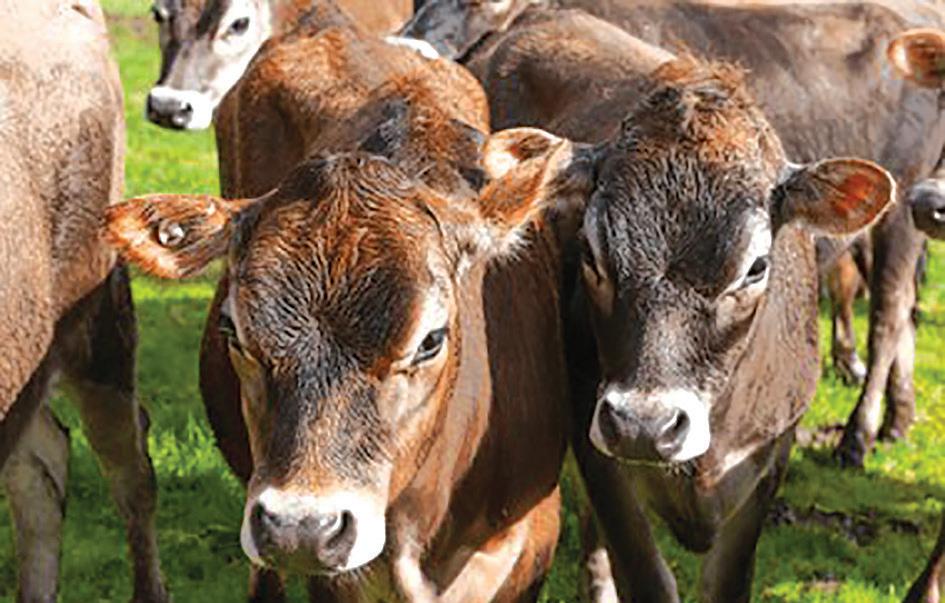

OSPRI’s head of traceability, Kevin Forward, highlighted the importance of this yearlong investigation, which was conducted by Callaghan Innovation. “Tag retention was the number one concern farmers express on issues affecting livestock traceability - part of that concern was a perception that tags were falling out earlier than would have been expected.”
“Based on research results of our international partners, and the lack of comparative research in New Zealand, we needed to determine whether the chemical make-up of the tags was a contributing factor.”
NAIT tags from the main producers were collected from slaughterhouses across the country and tested for chemical and physical defects over time. The results found there was no signifi-
can’t change in the chemical composition and hardness of the samples, regardless of age or region. Some tags showed some colour change and yellowing of the plastic, but this was deemed to be a visual change only and did not impact the durability of the tags.
“Now that that chemical composition of the tags and New Zealand’s environmental conditions have been excluded as contributing factors, this allows an increased focus on the other possible causes,” says Mr. Forward. Callaghan researchers also spent time on farm to inves-
tigate tag design features, tag applicators and the practical tagging process. During their time on-location, the main cause of tag failure identified was due to fence wire getting lodged behind the tag.
This same failure could be caused by animals feeding in scrub as well. Another identified point of failure was the ability to install some ear tags with a range of different brand applicators - this can cause issues as using the wrong brand of applicator could damage the tag and result in the tag being more prone to failure. If your cattle
New Zealand dairy goats flying to China
STAFF REPORTER
Still in its early stages, yet with the potential for this to rocket, New Zealand dairy goats are flying to China as live export. Growing international demand for dairy goats has opened up a highly-profitable opportunity for New Zealand goat farmers.
Australian-based company Austrex, a livestock exporter, has been in the business of live goat export for many years and, driven by demand, has been testing the market in New Zealand with positive results.
or deer lose their tag, damage it, or arrive at your farm without one, you need to tag and register them again. Unless they have a dairy participant code printed on them, NAIT tags can’t be assigned to, or shared with, another NAIT location.
We encourage you to report issues with NAIT RFID tags to us. With the findings of this research in hand, OSPRI remains committed to supporting farmers by providing education on how best to meet their obligations, including best tagging practices to further increase tag retention rates.
2500 dairy breed goats, including British Alpine buck and doe kids, Saanen doe kids and Toggenburg buck and doe kids, from thirty private farmers mostly from the Waikato region, are on their way to China.
The process consists of the goats going into a 30day quarantine period on three different quarantine farms in the days before they head to Auckland to catch a direct flight to China. Each goat boards the plane at about 25kg in weight with a $400 one-way ticket. On arrival they all go onto commercial milking platforms.
The benefits of goat milk has been understood in China for many years, while the demand for New Zealand goat milk formula remains high. How much of an impact China’s own goat herd building could have on the future of New Zealand’s goat powder exports is hard to estimate currently. One thing that, is easier to estimate is that given the fact goats are good breeders and commonly have five to six kids at one time, China’s herds will expand.
Cautious optimism for wool market
North Island wools were similarly very yellow however due to much wetter weather patterns.
Three wool auctions in New Zealand (two in Napier and one in Christchurch) had been completed for calendar year 2023 at time of writing however the market had showed little movement compared to the end of 2022, and a distinct lack buying power from China was certainly a major contributor.

A large proportion of crossbred wool types were carrying substantial degrees of discolouration (yellowness) due to the dry and humid conditions experienced in the South Island, whilst
Yield measurements were dropping like a stone for many South Island wool types due to the dry conditions but, generally, very good grass supplies creating heavy grease content across most fleece and oddment types.
Wool flows into warehouse facilities across the South Island had been relatively slow throughout January, but with shearing ramping up particularly in Southland into February.
This trend was expected to change although some growers could opt to hold their shorn wool on farm until there is either a market price improvement or other more urgent on farm jobs reach completion before wool
bales get transported to broker or merchant stores.
Along with New Zealand coarse wool prices being in the doldrums are other producers of similar wool types.
Latest information from the British wool market, just prior to the end of December last, was that while there had been a slight improvement, prices were far from great with sales achieving around 80% clearances and their market indicator around 2% cheaper than at the same time in 2021.
Fine wool sales in both South Africa and Australia maintained good levels throughout January with clearances at auction recorded as being in the low to mid 90% ranges.
Lamb shearing is also underway
at present and growers need to take particular care with their wool preparation due to significant discounts for those wools which may contain black fibre, are poorly skirted leaving yellow discolouration, or contain vegetable matter in the form of seed and burrs.
Usually at this time of year wool exporters have orders for well prepared crossbred lamb’s wool measuring approximately 30.5 microns or finer and preferably 0.0% or an absolute maximum of 0.1% vegetable matter contamination, therefore in-shed work is of the utmost importance.
Due to the wet conditions experienced in many North Island areas for several months, it’s likely that many of their lamb’s wool lines will show considerable
yellowness, possibly benefitting South Island wools which have been prepared well.
Despite the continuing poor coarse wool prices, buyer interest from mainly European based processors has been reasonably firm of late and with recent trade shows taking place during January in the Northern Hemisphere, many exporters have reported good quantity sales for wool deliveries into the second half of 2023 and beyond.
With China recently indicating a re-opening of borders there may also be a hint of improved wool trading to that country which would no doubt be welcomed by all but, as I have learned during the past several decades, don’t hold your breath!
That’s my view.
Livestock Farming TOP SOUTH MONTHLY February 2023 31 livestock
Recent research highlights factors that impact tag retention rates. Photo: Supplied.
Curbing fertiliser costs
ed is the physical structure of the soil. With over 5,000kgN/ ha held in the top 25cm of most pastoral soils, there’s no shortage of nitrogen.
Fertiliser expenditure is usually the largest outgoing after mortgage payments, which are currently lifting to levels not seen for close on thirty years.
Fertiliser costs have already risen dramatically, particularly that of manufactured, imported, high-analysis products.
With a drop in the cost of international shipping a significant reduction could be expected however historically prices have declined far more slowly than they have risen.
This means that without cutting fertiliser inputs there will be, for some, serious pressure on farm profitability, the difference between costs and income, this season.
The question for many will be how little fertiliser can be applied this autumn without risking lower levels of pasture and crop production.
It’s a question there’s no easy answer to because of the number of factors involved. Historic inputs which are reflected in soil test figures are important.
In situations where higher than maintenance inputs over many years have been the norm, not applying fertiliser this autumn is unlikely to significantly reduce pasture growth over winter and early next spring unless there is a reliance on synthetic nitrogen. The other factor often disregard-
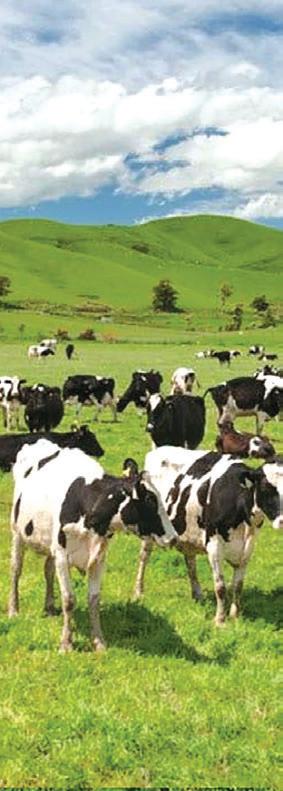
It’s availability for plant uptake that’s the issue and the amount and depth of crumb will largely dictate the amount plants can utilise.
As a rule of thumb the areas of the farm that are softest produce the most feed. Compacted soils with poor root penetration grow the least and are slowest to recover in autumn.
There’s a low-cost, long-term solution that all farmers, particularly where magnesium is an ongoing requirement, should consider.
Golden Bay dolomite has several unique qualities that make it worthy of serious consideration.
It is a powerful soil conditioner, improving pore space in heavy clay-based soils while adding a little stickiness to light sandy soils. Containing both magnesium and calcium carbonate, an autumn application of typically 250kg/ha reduces the amount of lime that is required to maintain soil pH.
Magnesium helps with uptake of phosphorus by plants, reducing the likelihood of growth being limited by a lack of phosphorus between now and next summer. Beneficial soil biology, earthworms along with microbes, respond positively to extra calcium and regular small inputs help with the digestion of dung, old root, and litter, on and near the soil surface.
Dolomite has been regarded as an expensive form of magnesium, primarily because of the cost of cartage from Golden Bay, however much of the magnesium oxide used as an alternative comes from China, considerably further than from Golden Bay. Dolomite need only be applied once a year, with autumn being ideal, to provide 12 month protection of animals from a magnesium deficiency.
The message from long term dairy clients is that cows down behind hedges at 5 in the morning have quickly become a thing of the past.
The requirement for dusting breaks on a daily basis is largely eliminated, as is the necessity to add large amounts of magnesium chloride or sulphate to drinking water. Heavily-dosed drinking water is unpalatable, increasing the likelihood of animals drinking from puddles and production being limited by a lack of clean fresh drinking water.
Dolomite is a natural product originally laid down on the floor of the ocean over millions of years. With land movement it has become compacted and able to be mined in the same way as ag.lime.
Because it is finely ground the improvement in overall animal health is rapid, with first time applicants noticing an improvement in pasture palatability within a month of application. For a cost delivered to property call 0800 436 566 (0800 4DOLO MITE).
Managing nutrient loss
 JOHN BARNES Managing Director Fertilizer New Zealand
JOHN BARNES Managing Director Fertilizer New Zealand
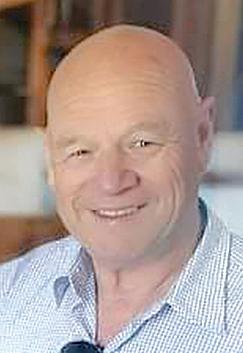
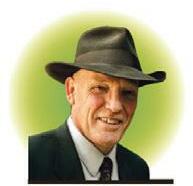
Every industry has readjustments from time to time and farming is not exempt. There is a lot of negativities as I travel between regions, and rightly so. There are so many different issues that face farmers today but that doesn’t mean that there is not a way through this troublesome situation.
Let us go back to bas\ ics. We all need food, usually three times per day. Primarily this food has its origins on a farm somewhere in the world. These farmers secure land and toil hard for long hours to produce food or the raw nutrients needed to produce food. Most farmers are passionate about what they do. They want to provide the best produce. The situation at present is that they are being hit with limitations that are often unfair.
Alongside this is the current price of fertiliser which is quite cyclic. The last time prices climbed up this high was in about 2007/8 and then they came back down again. We are already seeing a decline in some fertiliser prices.
This leads us to another question. Do we really need as much nutrients as are being prescribed
by some companies? In my opinion, I don’t think so. Most farmers will not be aware that many companies suggest that farmers need to put on four times more than the plant needs.
Of course, there are reasons for this. Leaching, loss through a variety of ways and situations cause some of the fertiliser to be not available to the plant. But just imagine if there was a way to make these valuable nutrients more available to the plant and we could cut back the amount of fertiliser applied. Not such a great idea for fertiliser companies but from the Fertilizer NZ point of view “It’s a great idea”. We believe that the natural nutrient cycles need to be activated. That is exactly what we do. Yes, we provide cost-effective fertiliser programmes, but we also address the nitrogen cycle, the phosphate cycle and a variety of other cycles which can occur within a living soil.
If you believe you can’t afford fertiliser this year, and this could well be the case, we will show how we can create a natural cycle happening within your farm’s soils. It will save you money and create a better system for you. Out of any adverse situation can come an unknown benefit. Give us a call today on 0800 337 869 or visit www.fertnz.co.nz


32 February 2023 Fertilizer Farming TOP SOUTH MONTHLY
fertilizer
Got something to buy, sell or promote? Contact us: sales@ nmf.co.nz Farming TOP SOUTH
horticulture
Egg on our faces
NADINE TURLEY
HortNZ
New Zealand ran out of eggs just after Christmas. This wasn’t caused by Covid, supply chains or the weather, which have been behind other recent perishable food shortages and price rises.
No, behind New Zealand’s egg shortage was egg producers’ response to regulation that wasn’t fit for purpose, was changed midstream, resulting in unrealistic timeframes and confidence being undermined. Don’t get me wrong. Improving the animal welfare of chickens
and all animals is a good thing, just like reducing environmental impact and improving freshwater quality are good things.
The point I am making here is the very real and immediate effect of poor regulation and a domino effect on food production, and the stark consumer impact, even in a land of plenty like New Zealand. The Egg Producers’ Federation says two years ago, there were around 4.2 million egg laying chickens. Today, that figure sits at around 3.5 million, with about 3.8 million birds needed to maintain supply.
Why was this? The Egg Produc-
ers’ Federation says it was because of the number of producers exiting the industry, thanks to a lack of confidence due not only to the changes in regulation and the costs associated with that but also, due to inflation and increases in feed grain prices –feed being 65 to 70% of the cost of producing an egg. Sounds like a perfect storm and also a situation not too dissimilar to the one that fruit and vegetable growers are facing. That is, poorly thought through and rushed regulation that is not coordinated across government, coupled with ever increasing production costs, the labour shortage and seemingly never-ending weather that’s not ideal for growing.
What impact is this situation
having? More and more fruit and vegetable growers are considering making the heart-breaking decision to leave the industry,

The food and fibre sector is fast drowning in uncoordinated, complex and unrealistic regulation
Nadine Turley
because it is just too hard. Some growers have already made this decision and are selling up or just
mothballing their operations. The food and fibre sector is fast drowning in uncoordinated, complex and unrealistic regulation. We know and accept we must do better, just like the egg producers knew and accepted. However, the way the current government is going about change is not the way to do it, just after a pandemic when the world is still in social and economic turmoil.
This year, we hope for more listening by the government, and swift and practical action in the right places, particularly in the area of Resource Management Act reform. The government’s current rushed and reactive approach to change is just not right. The only outcome will be more egg on our faces.
Baleage wrap reflects badly on farming
STAFF REPORTER
A knock-on effect of the spring flood events has been the amount of baleage wrap found along the Maruia and Buller Rivers which is not only bad for the environment but also reflects badly on the farming community in the area.
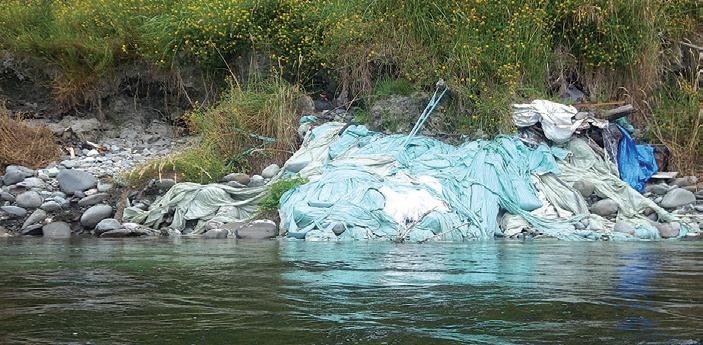
Local Murchison farmer Brian Dineen says, “Farmers are dealing with it. Murchison farmers have responded responsibly to the problem. They are working alongside the local rafters to clean-up existing baleage. This is the second time we’ve had this problem since I’ve lived here, we need to re-think, to prevent this happening again. We need to protect our farming image for the future.”
Jane Stuart, of Tasman District Council, says these flood events are unprecedented. She recommends farmers think about where they store baleage or position farm rubbish pits. She knows baleage lost is a huge loss and expects they will be already thinking about where this seasons baleage
and used wrap is stored to prevent any future loss.
She is asking farmers to be on the lookout for historic rubbish tips near waterways which are at risk of opening up during a flood event and causing future embarrassment for the industry.
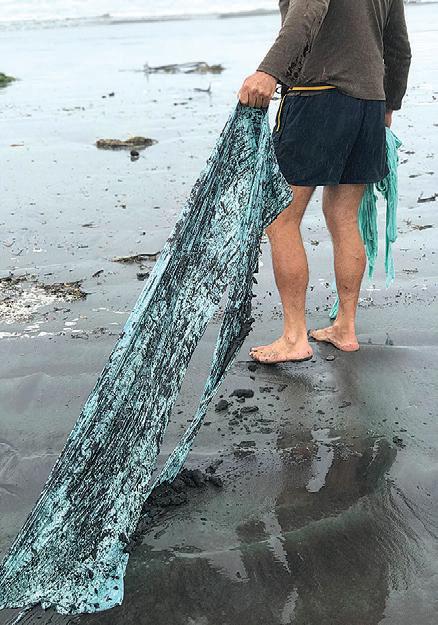
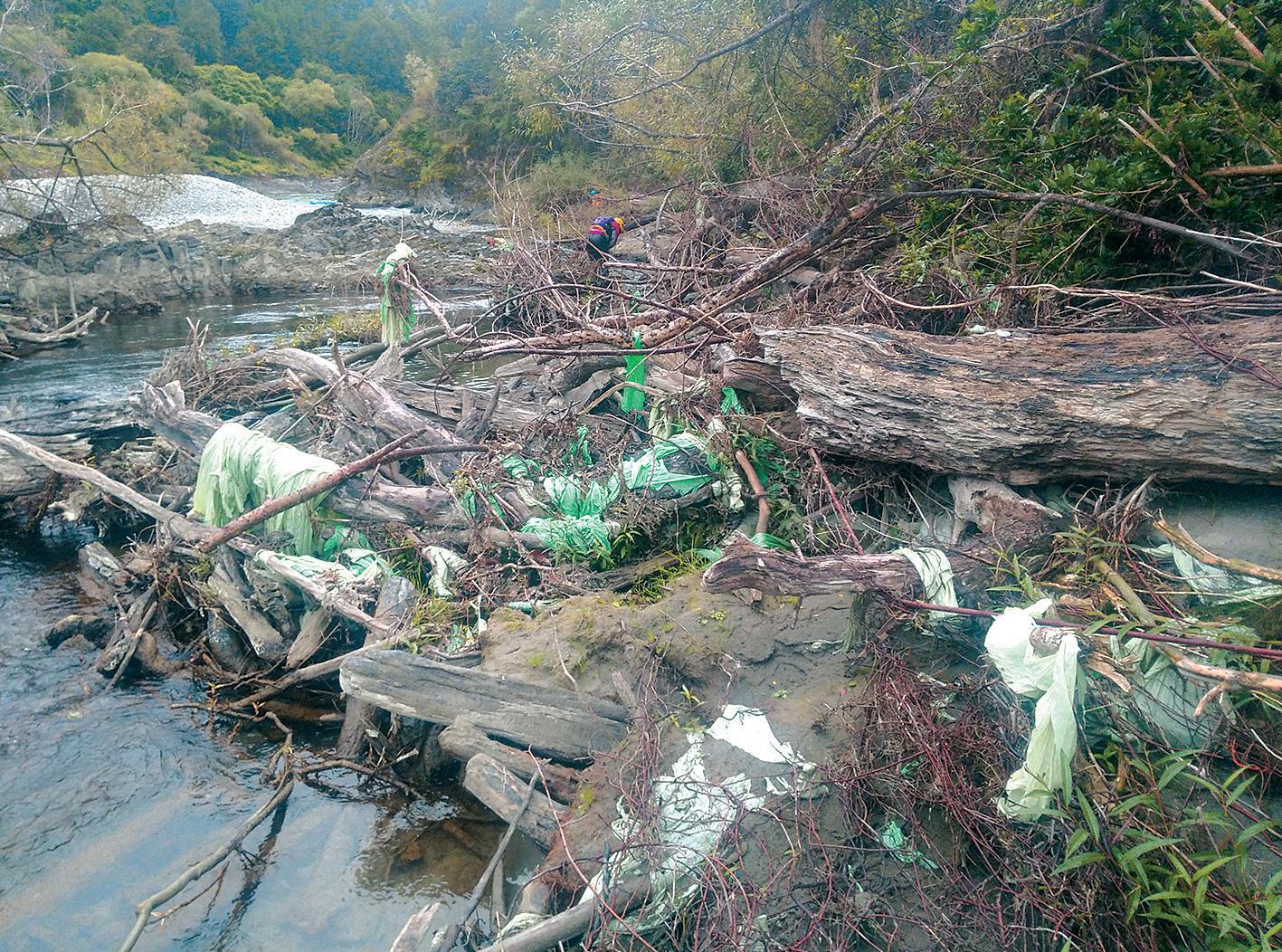

Any questions can be sent to rural.info@tasman.govt.
nz or to their local Federated Farmers branch. Baleage wrap re-cycling is available from Plasback Recycling.
Brian Dineen says a small amount of financial support was given by the local Federated Farmers branch to support the clean-up effort at a recent meeting. This is likely to be a oneoff as the board believes farmers need to be aware and take personal responsibility.
He says, Tasman District Council has also been helpful and want to meet with farmers across sectors to position the districts landowners to meet regulation.
He recommends farmers watch for the up-coming farm planning workshops and make time to get along.
Horticulture Farming TOP SOUTH MONTHLY February 2023 33
Unsightly Baleage wrap an embarrassment for farmers. Photos: Supplied.
motoring
“Live long and prosper”
Country MOTORING
with Ken Strungnell

Since 2016 the Mazda CX9, the biggest passenger vehicle for Mazda, its ‘star’ is the only 7 seater petrol in the range. [The CX8 is a diesel.]


I first drove the 2.5 litre turbo petrol 170kW 420Nm “Crossover” in early 2017 and was mightily impressed. Seven years since launch, I wondered how it stacked up to today’s competition and what has changed? Well I couldn’t find any changes and it does its job very well still. Okay, the price at $70,090 plus the newly imposed government ‘fine’ of $2817.50 bringing the increased cost to a nearly $9000, has changed, but that’s all, other than adding a higher spec’Takami’ model. The Takami adds surround camera 20” gloss alloys [as opposed to metallic silver] and premium leather with both heating and ventilation, for an extra $4600.
So Mazda got it right in the ‘mid teens’ and the 9 has returned its parent good sales volume in its sector.
However, it does feel a little dated within a sea of new models with full length panoramic versions, offering just the small single sunroof.
I’d also like to see more info on the heads up display [HUD] and the surround camera function standard. But that’s being picky as the CX 9 has weathered very well. As Mazda has chosen not to take the MUX seven seater SUV version of the D Max that the BT 50 is based on, the CX9 is the only family wagon, and with only 2000kg towing maximum limits its market somewhat. Trailer Sway Control, limiting danger from ‘tail wagging’ is appreciated. Sitting on a monoquoc chassis the 9 handles extremely well for a large vehicle. It holds the road and launches with alacrity thanks to the turbo.
The pleasing sound of the albeit 4 cylinder engine on full turbo noise, is addictive.
Overtaking is simple and fast, with use of the paddle shifters quickly accessing a lower cog. Free revving the motor never feels stressed, allowing the pilot to enjoy the drive.

We drove over the Alps via the Lewis through almost to Grey-
mouth turning off through to Brunner and back over the Arthur’s and Porters Pass’s averaging 9.8l/100km at 78km/hr average speed. Corners are flat and seats, at least the front pews, very supportive. We did load up with five and access is easy and the rear seats likewise comfortable. As is the case with many three row vehicles the 6-7th seats while providing surprisingly good hip room are compromised in height and leg room. The slide and fold 2nd row do provide great access
though. Folding this last pair down allows for huge luggage space of nearly 800litres.
Safety is up to the mark too with AEB, ABS, ABD, DSC Advanced City Braking with night time pedestrian detection. Blind Spot, Radar Cruise, Traffic Sign Recognition, [on HUD] Driver Attention Alert all standard making for effortless and safe progress. Airbags covering front side and curtain for protection are likewise fitted.
I-stop limiting wasteful idling is unobtrusive as is hill hold and the electric park brake system. Mazda will be releasing a CX 80 for the CX8 and CX 90 for the 9 later this year, so it will be interesting to see the changes to an already competent well-sorted vehicle. We could expect to see some form of electrification, be it pure EV or hybrid.
Till then and beyond, the CX9 ‘lives on and prospers’ as a very satisfying and comfortable family wagon.
34 February 2023 Motoring Farming TOP SOUTH MONTHLY
The familiar ‘Family Face’ of the Mazda CX9.
Neatly rounded tail of the biggest Mazda Wagon tows 2000kgs.
Waimea Rural Connections at it again
STAFF REPORTER
Some of you will be starting to recognise the name Waimea Rural Connections.

You may have attended one of their many events over 2022. Well, it’s 2023 and they are at it again with opportunities to connect with others from the primary sector in a relaxed, friendly and fun way.
Waimea Rural Connections, a charitable trust, provides opportunities for farmers, growers and primary sector workers to come together to upskill, network and connect.
The group focuses on reducing the isolation that many face in the Primary Industries, bringing rural families together, as well as connecting people of all ages and stages in the agriculture industry.

“The ag sector is a tough sector to be in, often working long days on your own in remote locations. There are constant challenges coming at you from every direction,” says Rachel Fraser, treasurer for Waimea
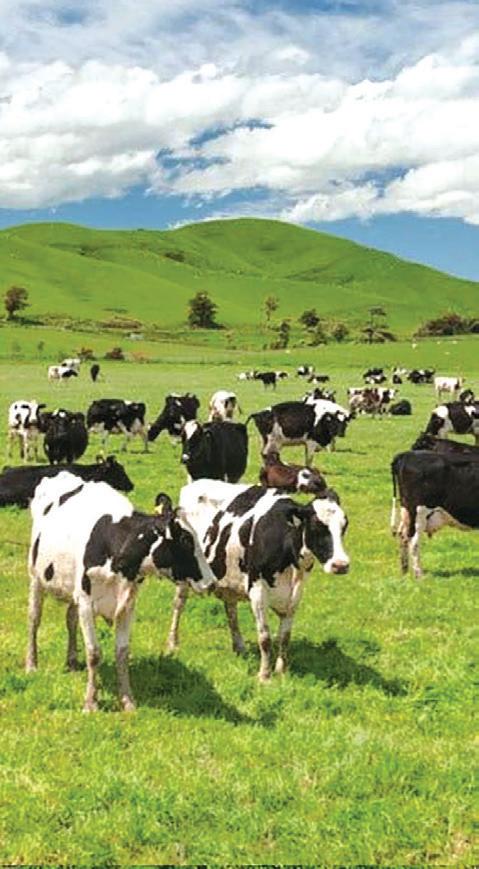

Rural Connections and Associate Partner at Findex Rural Accounting.




“Human connection is good for you, it can boost your mood especially when you are around others in the sector who also experience the same constant challenges.”
Studies show that by neglecting our need to connect, we put our health at risk. Connections matter. Strong ties with friends, family, workmates and the community can provide us with happiness, security, support and a sense of purpose.
Being connected to others is important for our mental and physical well being and can lower anxiety and depression, help us regulate our emotions, lead to higher self-esteem and empathy, and actually improve our immune systems.
With this in mind, Waimea Rural Connections is about to host some regular family-friendly fun nights named ‘Kai and Catch Up,’ starting 24th February.

“Kai and Catch Up is about eating kai and having a catch up,” laughs Waimea Rural Connections Co-Ordinator Peggy Storer. “We want you to bring the kids, have a meal on us and enjoy connecting with others” The reality is that we’re living in a time of true disconnection.
With cost of living, and mortgage rates drastically rising it’s easy to get into the eat-work-sleep trap which, over time, can form an unhealthy pattern. Connecting with others is a great way to refuel, recharge and feel refreshed.
A Friday night out with free meal, good conversation, free kid’s games and activities, some kind of social sport on offer for those who want to join in, and a cash bar that also has non-alcoholic options… what’s the catch?
“We need you to come!” beams Peggy,” And bring your workmate, or arrange to meet a friend here. If you don’t know anyone you soon will, we are all friendly, just come!”
FARMERS DIRECTORY
AVAILABLE NOW Give us a call on 03 577 9238 to find out more. Looking for storage? We have long and short term storage available for household item, boats, caravans, and trailers. Marlborough based. GOATS WANTED DION BURGESS 022 199 7069 ALL BREEDS MALES / FEMALES / WETHERS FERAL GOATS DAIRY GOATS MEAT BREEDS ANY NUMBERS PROMPT PICK UP WILL BE ARRANGED SOUTH ISLAND ONLY dion@webuyanygoat.co.nz www.webuyanygoat.co.nz News Farming TOP SOUTH MONTHLY February 2023 35
Got something to buy, sell or promote? Contact us: sales@nmf.co.nz Farming TOP SOUTH MONTHLY












36 February 2023 Advert Farming TOP SOUTH MONTHLY FILCO SOLUTIONS FARM & SPORT ANNESBROOK NELSON www.filco.co.nz FILCO CALL US NOW! 03 547 2420 Rod Payne & Dave Filer If you need to upgrade your Yamaha workhorse it is vital you back order now. Powerful 850cc, 4WD, larger tip deck, high profile suspension. Wolverine X2 Ute IN STOCK NOW! $28,607excl Specialised farm bike a reliable little worker $4086 excl Kodiak 450 Kodiak 700 350 4WD Grizzly $15,060 excl Power steering, 4WD $17,451 excl $9564 excl Power steering, 4WD Perfect lifestyle workhorse, RELIABLE AND TOUGH MULE PRO MX $22,604 excl KVF 2WD GREAT PRICE AT 4 Wheeler solid performer on flats and roaded hills. $7387 A fond farewell to this top farm bike, limited stock so be quick. Once they’re gone, no more! $6343 KL250 STOCKMAN We only have limited numbers so upgrade now. Trades welcome!






































































































 – STUART PRITCHARD
– STUART PRITCHARD












































































 TONY ORMAN
TONY ORMAN























 JOHN BARNES Managing Director Fertilizer New Zealand
JOHN BARNES Managing Director Fertilizer New Zealand





























